Albania is one of Europe’s most underrated destinations! With its stunning beaches, dramatic mountain landscapes, and cities brimming with history, it’s easy to see why Albania is quickly becoming a must-visit destination.
From the breathtaking views of Lake Komani to the rich culture found in towns like Krujë and Shkodër, there are some amazing things to do in Albania.
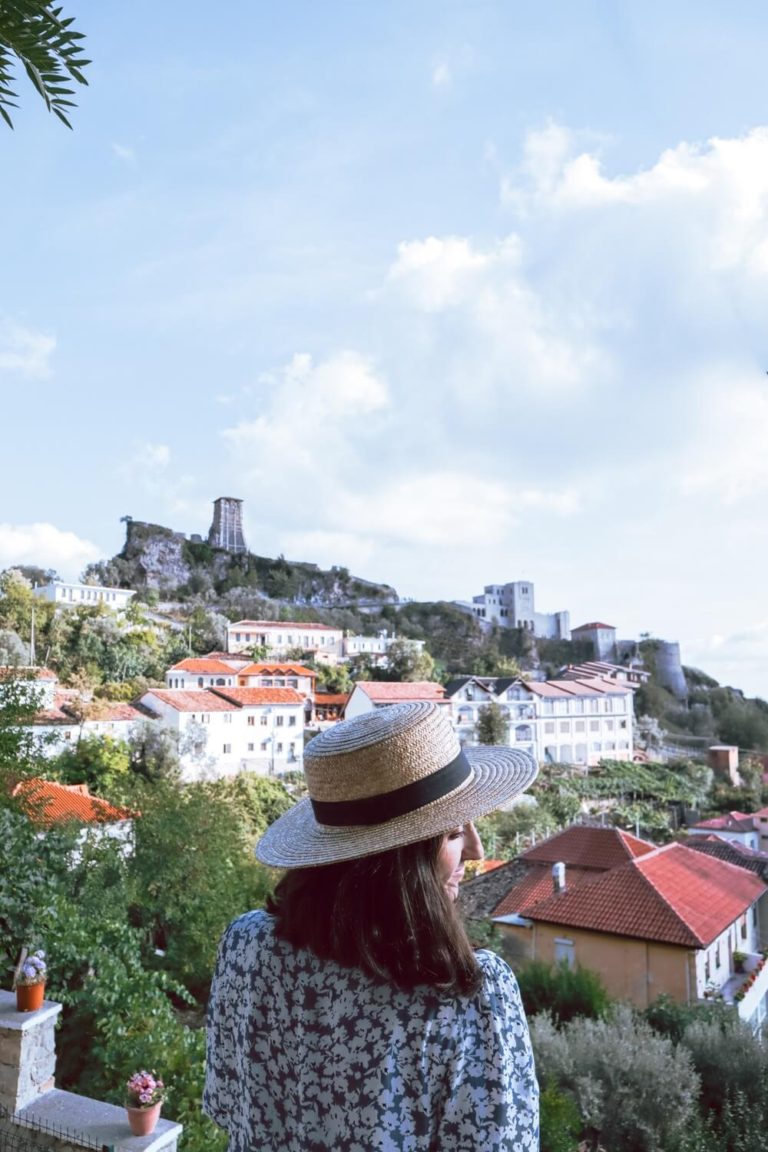
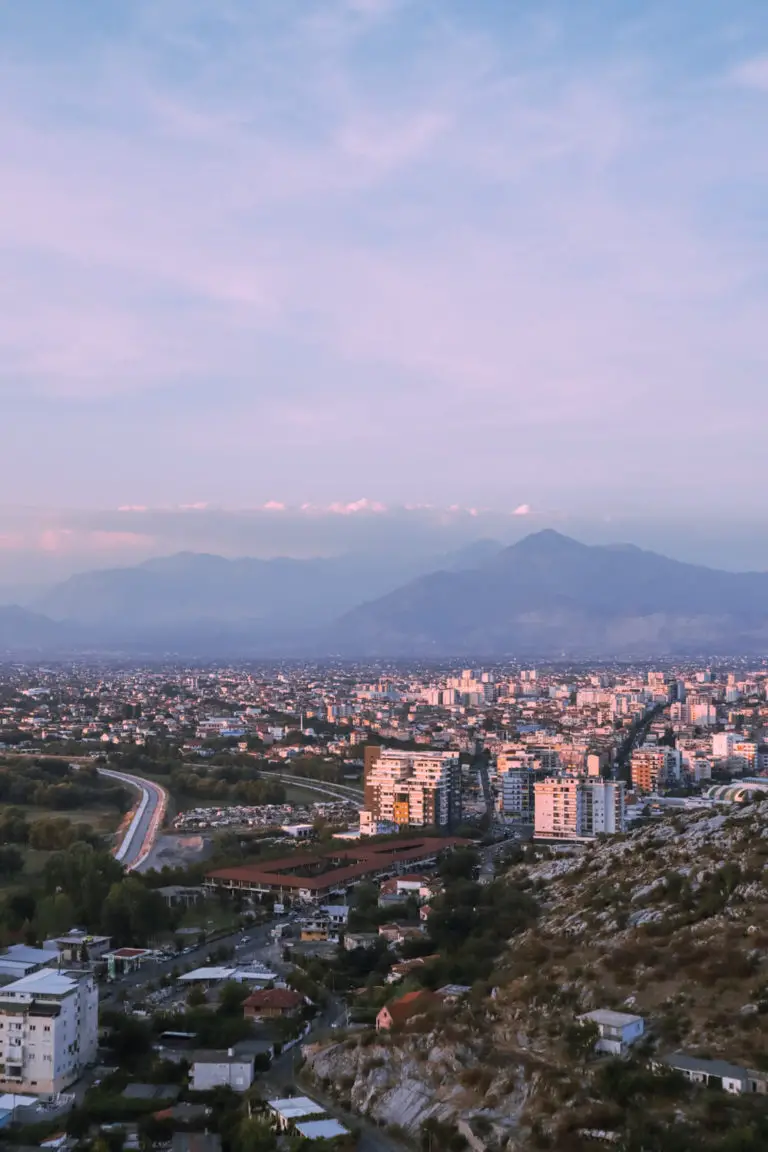
My trip to Albania was inspired by beautiful social media posts showcasing its stunning landscapes, which quickly moved it to the top of my travel list. I’m happy to report that it didn’t disappoint!
It’s definitely one of my favourite trips so far, and I believe Albania is on track to become as popular as Croatia.
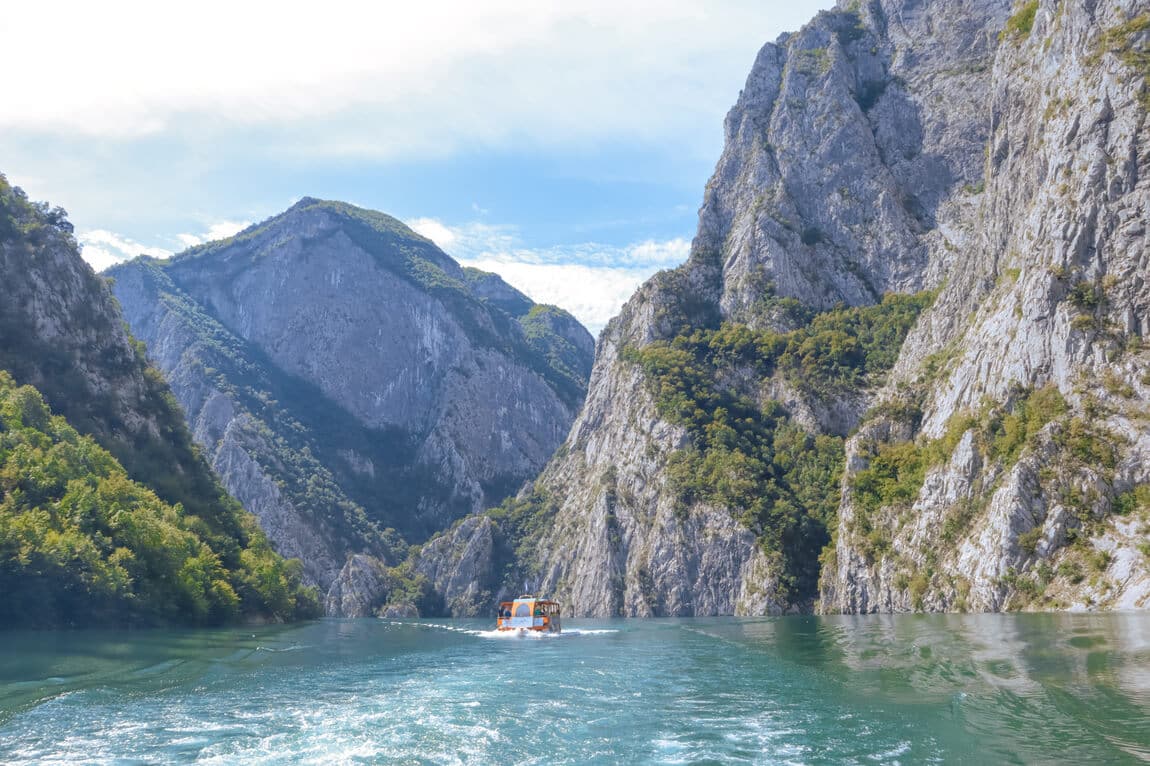
In this guide, I’ll share a comprehensive 10-day Albania itinerary based on my personal experiences, covering the best places to visit and things to do.
If you’re short on time, don’t worry! I’ve also included a condensed 7-day version of the itinerary, so you can still enjoy the highlights of Albania without feeling rushed.
Whether you’re looking for an adventurous Albania road trip or a more relaxed cultural experience, this guide will help you make the most of your time in this beautiful country.
Be sure to also check out my things you should know before visiting Albania to become fully prepared for your trip!
What is Albania like?
Albania is a mix of history, culture, and stunning landscapes. From ancient ruins to beautiful beaches, the country offers a variety of experiences all within a few hours’ drive.
The charm of Albania is in its contrasts. Medieval castles stand alongside pristine coastlines, and bustling cities like Tirana contrast with peaceful rural villages.
With a rich history influenced by the Greeks, Romans, and Ottomans, Albania’s heritage is visible in its architecture, traditions, and culture.
Albania is home to some of Europe’s most untouched nature, from the Albanian Alps to the Ionian and Adriatic coasts.
The people are warm and welcoming, making it a fantastic place to experience authentic local life. Whether hiking, exploring history, or relaxing on the beach, Albania offers something for everyone.
What is the best time of year to visit Albania?
If you’re planning a trip to Albania, you’ll be pleased to know that this beautiful country can be visited year-round. Whether you’re seeking the warmth of the coast or the coolness of the mountains, Albania offers something for everyone in every season.
Here’s a short breakdown of what to expect in Albania during each season:
☀️ Summer (June–August): perfect for beach lovers and outdoor adventurers
Expect average highs of 30°C with 10–12 hours of daylight. The Albanian Riviera is ideal for sunbathing and exploring, though the coast gets busier in July and August. While the beaches are popular, the rest of the country remains peaceful. Inland spots like Theth and Gjirokaster provide a quiet retreat.
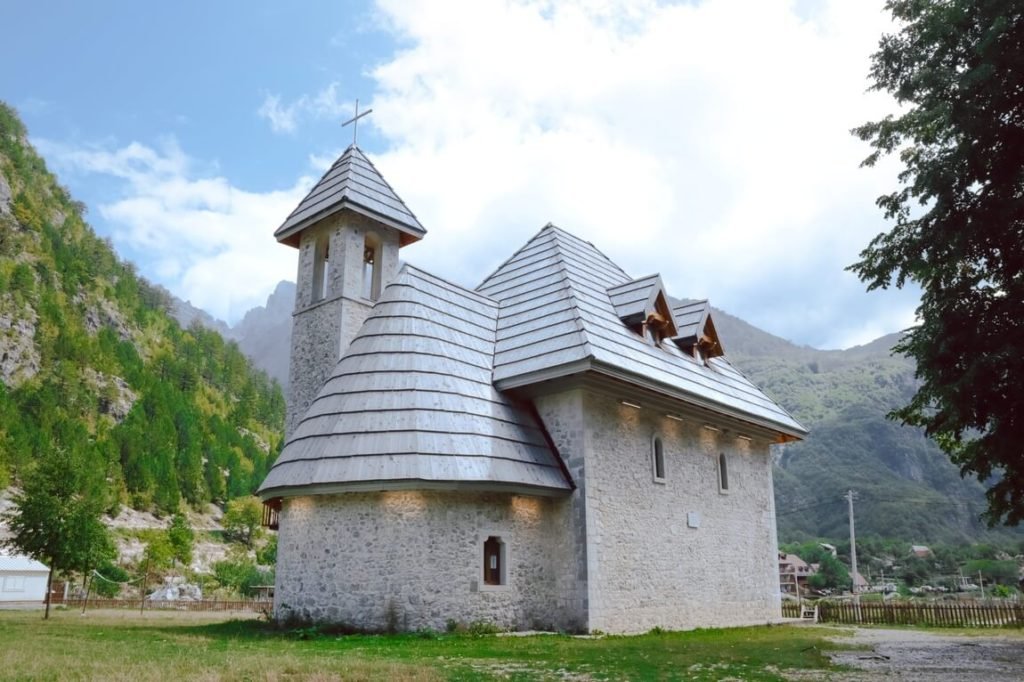
🌸 Spring (April–May): ideal for sightseeing and hiking
The coast starts warming up (temperatures ranging from 15°C to 25°C), but it’s still free from crowds, especially in the Albanian Riviera. The countryside blooms with vibrant flowers, creating picturesque landscapes.
🍂 Autumn (September–October): pleasant temperatures between 20°C to 25°C with less crowds
September is still warm enough to enjoy the beach, while October is perfect for exploring Albania’s historical sites and hiking in areas like Theth or Valbona. The weather is great for outdoor activities, and the landscapes are stunning. I visited in September and loved it!
❄️ Winter (November–March): chilly but still beautiful
While the coast gets chilly (5°C to 10°C), the mountains offer snow and winter sports. Cities like Tirana and Shkoder experience milder winters, making it a good time for a quiet cultural experience. It’s a peaceful season for those looking to escape the crowds.
The best time for an Albania road trip really depends on what you’re looking for:
- Winter offers a serene getaway and winter activities in the mountains.
- Summer (June–August) is best for beach lovers, but expect big crowds
- Spring and Autumn are ideal for hiking and sightseeing.
How many days in Albania?
When considering how long to spend in Albania, it’s important to remember that while the country isn’t very large, the lack of highways means that even short distances can take quite a bit of time to travel.
The landscape is incredibly diverse, from the rugged mountains inland to the stunning beaches of the southern coast.
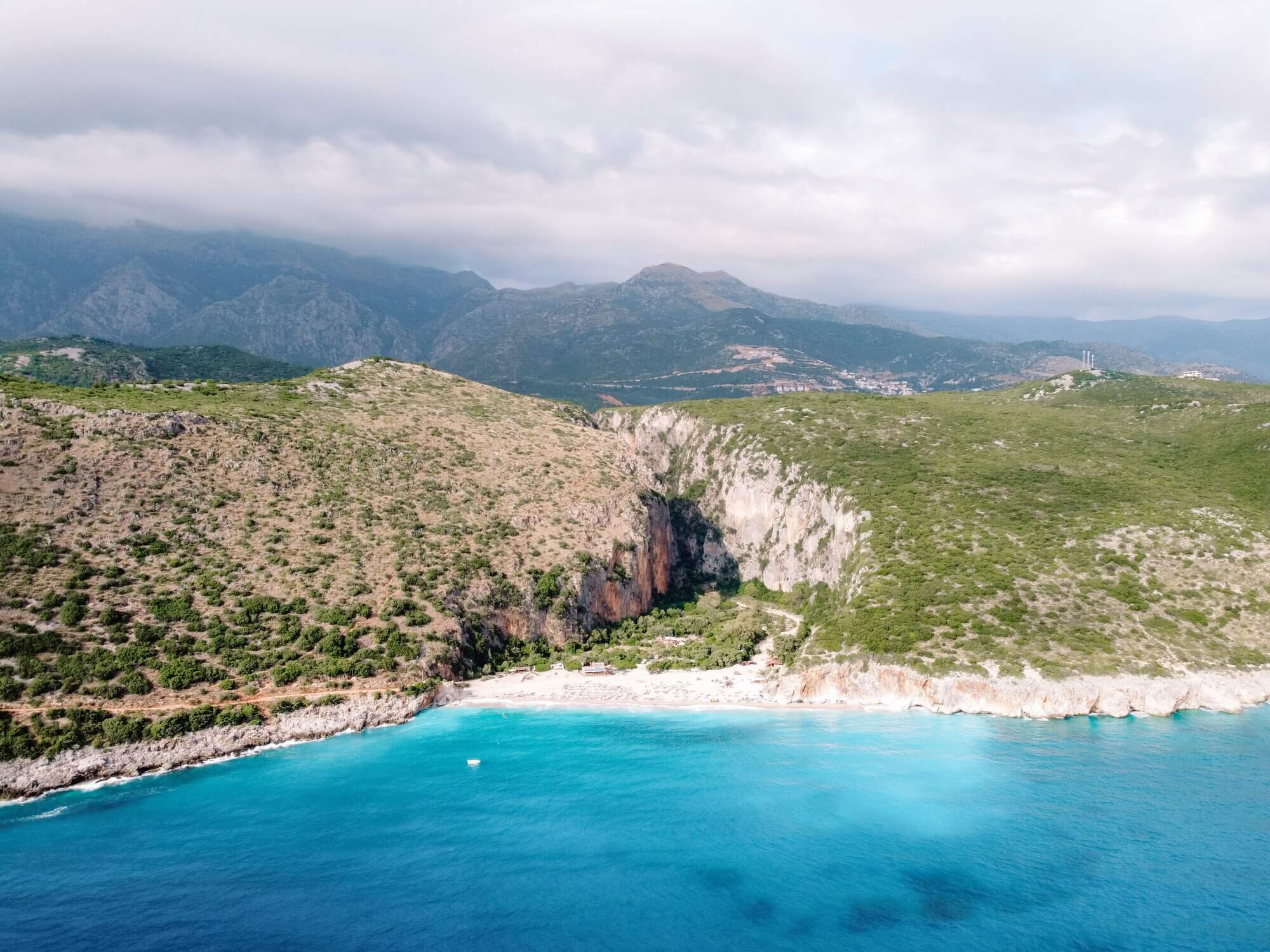
For a comprehensive trip, 15 days is ideal. This allows you to fully explore the country, including its historical sites, hidden gems, and beautiful coastlines.
However, if you’re short on time, you can still experience the main sights in 10 days. A 10-day itinerary will give you a well-rounded view of Albania’s highlights, from Tirana and Gjirokaster to the beaches of Ksamil and Saranda.
In this post, I’ve outlined a 10-day itinerary that covers the key destinations, as well as a 7-day alternative for those looking to explore Albania in a shorter time frame.
How to get to Albania?
Albania is easily accessible, especially if you’re planning a trip to Albania from Europe. The country’s main international gateway is Tirana International Airport (TIA), located in the capital.
Tirana is well-positioned in the middle of Albania, making it a great starting point for your travels.
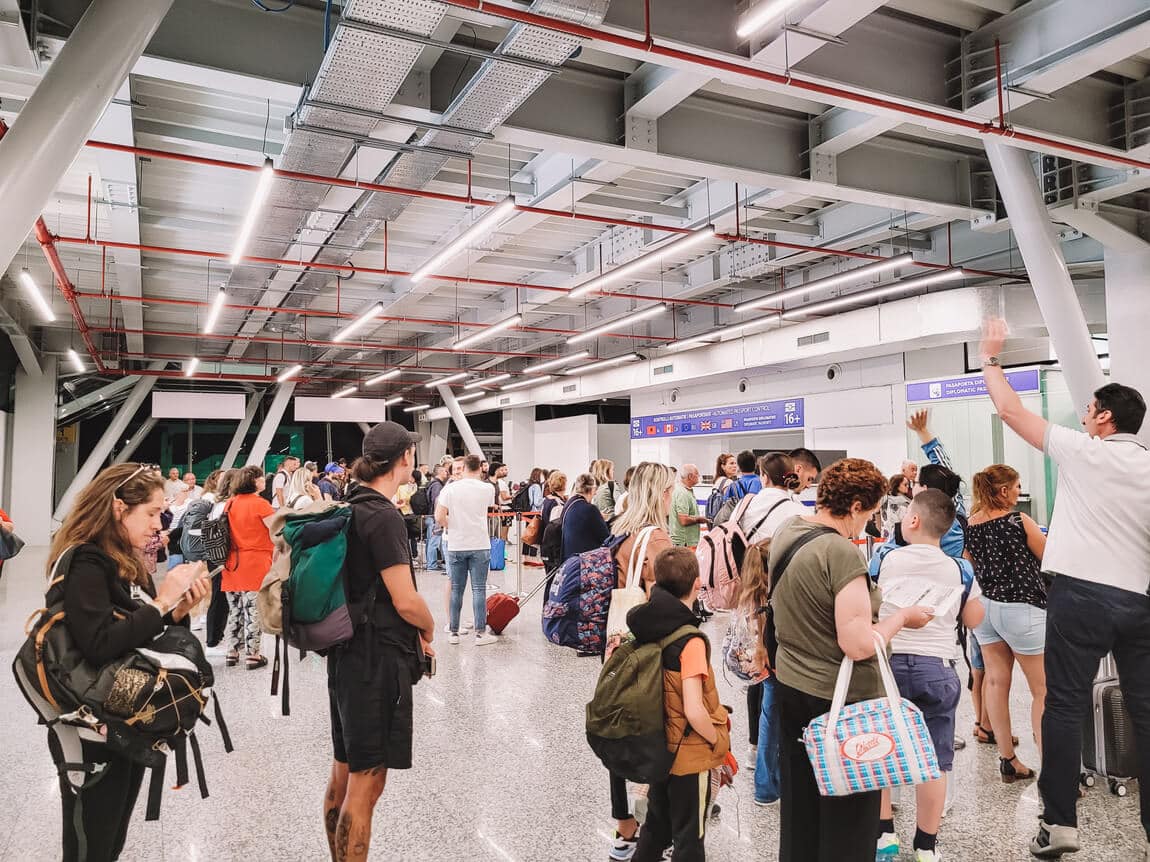
There are several direct flights from Albania from many European cities. Some of the cities with direct routes include Milan, Berlin, Paris, and London. These connections make it straightforward for travellers from across Europe to reach Albania without needing a connecting flight.
Getting to Tirana from the Airport
Tirana International Airport (TIA) is located about 18km from the city centre, and if you haven’t rented a car, there are several ways to reach downtown Tirana. Here are the best options:
1 – Rina Express Bus (4€, ~30 min) – The most budget-friendly option, running every hour from 6 AM to midnight. The bus stops at Skanderbeg Square, making it a convenient choice for travellers staying in the city centre. Check the most up-to-date information about Rina Express Bus.
2 – Taxis (25€, ~20-25 min) – Readily available outside the terminal. While taxis are the fastest option, make sure to agree on a fare before starting your trip to avoid overcharging.
3 – Ride Apps – Although Uber doesn’t operate in Albania, local alternatives like Speed Taxi and UPs Taxi work similarly. You can request a car through the app, but keep in mind that payment is in cash.
What is the best way to travel in Albania?
The bus network in Albania is functional but not the most reliable for tourists, and trains are virtually non-existent. So, renting a car in Albania, it’s definitely the best way to get around.
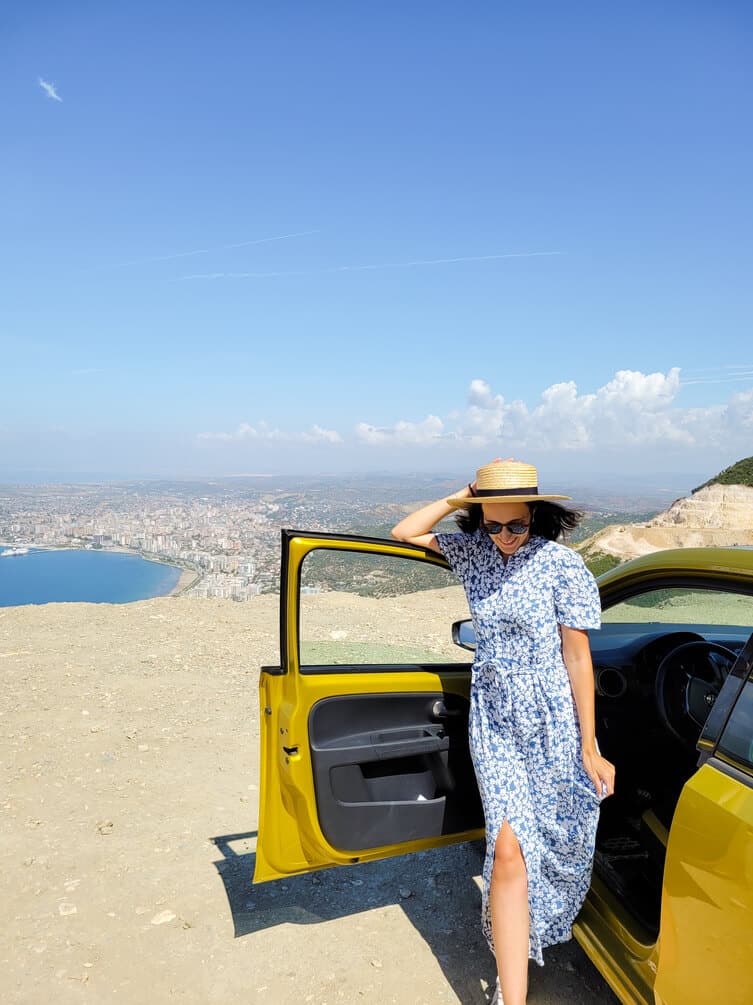
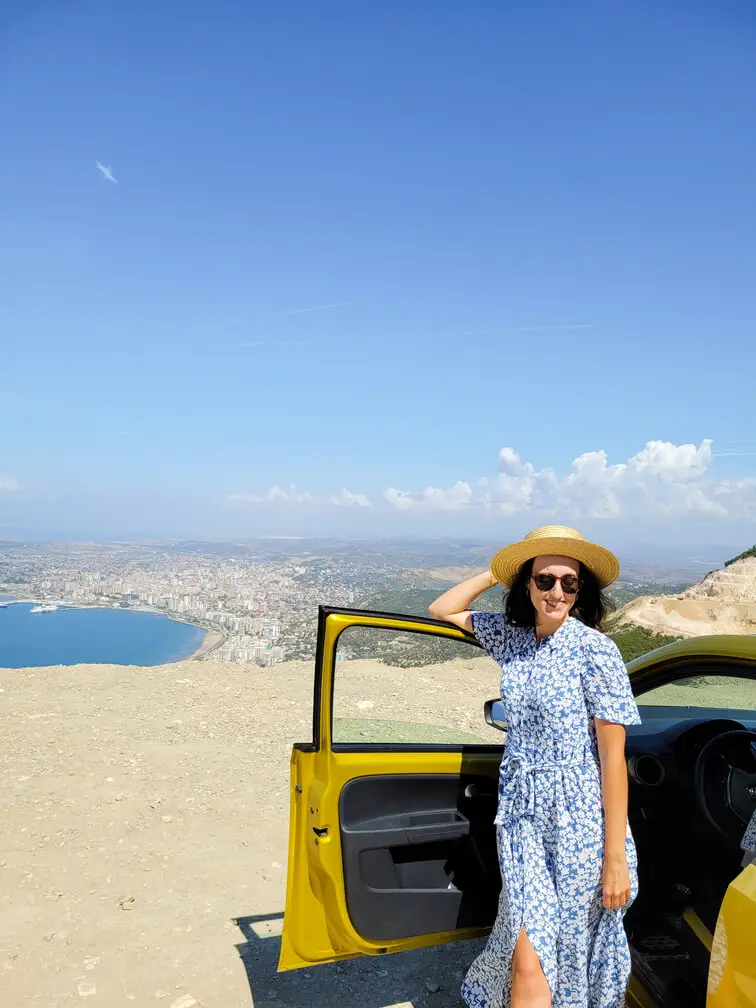
When I visited, I chose to rent a car with Select Car, and I was impressed with the service. I picked up the car in Tirana city centre since I didn’t need it on the first day and returned it at the airport at the end of the trip. The process was smooth and quick.
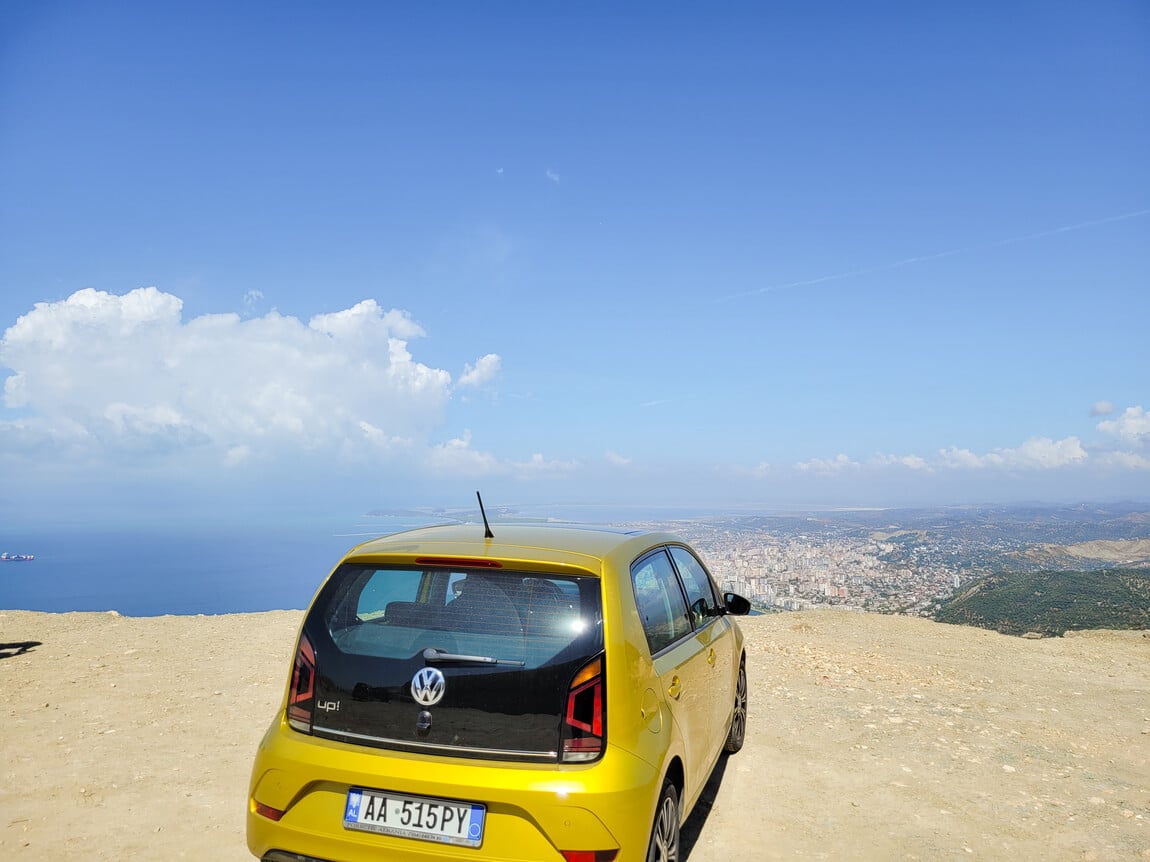
When driving in Albania, always keep an eye on speed limits, as these can change depending on the area, and use your GPS to help navigate the winding routes. While most major roads are in decent condition, some secondary roads can be challenging.
For those planning to rent a car, I recommend checking out my post on how to rent a car in Albania for more tips and advice on booking the best vehicles. For those looking for reliable car rental options, Discover Cars is a great platform to compare prices and find the best deals.
💡 EXTRA TIP: While I always recommend buying full insurance when renting a car, in Albania, it’s even more important. Driving here can be a bit aggressive, and road conditions can vary. Expect winding roads in the mountains, and be cautious on rural routes, as they may not always be well-lit or paved. It’s better to be safe than sorry 😊.
💼 TRAVEL INSURANCE: Unexpected events happen anywhere in the world, so I always recommend getting travel insurance. I regularly use Heymondo, which offers some of the highest coverages on the market at very competitive prices. As well as covering medical expenses, Heymondo’s insurance also covers the loss or theft of luggage, electronic equipment and more. They also have a 24/7 customer service through their App. As A Ticket to Take Off reader, you get a 5% discount when purchasing Heymondo insurance. The purchase must be made using this link, and the price shown on the website already includes the discount.
Is driving in Albania easy?
Driving in Albania can feel a bit daunting, especially for those new to the experience. If you’re planning an Albania road trip, be prepared for a bit of chaos on the roads.
The driving style is quite different. Albanians aren’t always strict about traffic rules. You might see overtaking in lanes that don’t even exist or cars sneaking in when they shouldn’t.
Also, the roads aren’t always in great condition, especially in rural areas. Some are narrow, winding, or poorly lit.
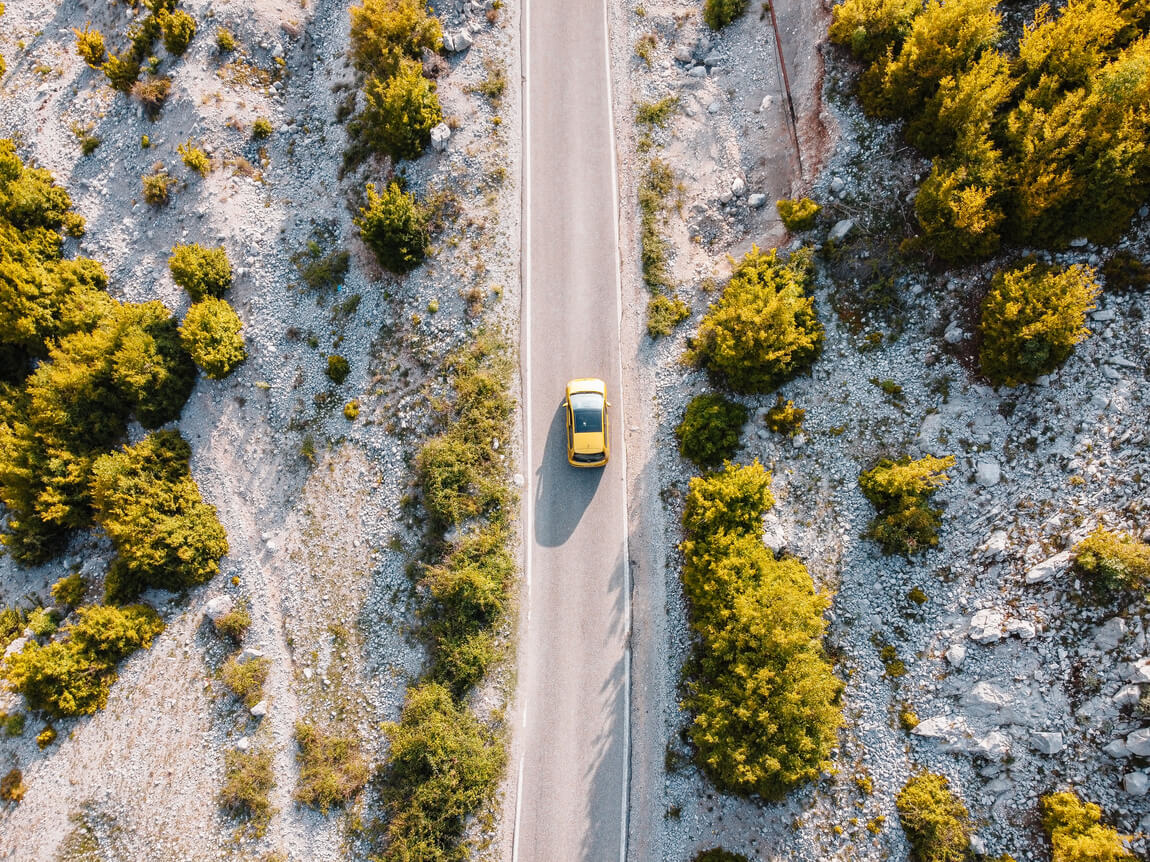
That said, I didn’t feel unsafe. You quickly get used to the driving style. I even found myself laughing at some of the situations on the road 😂.
If you’re not a complete beginner, driving in Albania is manageable. Just stay alert and go with the flow!
How to pay in Albania?
The official currency of Albania is LEK and as of February 2025, this is the exchange rate against the Euro: 1 EUR = 99 LEK. Albanian currency can only be purchased and exchanged in Albania!
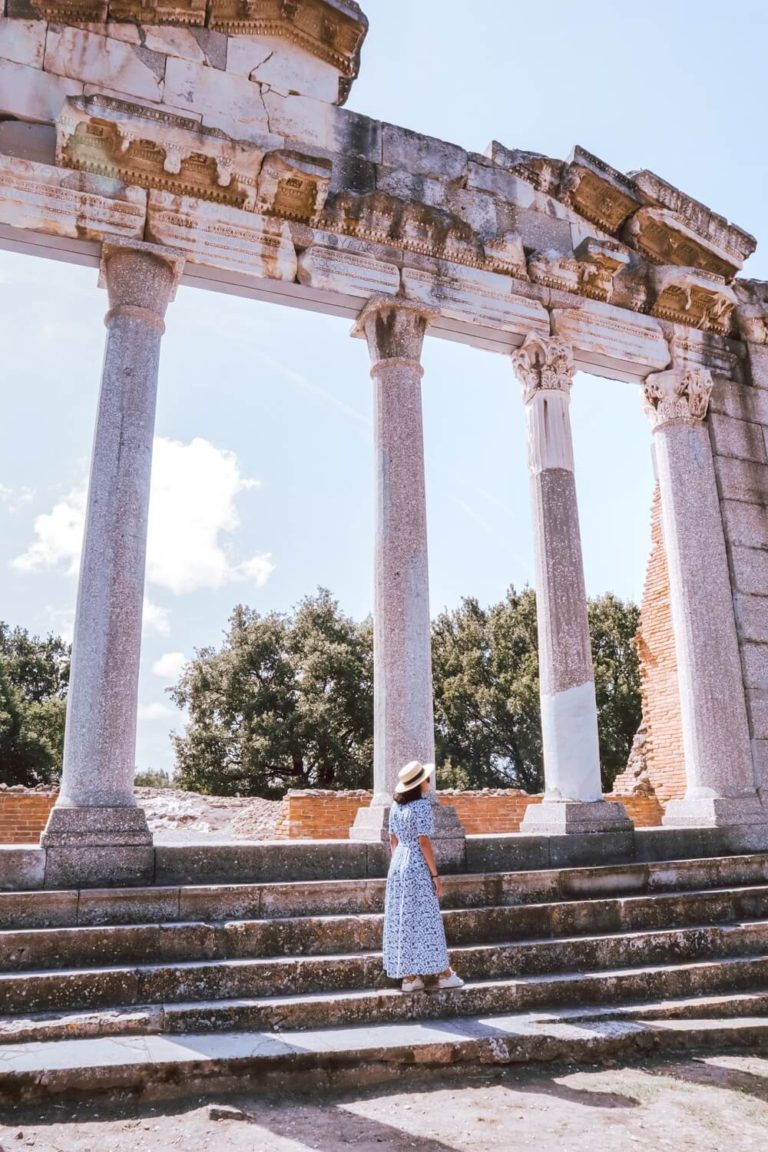
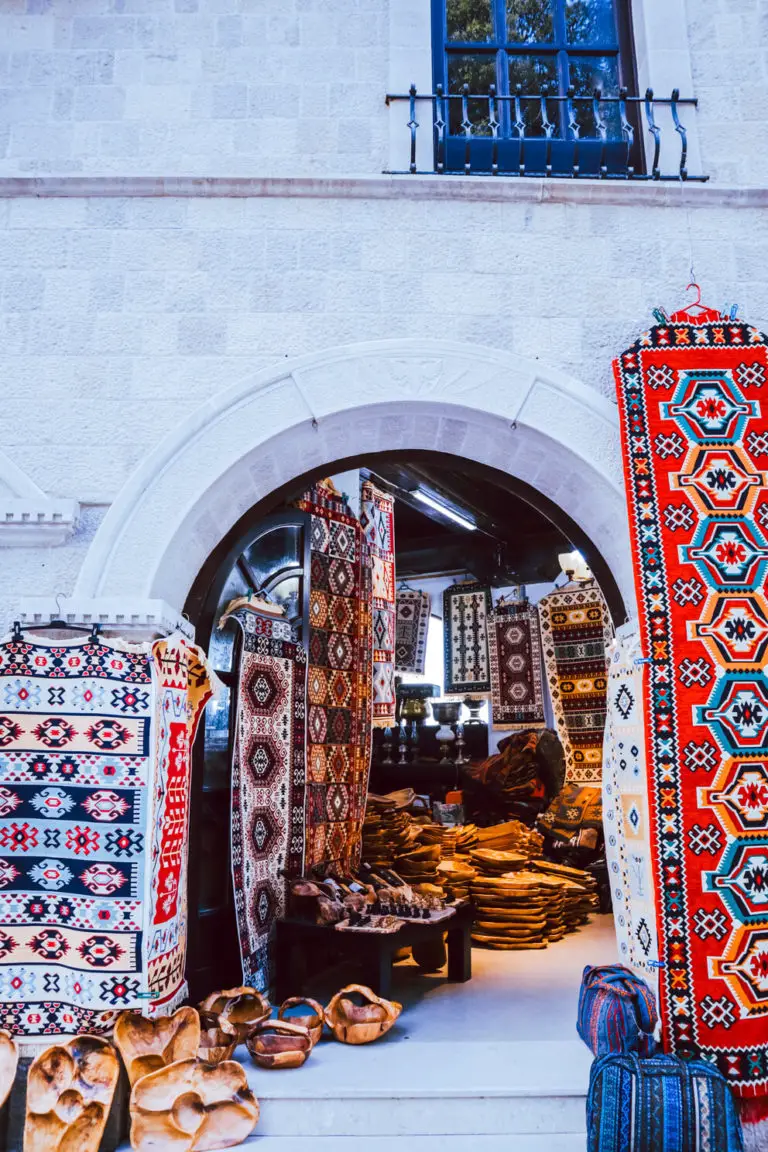
Albania is still a cash-heavy country, and you’ll often hear the phrase “only cash” when trying to pay. Many small businesses, local markets, and even some restaurants do not accept cards, so it’s best to withdraw cash as soon as you arrive and always keep some on hand.
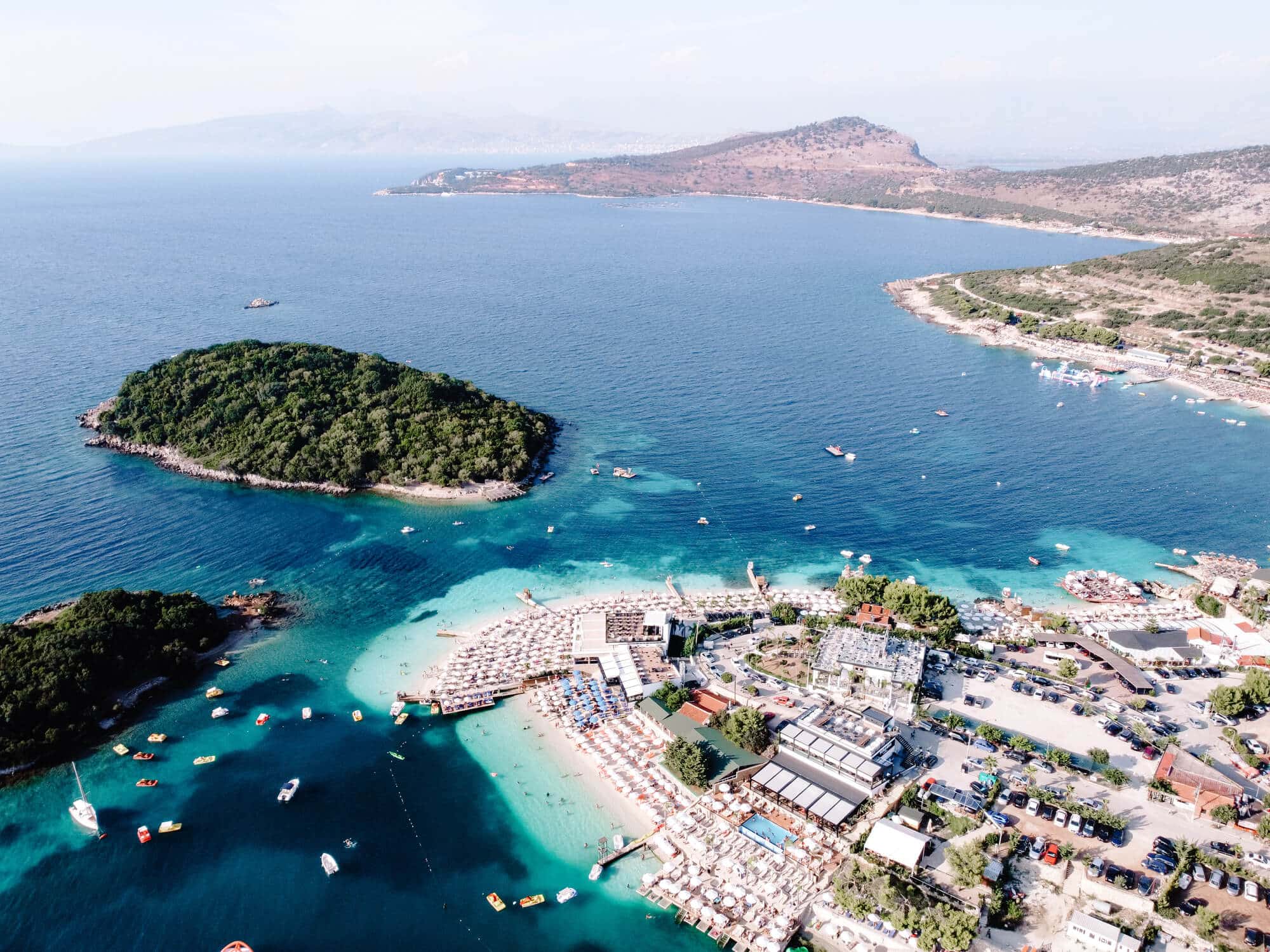
While some places may accept Euros, Dollars, or Pounds, the exchange rate offered is often not in your favour. If you choose to pay in a foreign currency, double-check the rate before handing over your money—in my experience, it’s rarely a good deal!
Where to withdraw money without paying fees?
First of all, I recommend using a Revolut Card, since it will not charge you additional fees for using a different currency (either when you pay with the card or when you withdraw money). Read more about how the Revolut card works.
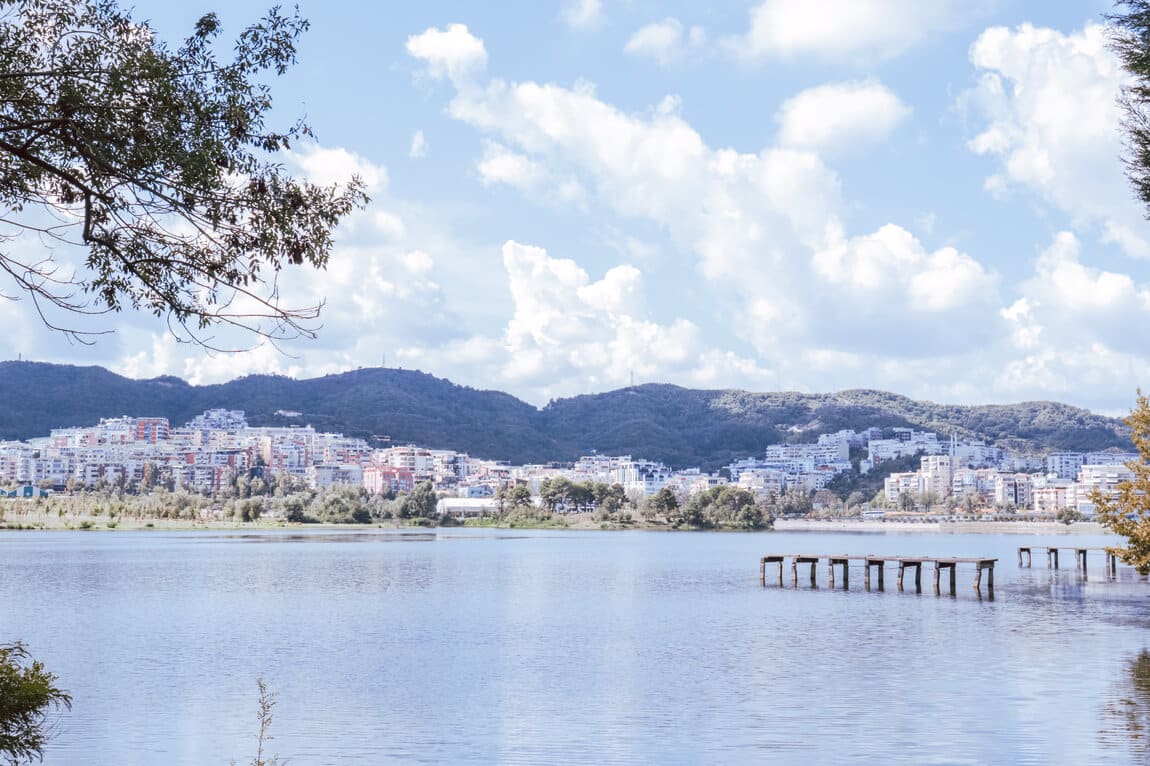
However, although Revolut does not charge additional fees for withdrawing money in another currency, most banks in Albania charge heavy fees for such withdrawals (one of the highest fees I saw was 6.8€).
However, I found one bank that does not charge any fee – CredinsBank. Update 2023: I’ve been told that CredinsBank also started charging fees recently.
💡 EXTRA TIP: Since Albania operates primarily on cash, it’s a good idea to withdraw a sufficient amount upfront, as you’ll be using cash frequently. If you’re using a Revolut card, keep in mind that the basic plan has a monthly withdrawal limit of €200 before additional fees apply. The monthly cycle isn’t fixed, so check your app to track your limit. When I visited, we had two Revolut cards and ended up exceeding the limit on one of them, so plan accordingly to avoid unnecessary fees.
How to have internet in Albania?
These days, staying connected while travelling is essential. Since Albania isn’t part of the EU, roaming charges can be high, so I recommend getting a local data package as soon as you arrive.
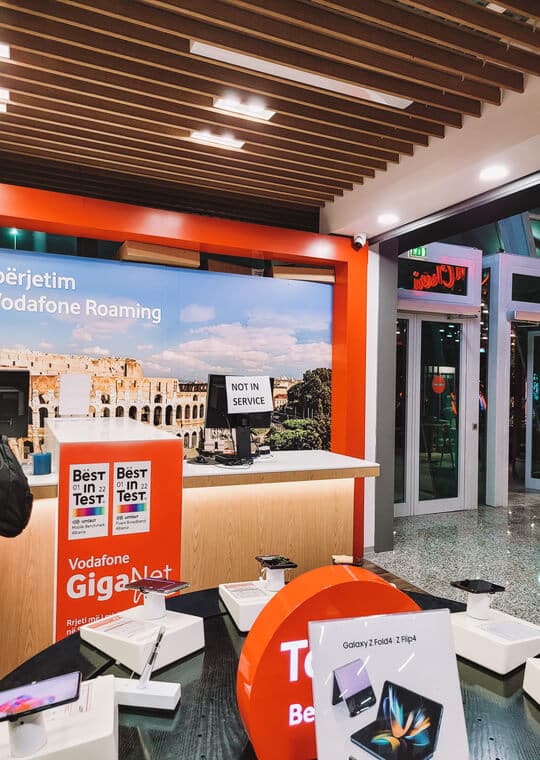
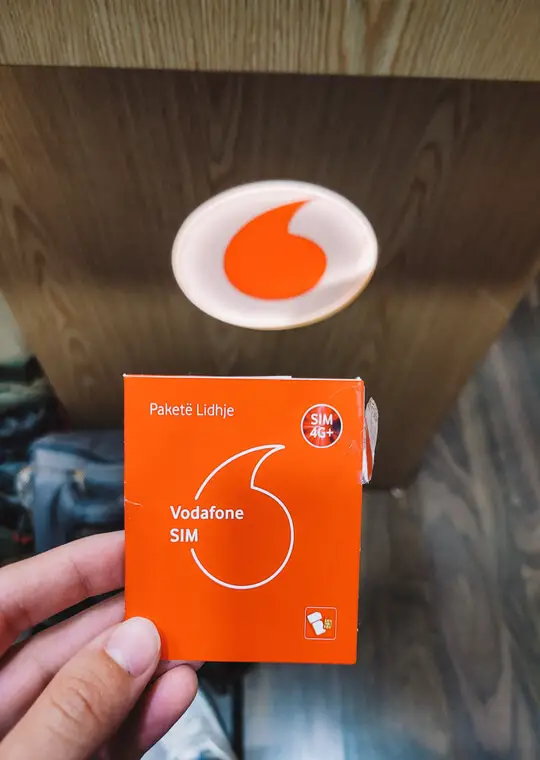
At Tirana Airport, you’ll find Vodafone and One offering similar packages: 35GB for 2000 LEK (~€20). The stands are located near the airport entrance/exit, and the process is quick—just provide some personal details, sign a document, and you’re set!
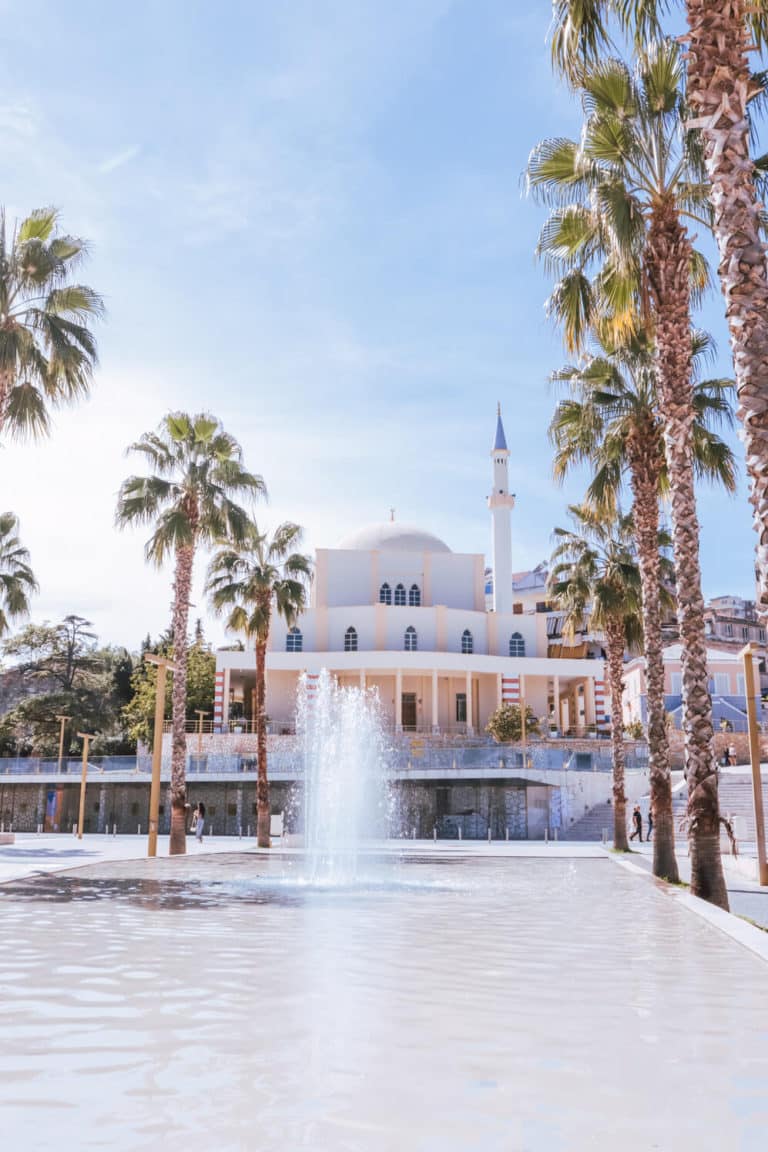
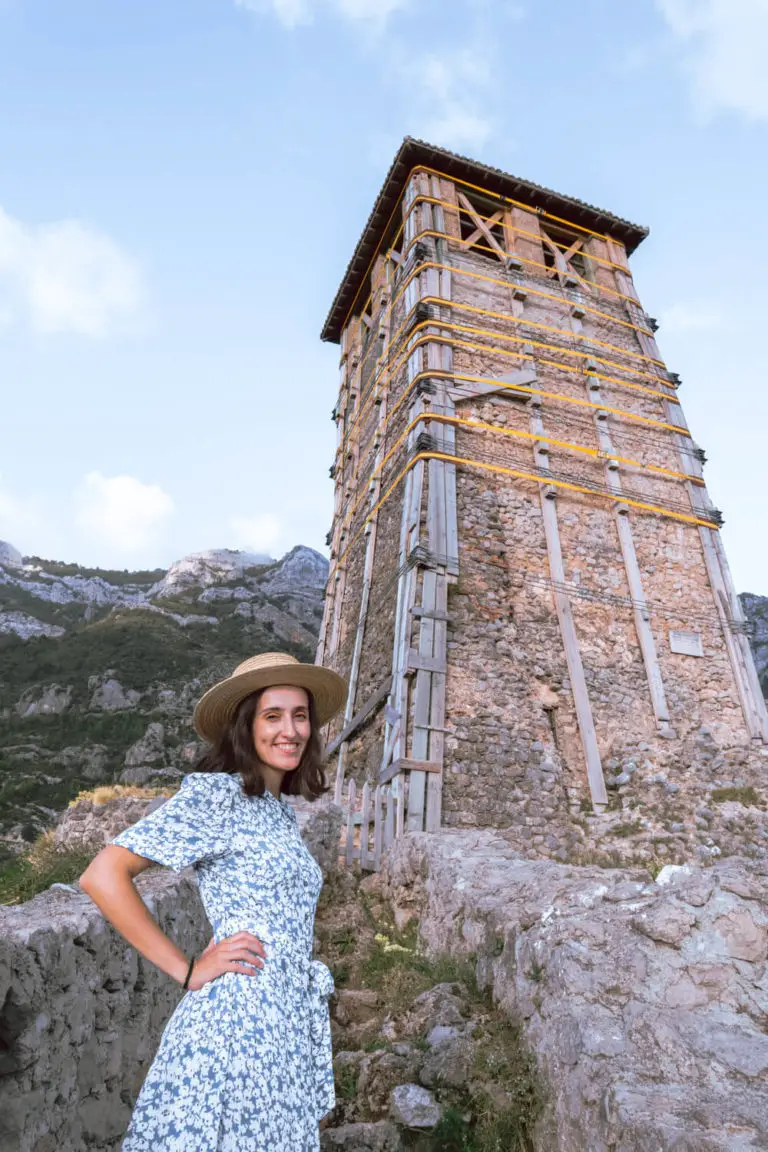
During my trip, I found Vodafone’s coverage to be excellent across the country. If you’re travelling with someone, you can also buy one SIM and use a hotspot to share data. With 35GB, we travelled for 10 days and still had plenty of data left! 😊
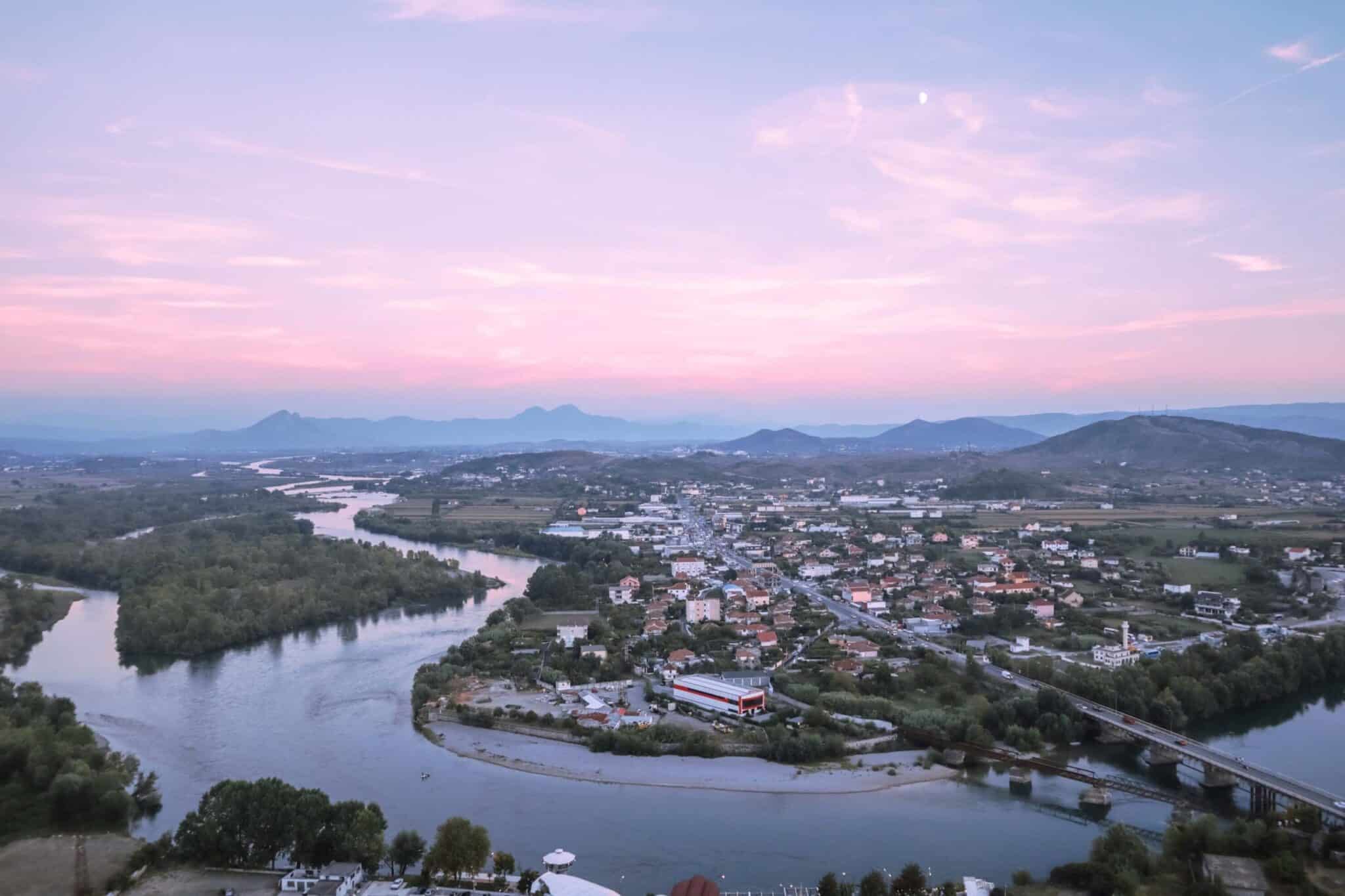
The process of buying the card was also quite simple. It took less than 15 minutes, 10 of which were in the queue waiting. All we had to do was provide some personal details, sign a document, pay and voilà!
💡 Alternative Option: If your phone supports eSIM, buying an eSIM is an even more convenient option. You can set it up before arriving in Albania, avoiding the hassle of finding a physical SIM card. I recommend Airalo, which offers flexible and affordable eSIM plans tailored for travellers.
Is Albania a safe country?
Before visiting Albania, I’d heard a few concerning stories. There were warnings about the mafia, car robberies, and advice not to drive at night. But honestly, I never felt unsafe during my trip – both during the day and at night.
There were a couple of instances where I felt a bit uneasy, but these moments were very brief and, honestly, something I’ve experienced in other countries as well (even in Portugal, one of the safest places in Europe).
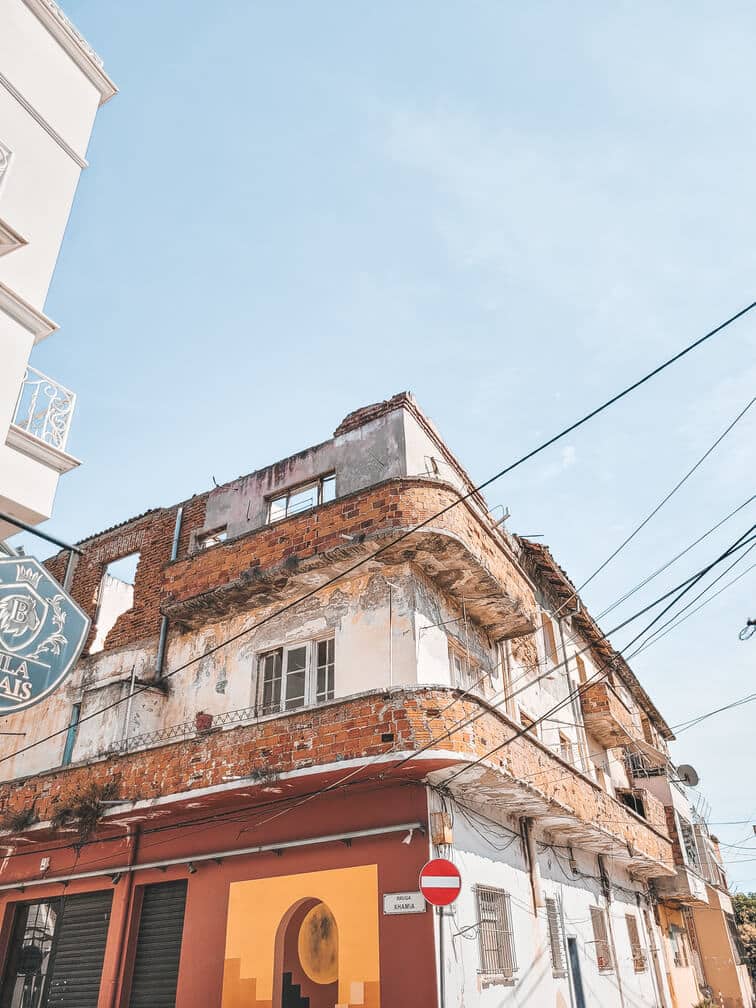
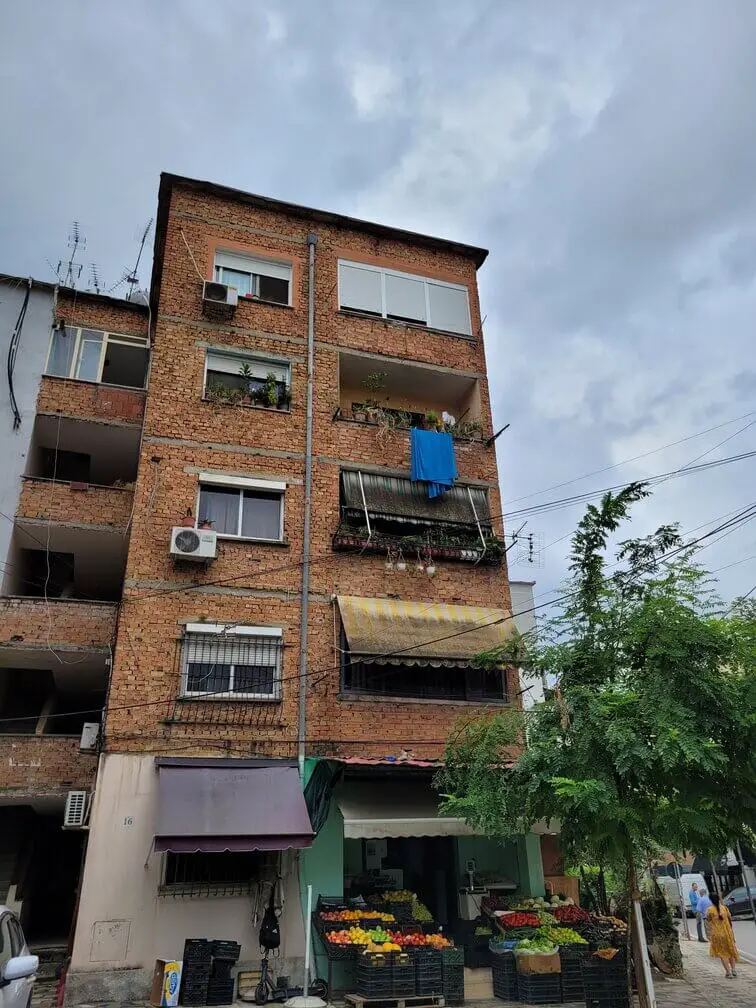
When I arrived at my first accommodation late at night, the surroundings felt a bit odd. There were unfinished buildings, exposed wires, and a general sense of disarray.
It was a bit of a shock at first, but I soon realised that this was normal in Albania. The country is still undergoing significant development, and not every area is fully completed.
It didn’t mean I was in a dangerous area – just that things aren’t always polished, especially in less touristy parts.
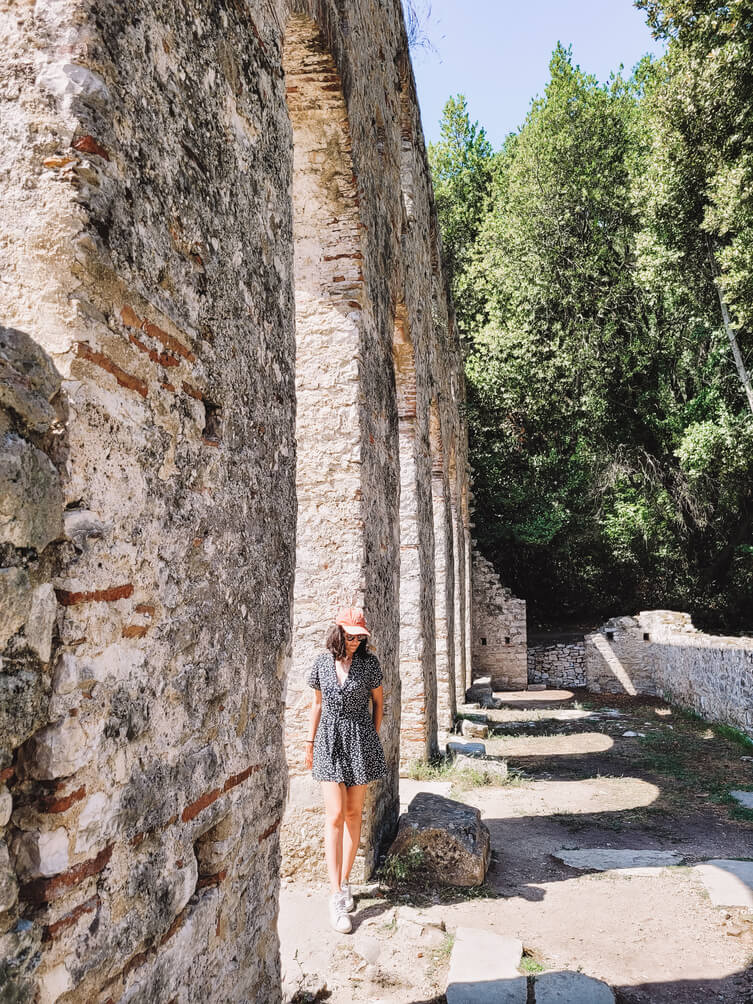
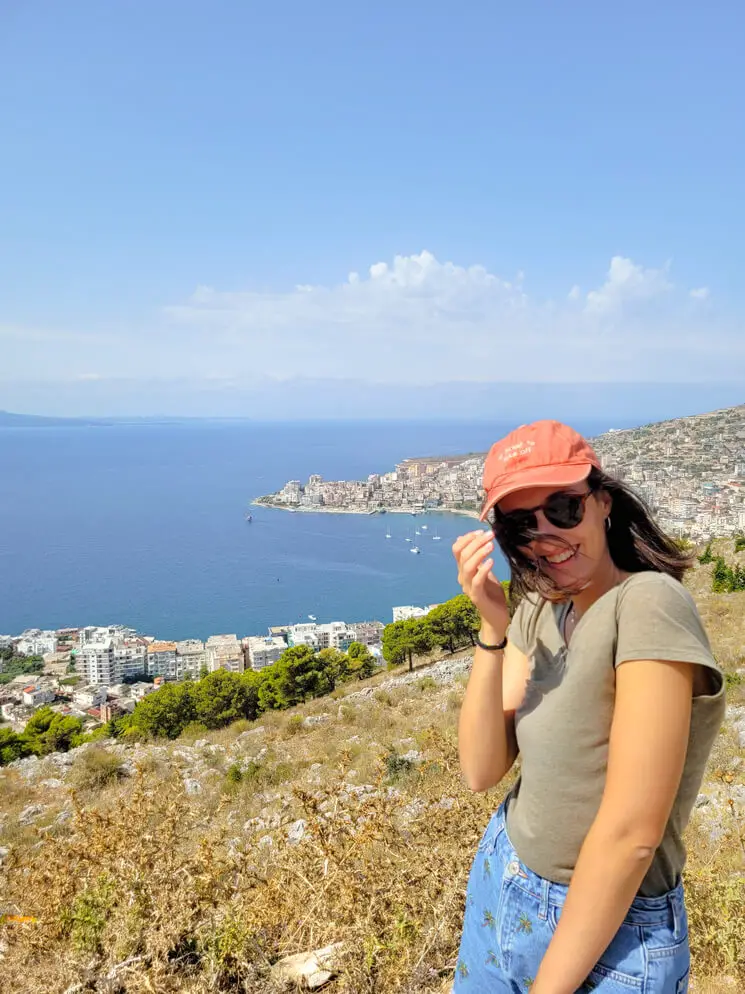
Throughout my stay, I carried my camera and phone without any issues. I used my phone for navigation and, despite what I’d read about pick-pocketing, I never felt at risk of being mugged.
However, as in any country, I took the usual precautions. I made sure my valuables were safely stored, out of sight when not using them, and always kept my bags close to me.
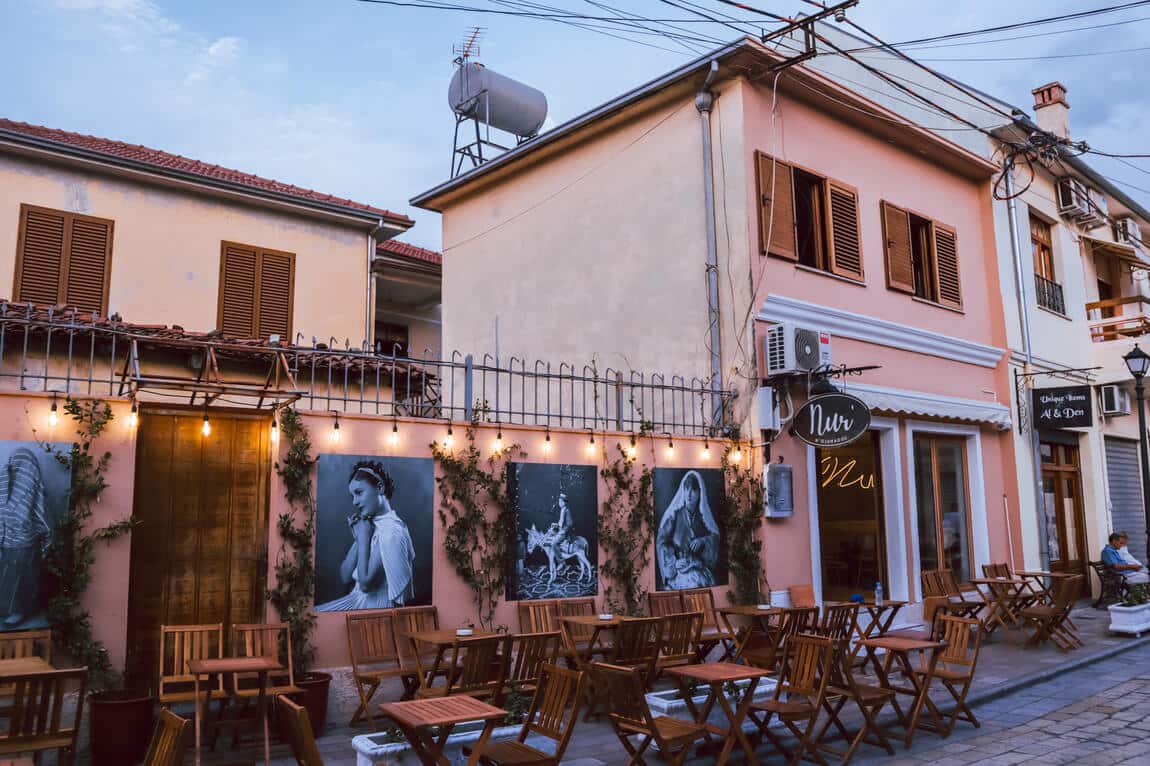
However, some areas in Albania are best avoided. For example, the northern regions near the Kosovo border, which still have some active mines, should be approached with caution. Similarly, Lazarat, a small village in the south, has earned a reputation for being a hotspot for drug trafficking and has limited police presence.
It’s always wise to stay informed and avoid areas where local safety is a concern.
In general, though, Albania is a lot safer than people might think. Like any travel destination, a bit of common sense goes a long way. Stick to well-lit areas at night, be cautious with your belongings, and avoid isolated spots, and you’ll have a safe and enjoyable experience in this beautiful country.
The Ultimate 10-Day Albania Itinerary
Albania offers a perfect mix of vibrant cities, rich culture, stunning beaches, and breathtaking nature. In this 10-day itinerary, I’ll show you how to experience the best of the country.
You’ll explore lively cities, dive into Albania’s cultural heritage, and immerse yourself in its natural beauty. Whether you’re a history buff, nature lover, or just looking to relax, there’s something here for everyone.
Although I’m not particularly drawn to the beach (I spent only two days by the coast), I’ve tailored alternative versions of this itinerary to suit different interests. At the end, you’ll find options for nature lovers, beach enthusiasts, and even a 7-day itinerary for those with a shorter time frame.
This guide will help you plan the ultimate Albania road trip, ensuring you get the most out of your adventure in this incredible country.
Day 1: Tirana
The first day of this Albania travel itinerary starts with a must-visit in Albania – its capital city. Despite its small size, Tirana is a very interesting city.
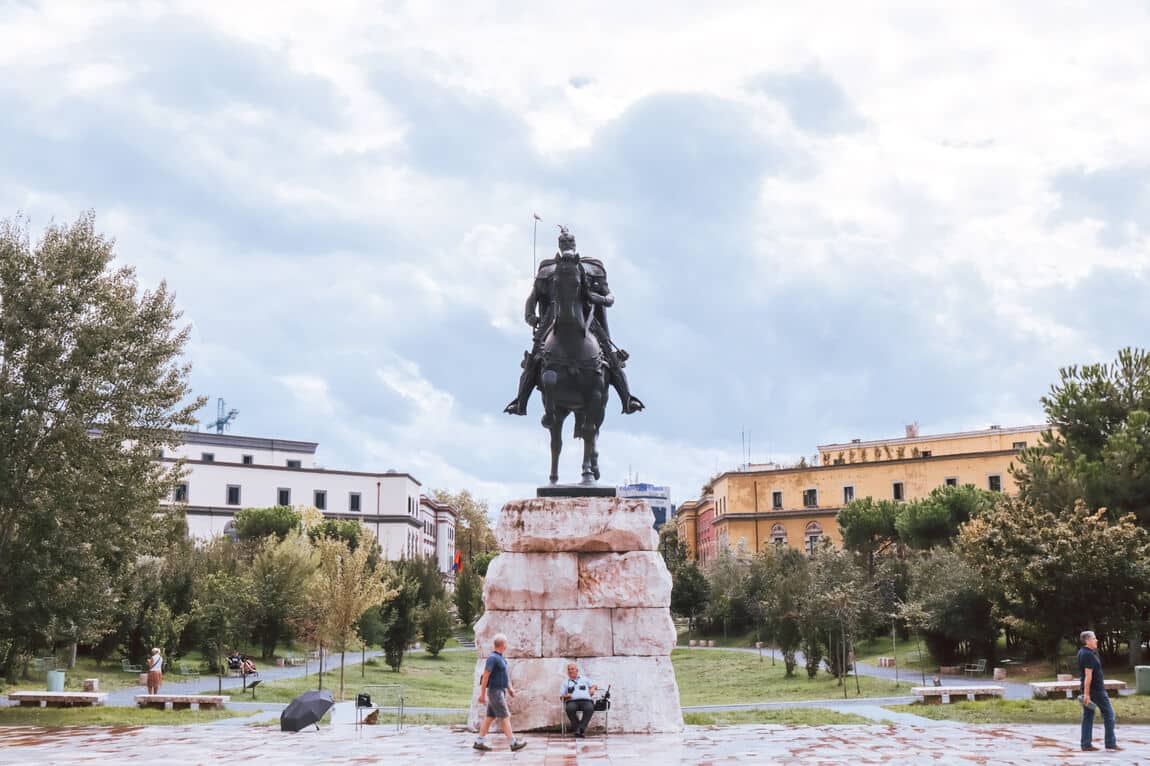
Skanderbeg Square
Start your adventure in Skanderbeg Square, the heart of Tirana and a tribute to Albania’s national hero, Skanderbeg. The square is home to the National History Museum, where you can learn about the country’s past.
Nearby, you’ll find the iconic Clock Tower and the beautifully restored Et’hem Bey Mosque, a peaceful spot worth exploring inside.
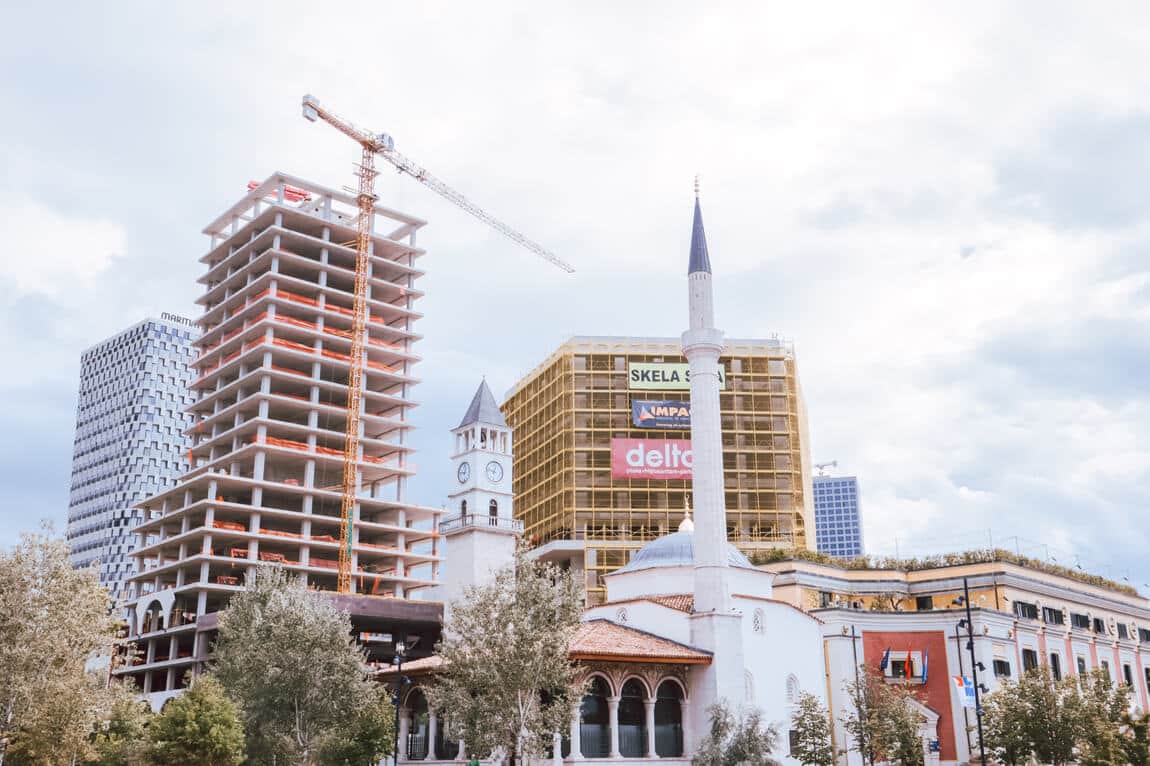
Pazar i Ri and Rruga Murat Toptani
While in the city, also don’t miss the vibrant Pazar i Ri market. It’s a colourful and lively area where you can shop for local goods and enjoy traditional Albanian food.
Just a short walk away is Rruga Murat Toptani, one of Tirana’s most famous streets, lined with shops and restaurants. Here, you’ll also find the Old Tirana Castle, recently renovated into a charming area for a leisurely stroll.
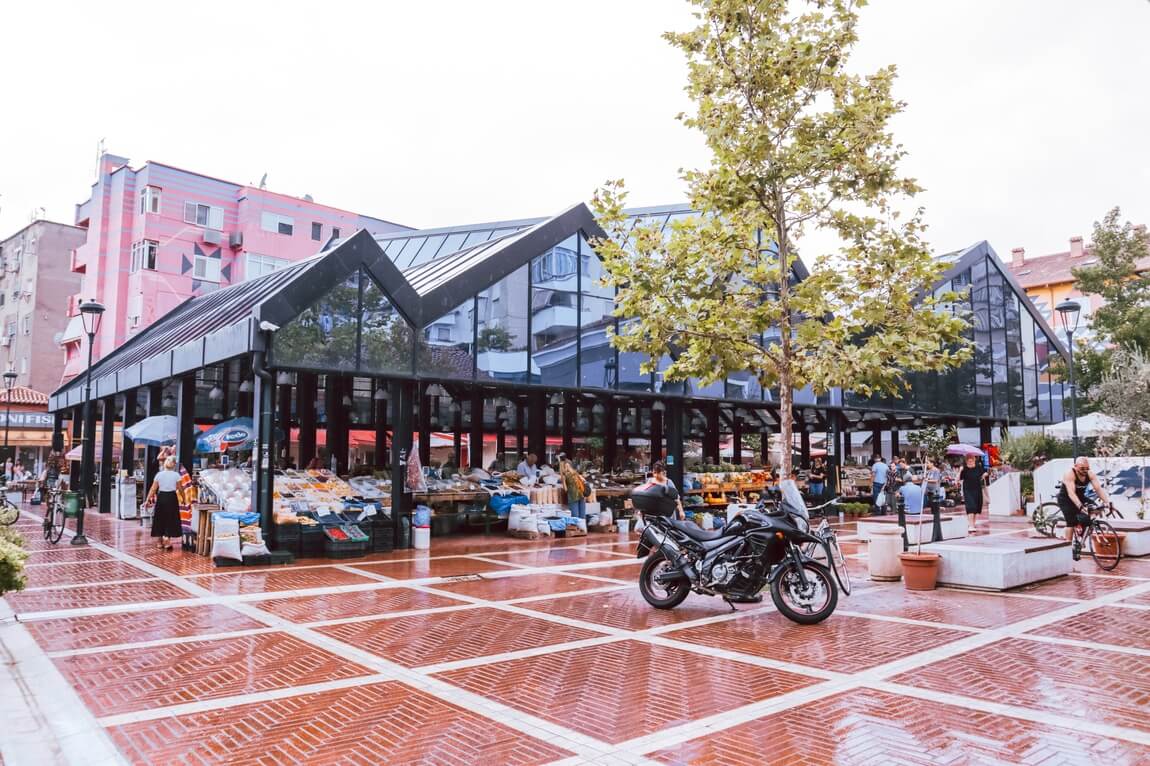
Bunk’Art 1 & Bunk’Art 2
No visit to Tirana would be complete without exploring one of the city’s two Bunk’Art museums. These museums are housed in former bunkers, remnants of Albania’s communist past.
For decades, Albania was isolated under a harsh regime that built over 170.000 bunkers across the country, reflecting the paranoia of its dictator. Bunk’Art 1 and Bunk’Art 2 offer a fascinating look at the country’s history, showing how the dictator feared an outside attack on the country.
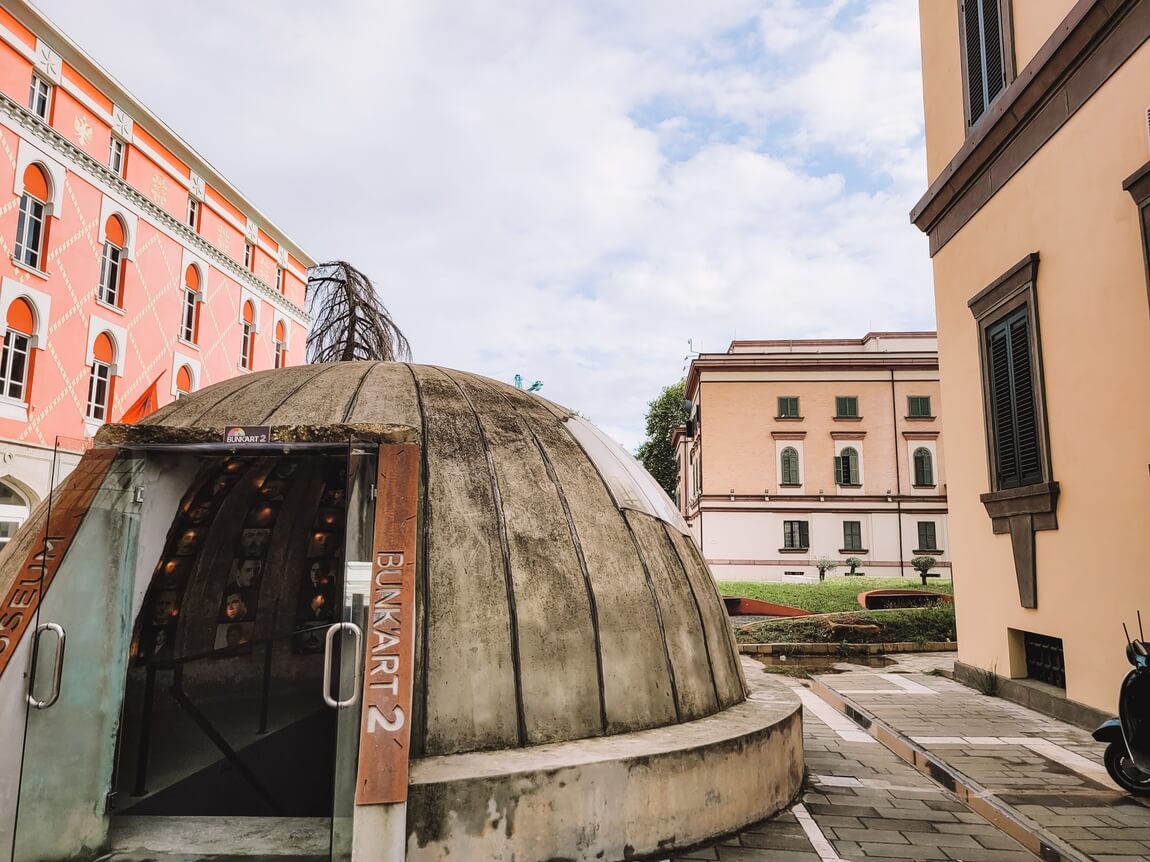
Other things to do in Tirana
Tirana has much more to offer beyond the sites mentioned above. If you want to explore the city in more detail, check out my Tirana itinerary for additional tips and recommendations to help you plan the perfect visit to this lively city.
Accommodation in Tirana
I stayed in a recently renovated flat relatively close to the city centre – 5-10 minutes walk to the main points of interest. Studio Apartments Villa 24 is a set of flats that are equipped with everything we need for a good stay in Tirana.
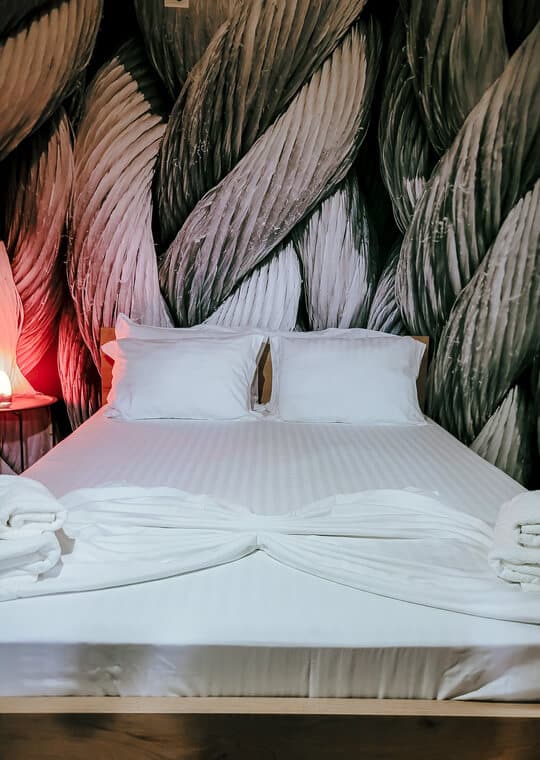
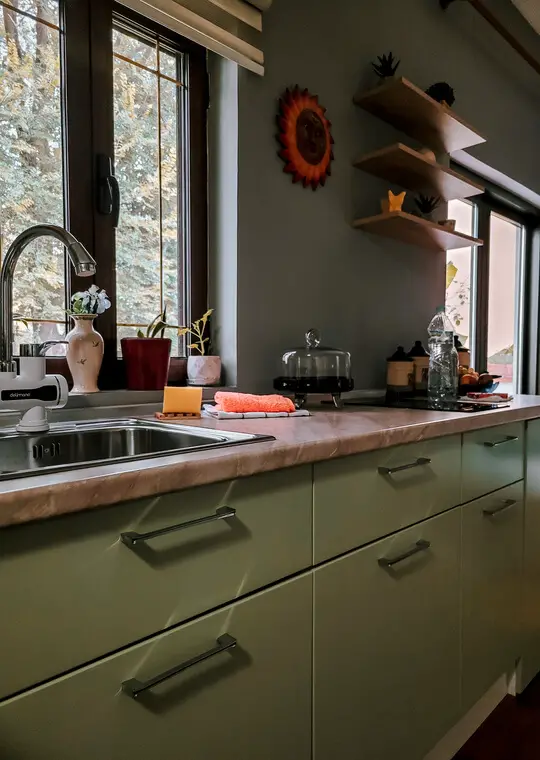
In addition to a comfortable bed and a modern bathroom, the accommodation also featured a cosy living room and a small kitchen, perfect for preparing meals if we wanted to. We were warmly welcomed with a thoughtful gesture of fresh fruit, biscuits, and water.
If you’re looking for more accommodation options, here are some additional suggestions in Tirana:
Day 2: Tirana – Bovilla Lake – Krujë – Lake Komani (166 km; 4h50)
After a restful night in Tirana, we’ll hit the road and head towards Bovilla Lake and Krujë, two of Albania’s most beautiful and fascinating destinations. Get ready for a day filled with scenic drives and unforgettable sights!
I recommend ending the day near Lake Komani, ready for an early start the next day to explore the beauty of this unique location.
» Lake Bovilla
Lake Bovilla is one of Albania’s hidden gems, offering breathtaking views and a serene atmosphere. Situated just outside Tirana, this stunning reservoir is surrounded by rugged mountains and lush greenery, making it an ideal spot for nature lovers and adventure seekers.
Lake Bovilla was created in the 1950s as part of a hydroelectric project. It’s not only a vital water source for the region but also a popular spot for fishing and hiking. The lake’s crystal-clear waters are surrounded by dramatic landscapes, offering picturesque views perfect for photography.
How to get to Lake Bovilla
To reach Lake Bovilla, you’ll need to drive from Tirana, which takes about 45 minutes. The road conditions can be a bit challenging, especially in the final stretch, as it’s a narrow, winding road with some potholes.
It’s advisable to drive a vehicle with good clearance or, even better, join a guided tour to make the journey easier and more enjoyable.
I highly recommend visiting with a tour guide to ensure a smooth experience and to get the most out of your visit. A guide will help you navigate the roads safely, share fascinating insights about the area’s history, and take you to the best viewpoints around the lake.
💡 EXTRA TIP: I had originally planned to visit Lake Bovilla, but instead, I ended up spending time in Durrës.
Unfortunately, I was disappointed with the city, as it didn’t quite live up to my expectations.
While Durrës has a few notable points of interest, like the Amphitheatre, Byzantine market, and Xhamia E Madhe mosque, I didn’t find it as charming as other spots in Albania.
If you do decide to visit, you can enjoy a stroll along the sea or explore the Durrës Town Hall and the Venetian Tower. However, with so many other beautiful destinations in Albania, I’d recommend considering alternatives like Lake Bovilla for a more memorable experience.
» Krujë
Krujë is a must-visit destination for anyone travelling to Albania. This historic city, famously known as the birthplace of Skanderbeg, the Albanian hero who led the country’s fight against the Ottoman Empire, is rich in culture and heritage.
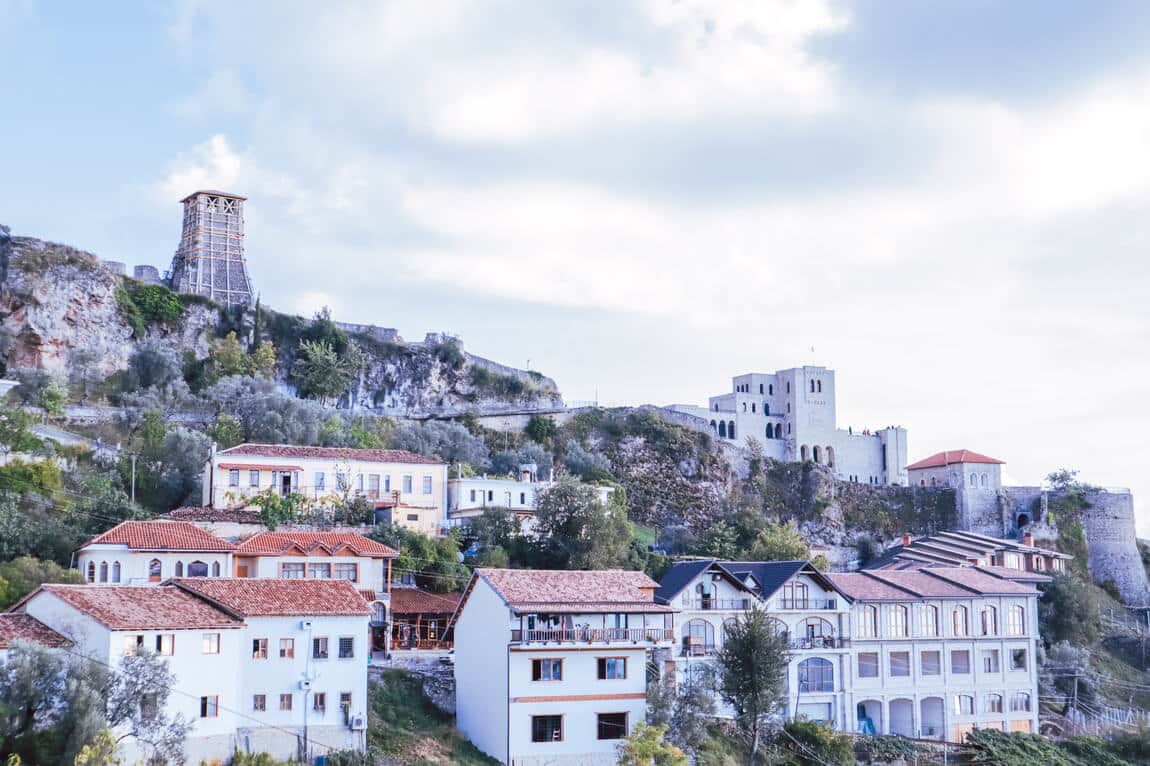
While Krujë may not have a large number of attractions, the ones it does have are truly worth exploring.
One of the city’s standout landmarks is its Old Bazaar, a market that dates back over 500 years to the Ottoman period. Here, you can shop for handmade crafts, traditional souvenirs, and local products.
Make sure to bring your camera, as every corner of this market offers a photo-worthy moment.
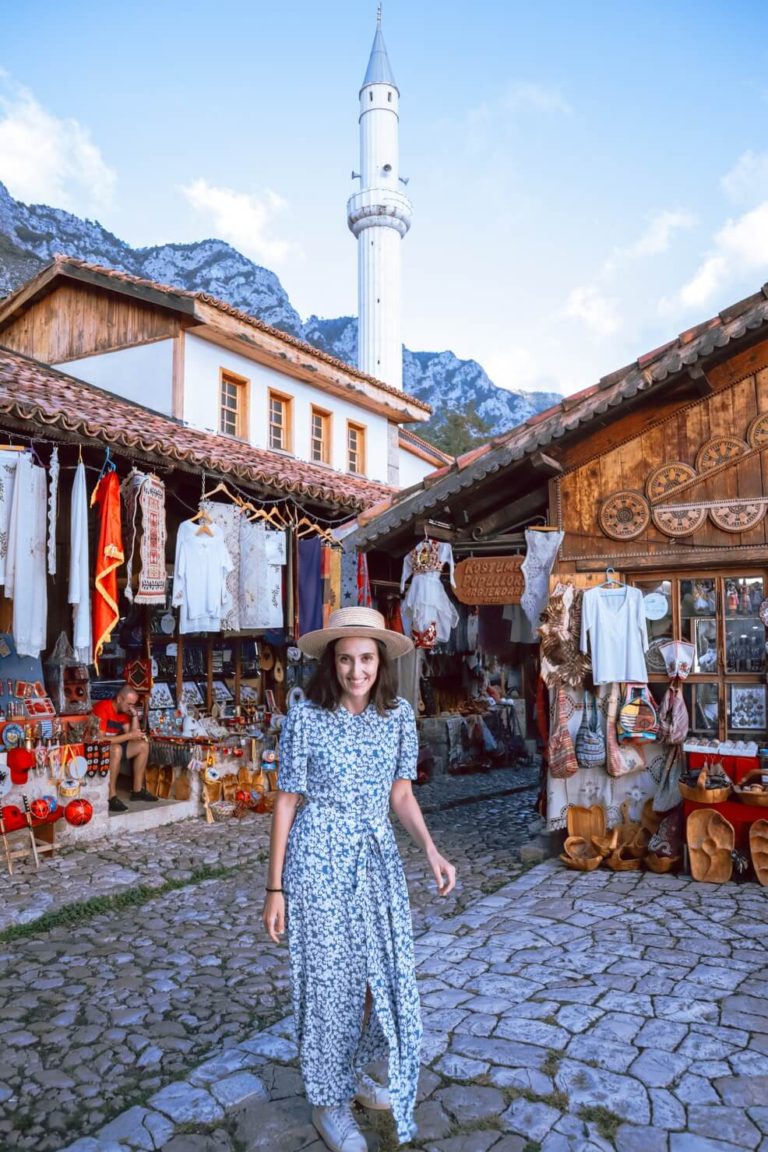
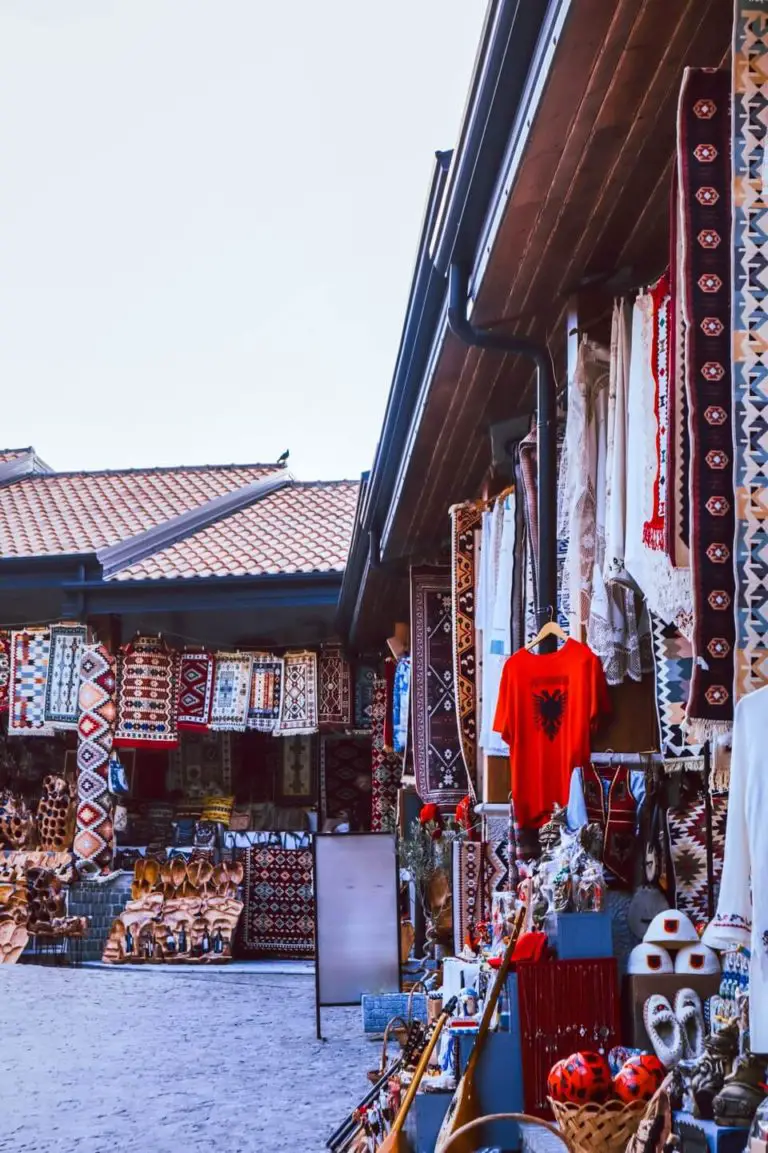
Next, a visit to Krujë Castle is essential. This historical fortress houses the Skanderbeg Museum, where you can learn about Albania’s hero and the country’s battle for independence.
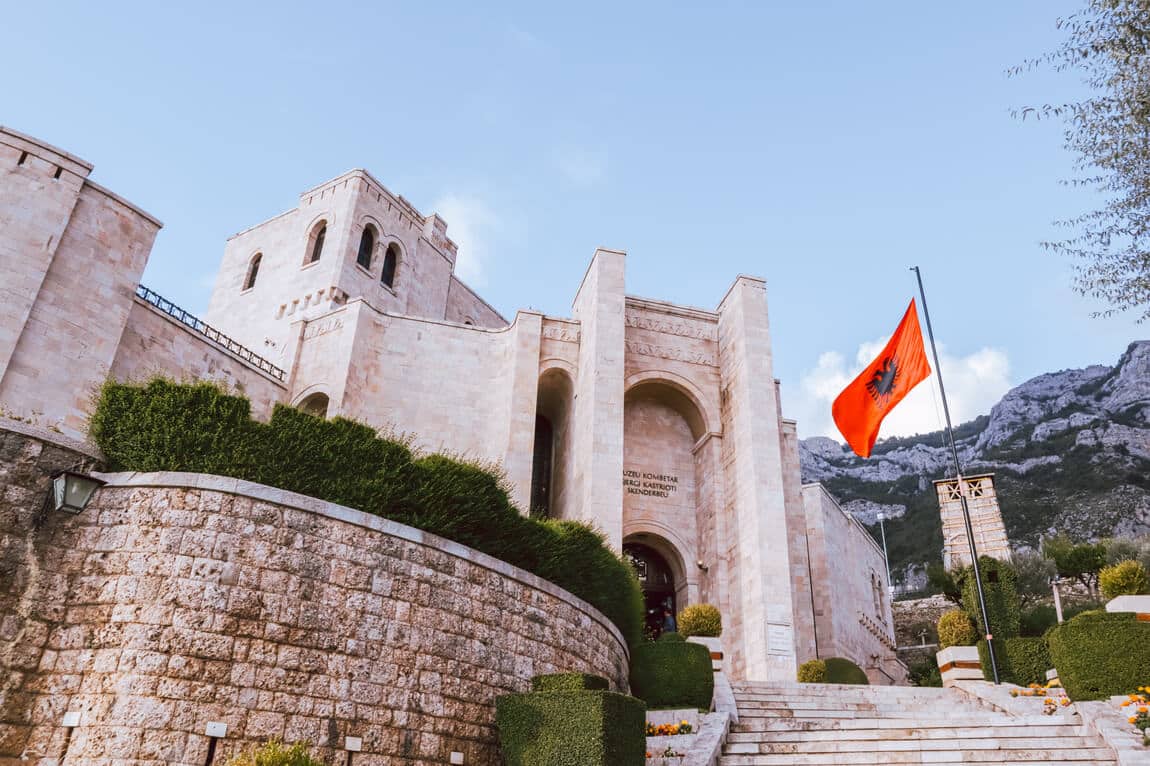
As you explore the castle, you’ll also discover the Ethnographic Museum of Krujë, which provides fascinating insights into the daily life of Albanians during the Ottoman occupation.
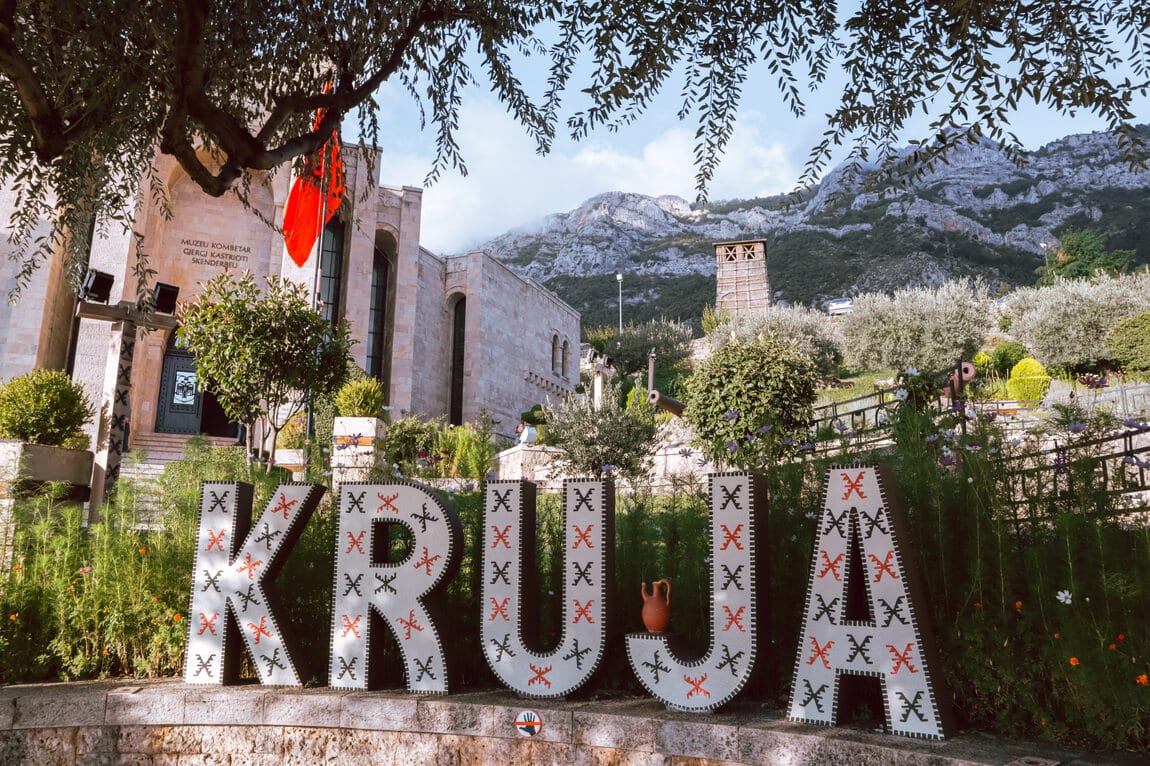
Aside from the museums and the castle, be sure to take a moment to enjoy the breathtaking views from the castle’s hilltop location. The panoramic sights of the surrounding countryside make Krujë a truly memorable stop on your Albania road trip.
Day 3: Lake Komani – Shkodër (52 km; 1h40)
Start early with a boat ride on Lake Komani, where you’ll enjoy stunning views of clear waters and rugged mountains. It’s a peaceful, scenic journey that’s perfect for photos.
Afterwards, head to Shkodër for the night, ready for more adventures the next day.
» Lake Komani
Lake Komani is a man-made lake created by the construction of a hydroelectric dam in the 1980s. Despite its artificial origins, the lake offers some of the most breathtaking landscapes in Albania, surrounded by towering mountains and crystal-clear waters.
It’s a must-visit for anyone exploring northern Albania.
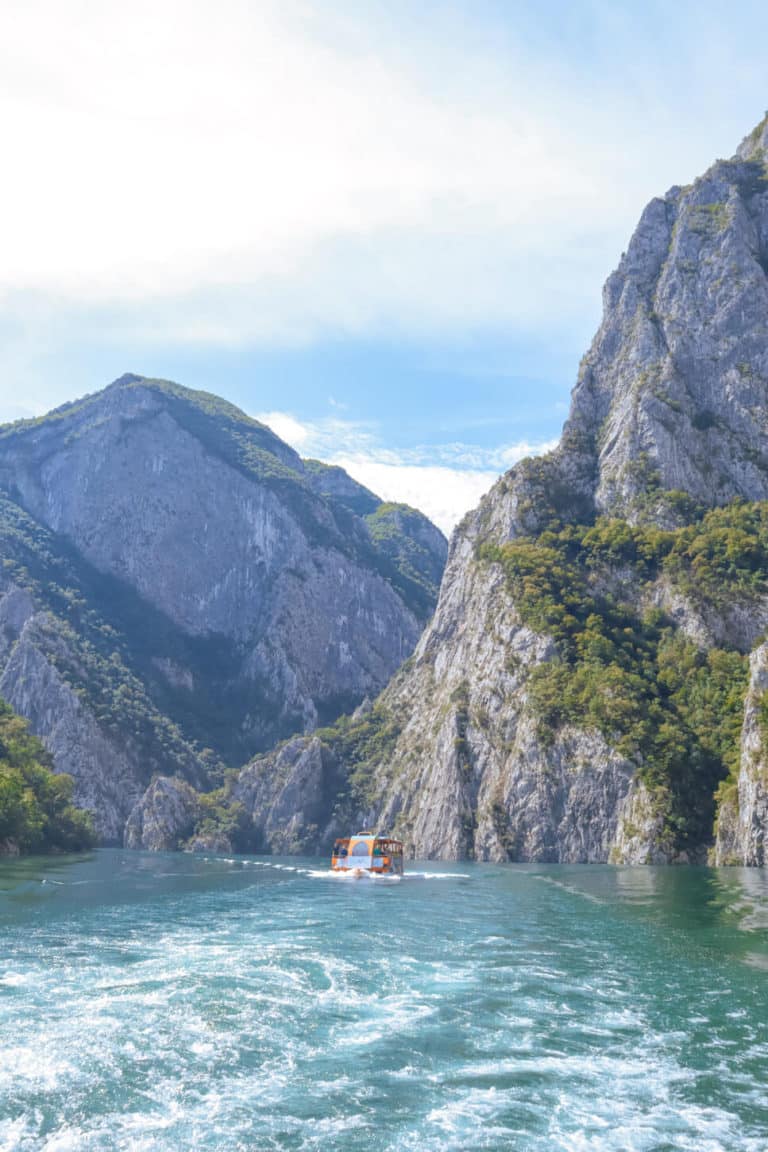
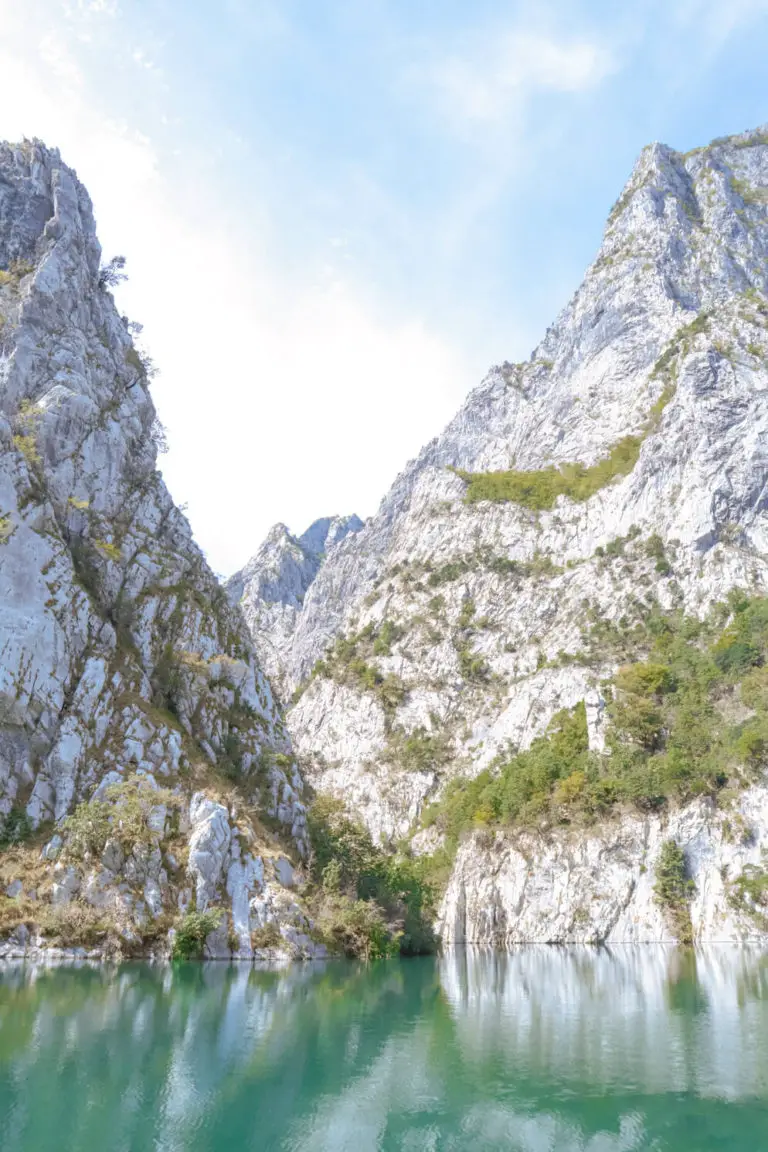
One of the best ways to explore the lake is by taking a boat ride. The journey is incredibly scenic!
Stop at Shala River, a popular spot along the lake known for its strikingly blue waters. It’s a great place for photos and to enjoy a refreshing dip if you’re up for it.
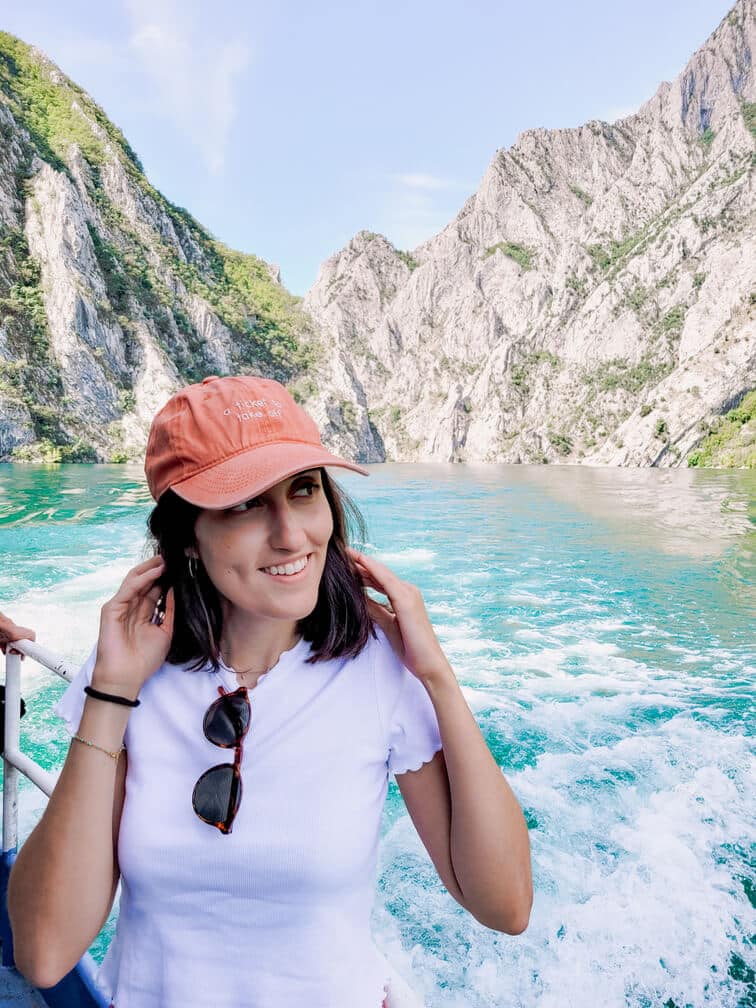
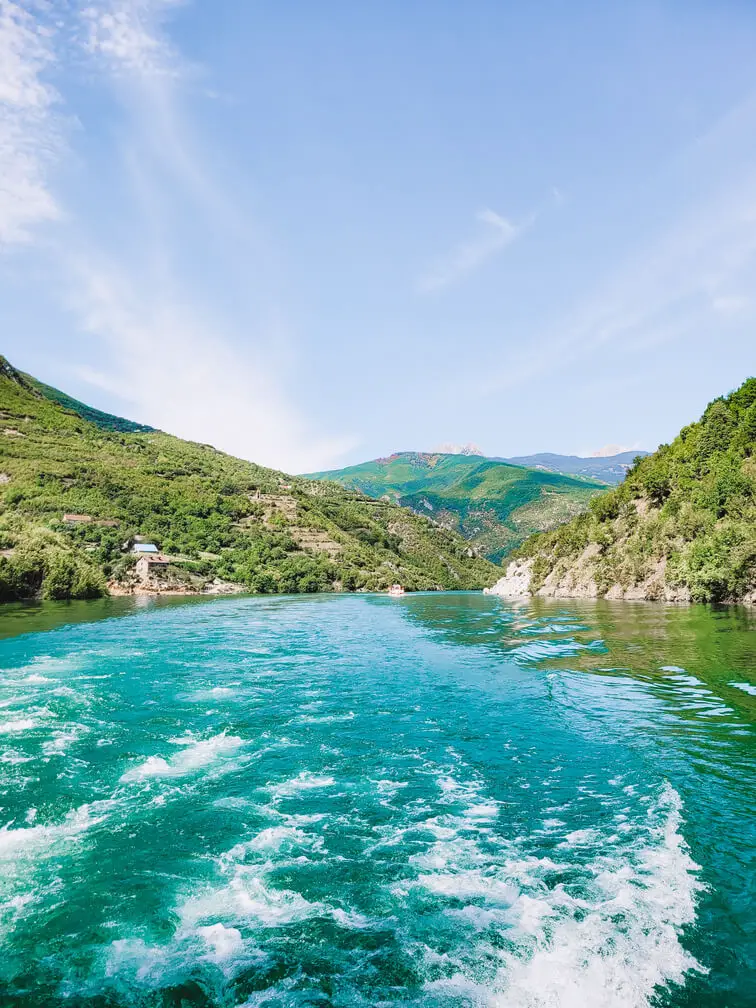
Access to Lake Komani can be a bit tricky as the roads leading there are not in the best condition. However, the effort is totally worth it.
For a more hassle-free experience, I recommend opting for a guided tour of Lake Komani. A tour will take you directly to the best spots and often includes stops like the Shala River, which you might miss if travelling independently. Plus, you’ll avoid the stress of navigating the tricky roads.
If you have time, you can also combine your visit to Lake Komani with the famous Valbona to Theth hike, one of the most beautiful trails in Albania. The hike takes you through rugged mountain landscapes and offers some of the best views in the country.
For more details on how to visit Lake Komani and plan your trip, check out my guide for visiting Lake Komani.
Accommodation near Lake Komani
Lake Komani is relatively remote, so the choice is quite limited. I stayed at Lugina e Komanit, a 10-minute drive to the place where you catch the ferries to enjoy Lake Komani.
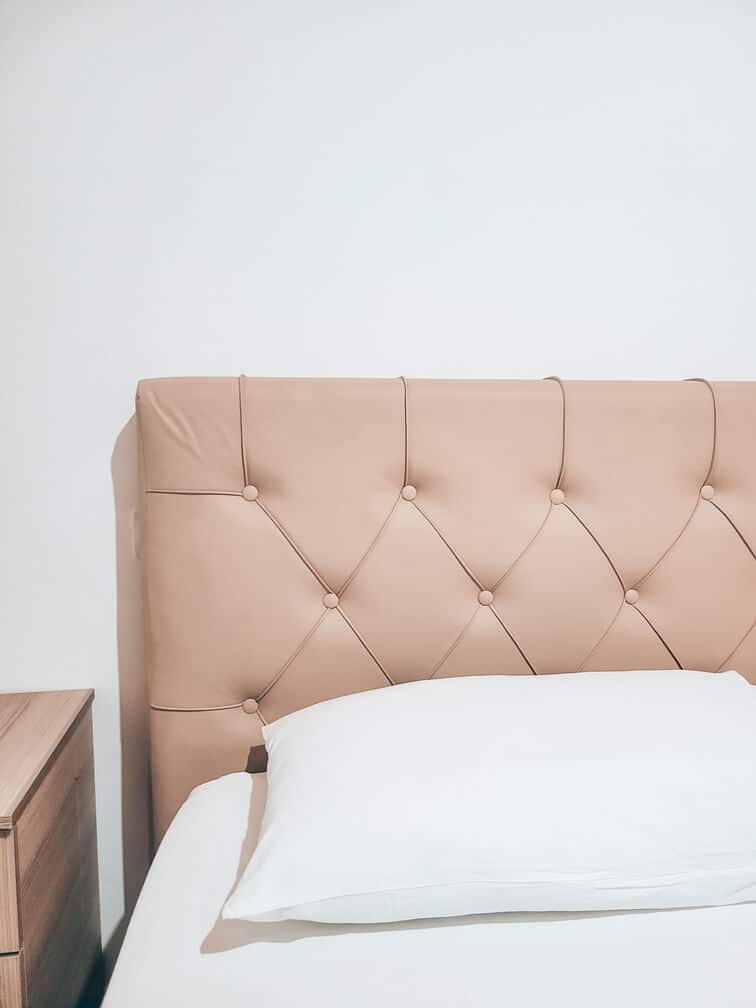
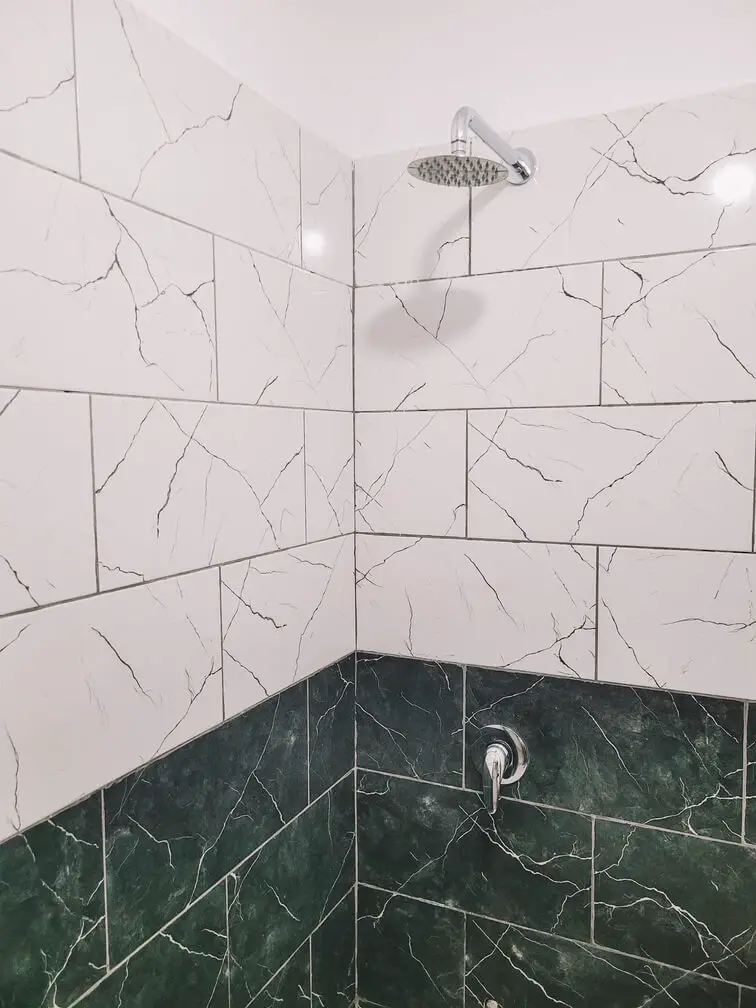
It is a fairly family-run business and to sleep overnight. Also, breakfast is included in the rate.
The accommodation also has a restaurant downstairs where we had dinner when we got there around 9 pm the day before. The next morning, they offered to drive us to the ferry, which was a plus because we avoided having to find parking for the car.
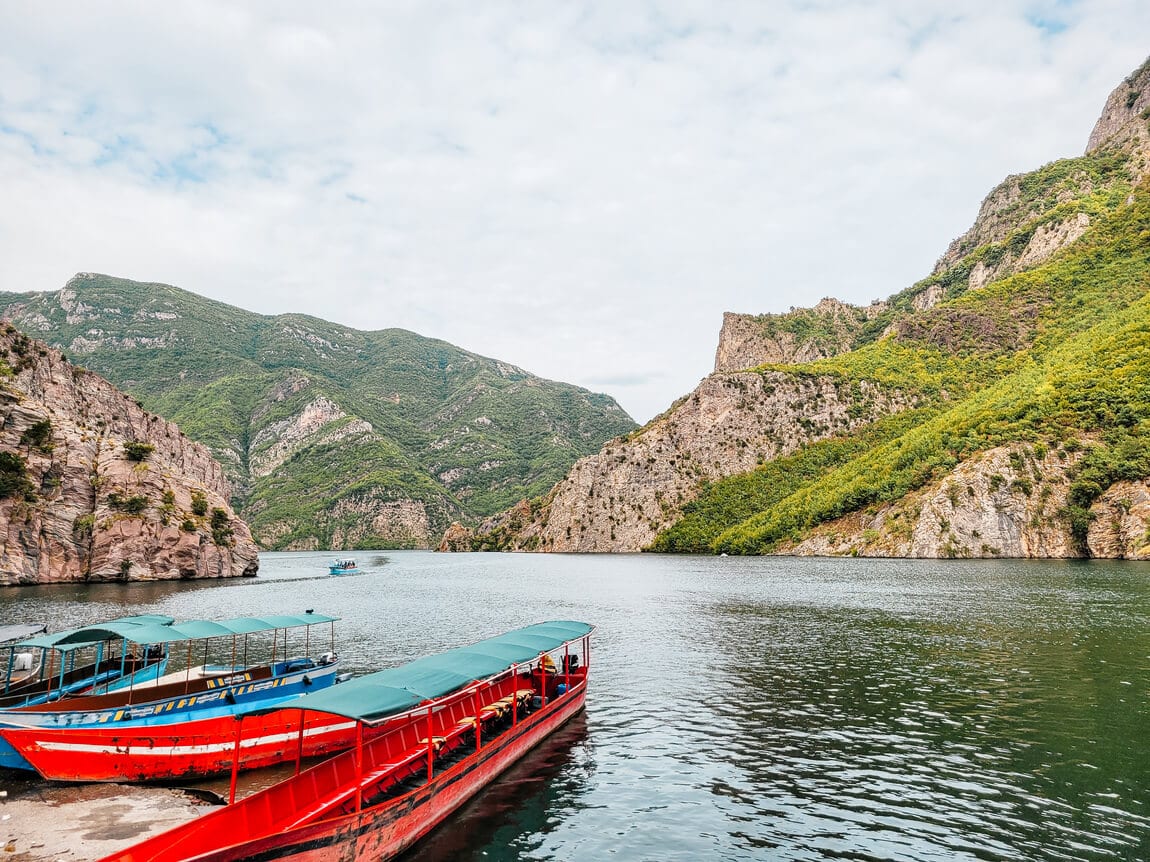
Day 4: Shkodër
Shkodër, often overshadowed by more famous Albanian destinations, is a charming city that surprises many visitors.
Located in the north of the country, near the border with Montenegro, Shkodër boasts rich history, stunning landscapes, and vibrant local life.
While many itineraries tend to overlook this city, it’s worth the stop for anyone wanting to experience the authentic side of Albania.
Mesi Bridge and Lake Shkodër
Start your day by visiting Mesi Bridge, located just 5 km from Shkodër. Built in the 18th century, this stone bridge once connected Shkodër to other northern towns.
Although I visited when there wasn’t any water flowing underneath, the bridge is still an impressive historical structure. It’s a perfect stop to start your day and appreciate the engineering of the past.
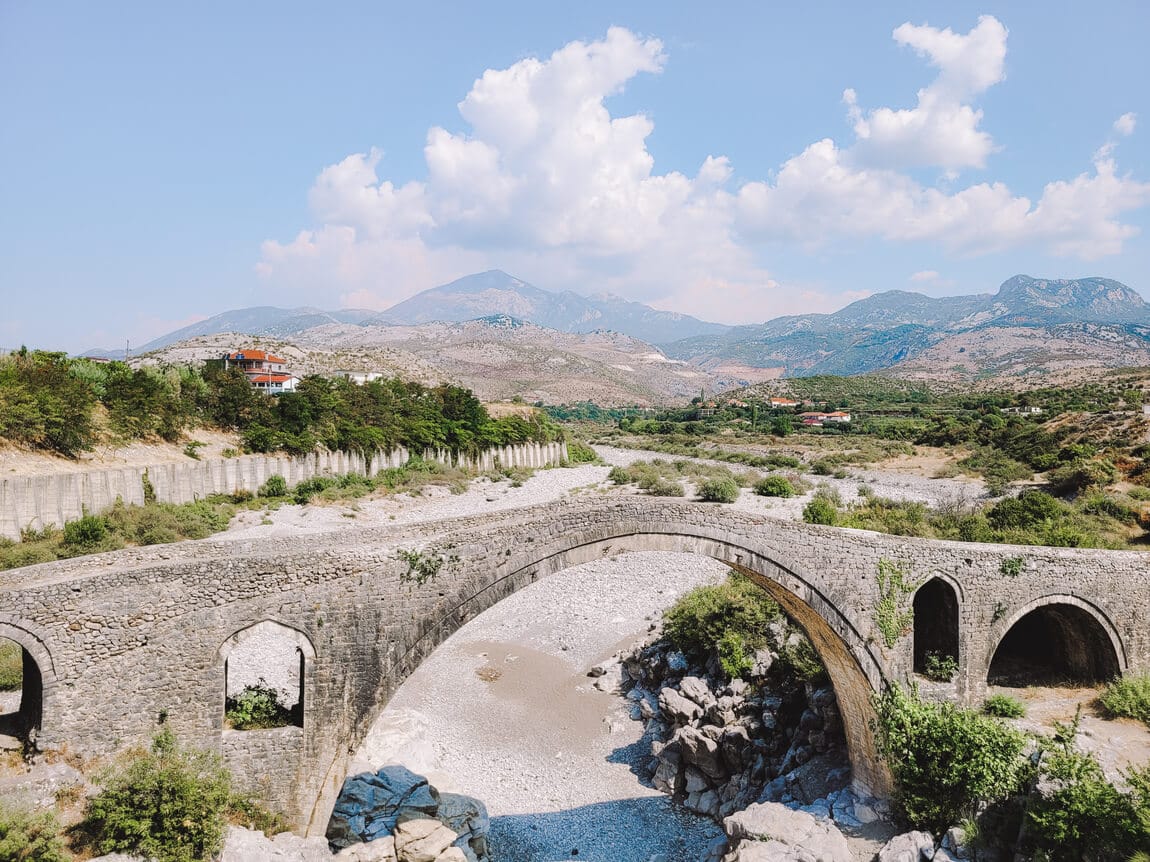
Next, head towards Lake Shkodër, the largest lake in Southern Europe, which spans both Albania and Montenegro.
A peaceful walk along the lake offers stunning views, especially along the road connecting Shiroka to Zogaj. If you have extra time, this serene spot is ideal for a relaxing stroll or just soaking in the surrounding natural beauty.
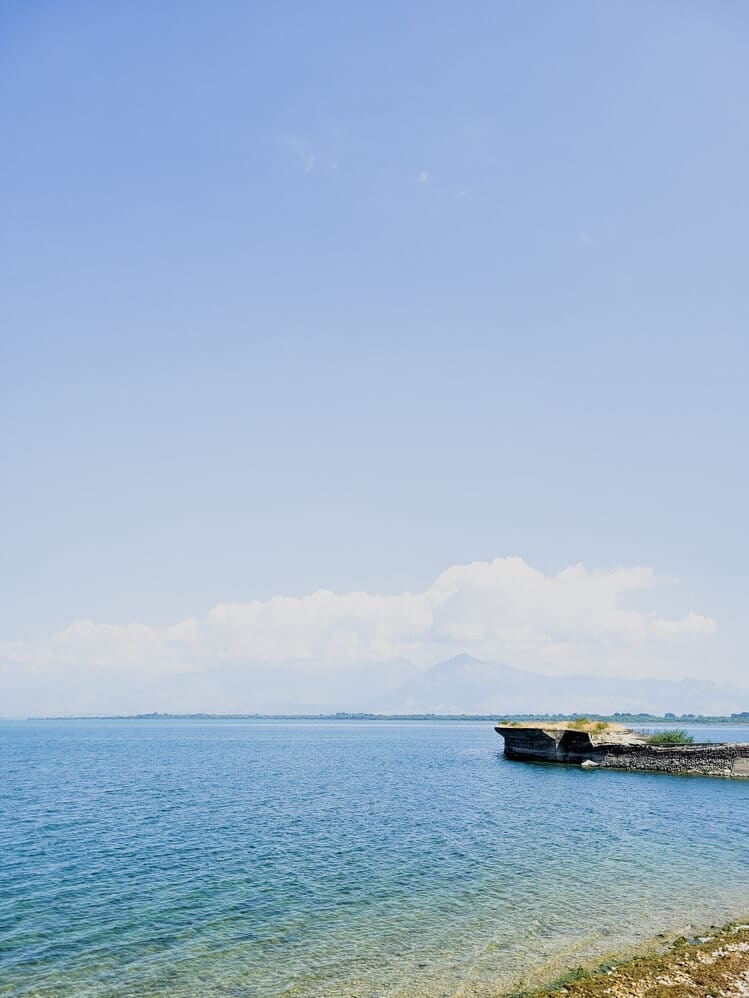
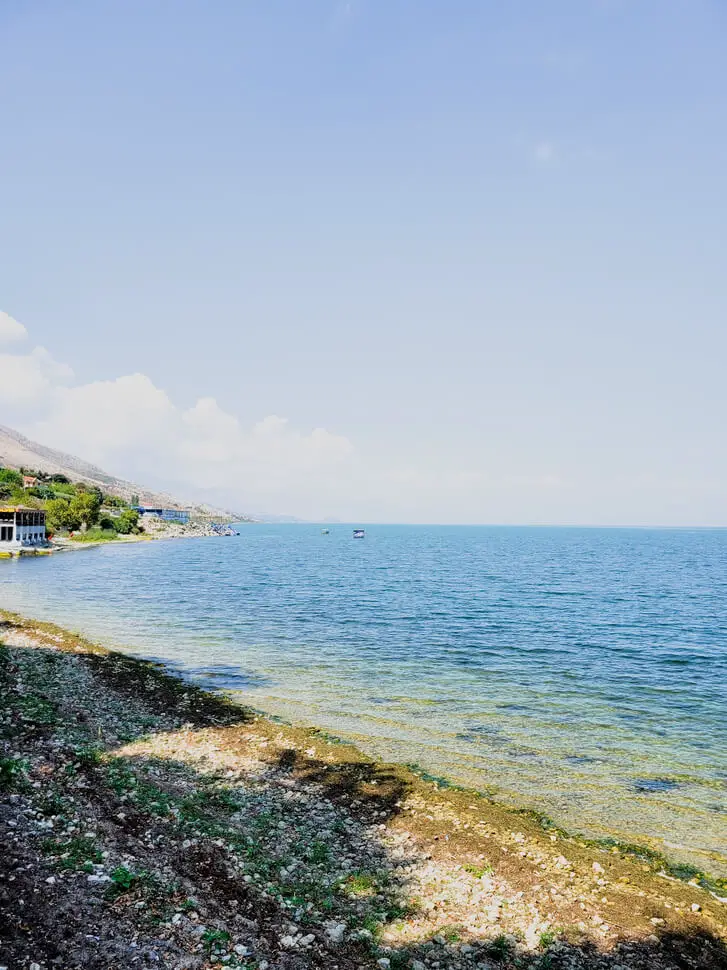
Shkodër City Centre
Make sure to visit the Ebu Bekr Mosque to admire its striking exterior. While you’re in the area, also stop by the Shkodër Cathedral, where you can take a quick look inside.
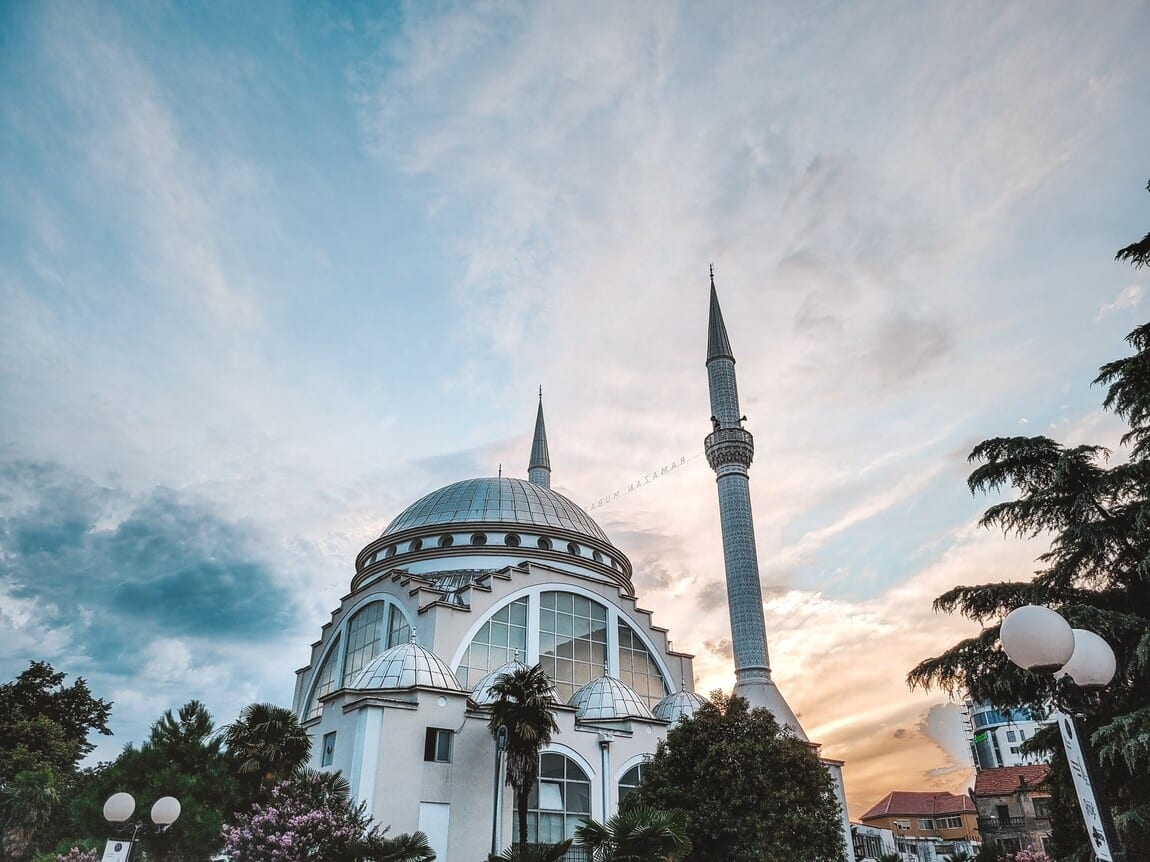
Take a walk through Rruga Kolë Idromeno and Rruga G’juhadol, two of the liveliest streets in Shkodër. These bustling areas are full of shops, cafes, and local life, offering a great opportunity to soak in the vibrant atmosphere of the city.
Feel free to join the locals and enjoy a drink at one of the nearby spots, perfect for unwinding after your explorations. I had a drink there after dinner and it was quite a lively atmosphere!
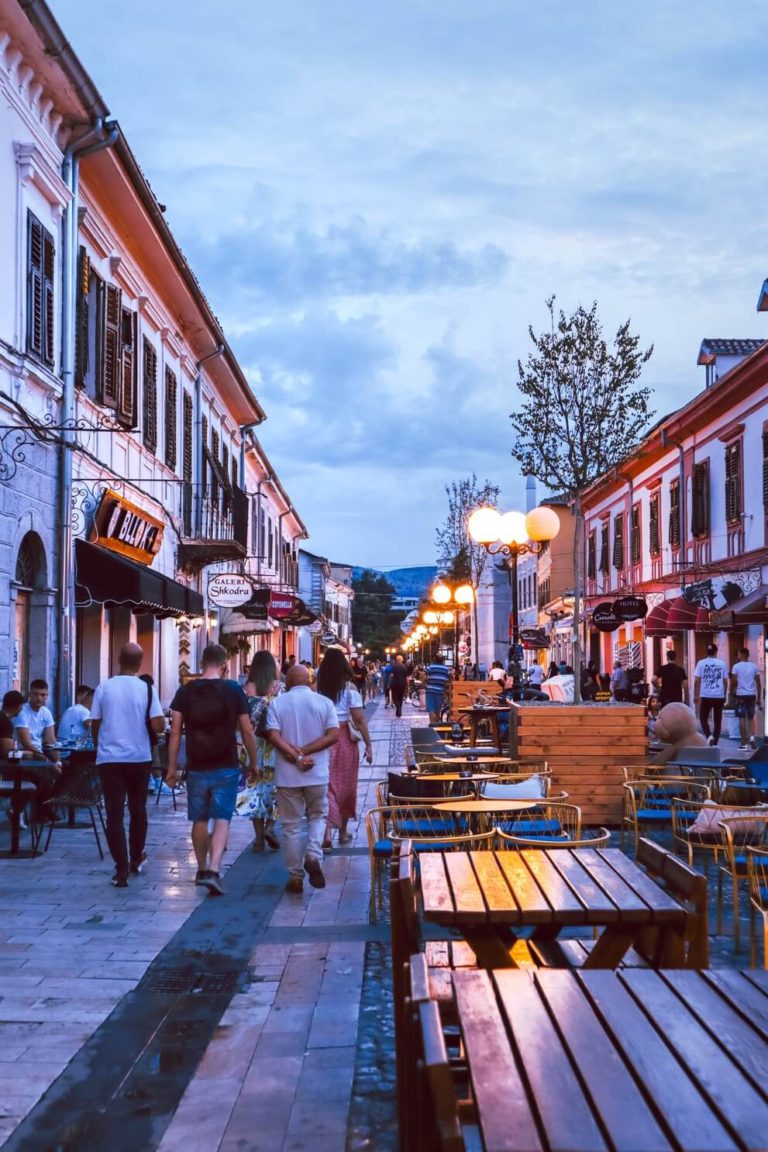
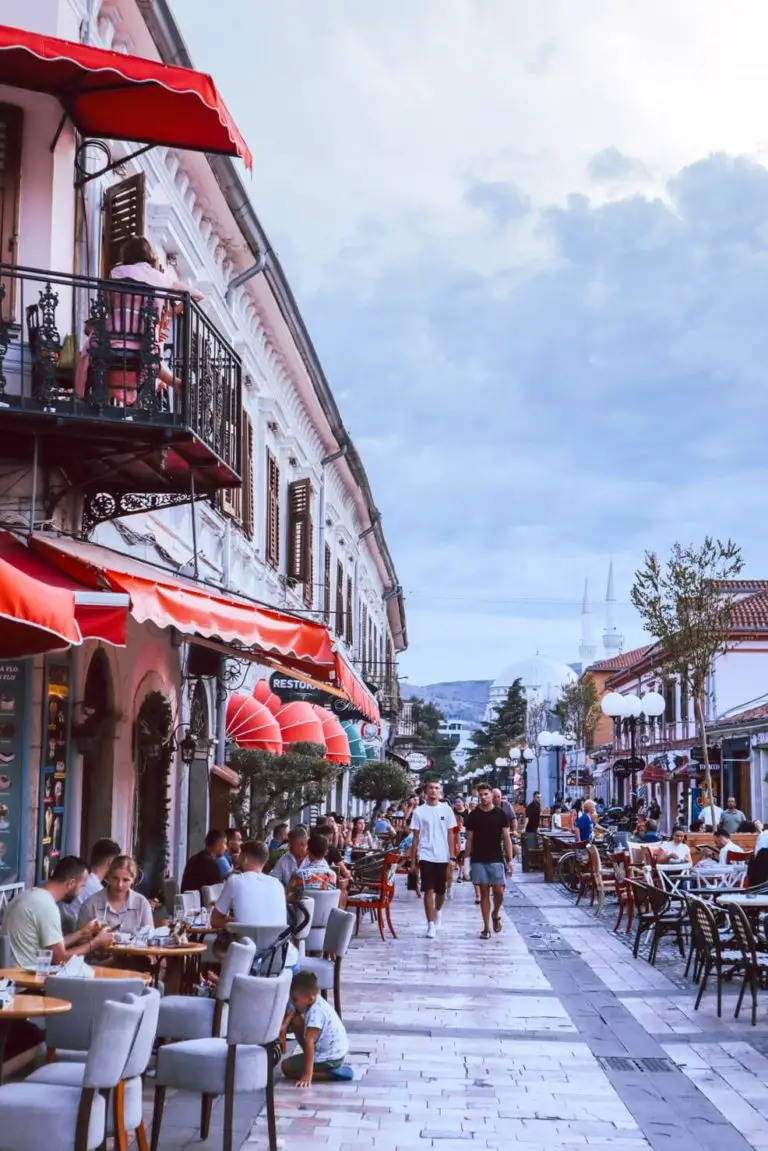
Rozafa Fortress
As your day in Shkodër comes to a close, make sure to visit Rozafa Fortress for sunset.
Sitting high on a hill, the fortress offers spectacular panoramic views of Lake Shkodër and the surrounding mountains, making it one of the most scenic spots in the region. Watching the sun dip behind the hills is a magical experience, one you won’t want to miss.
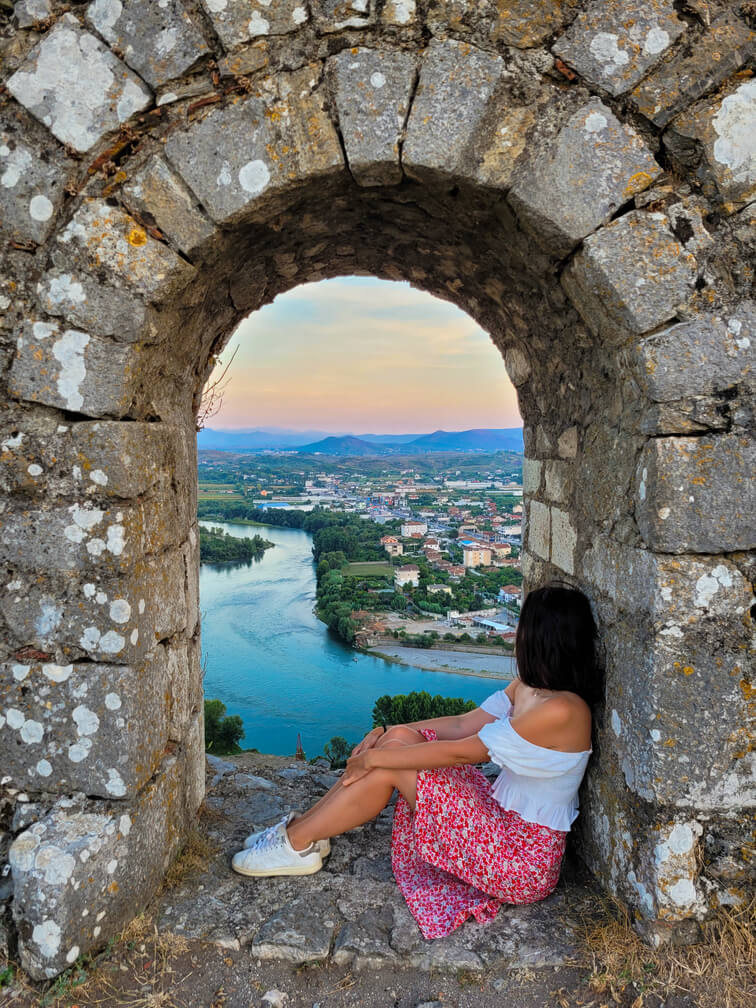
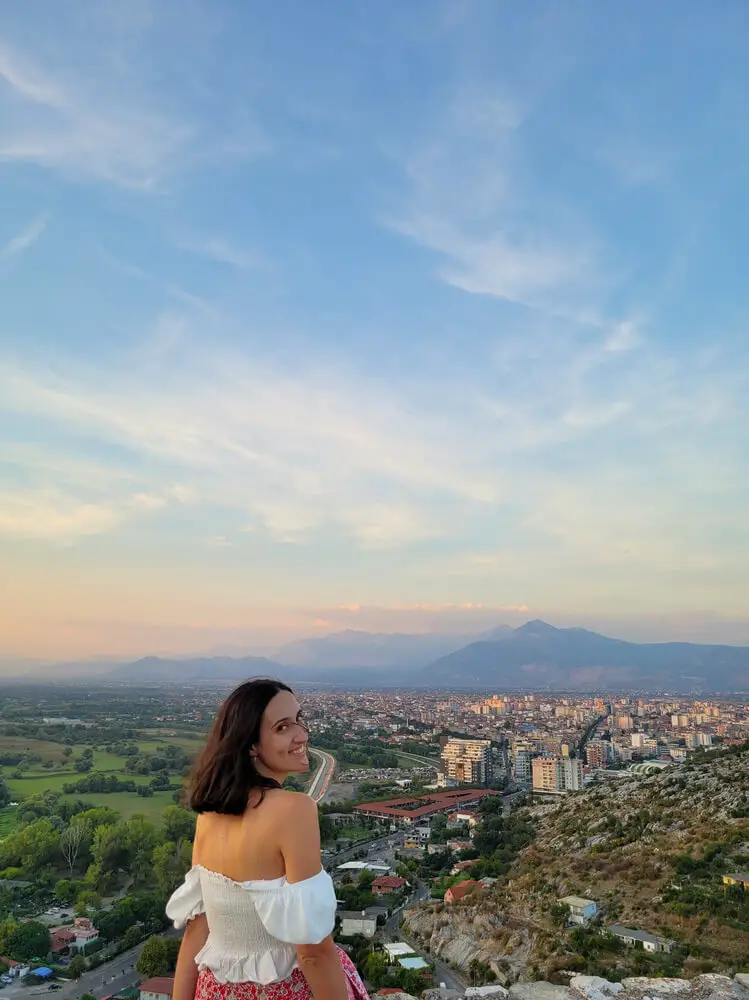
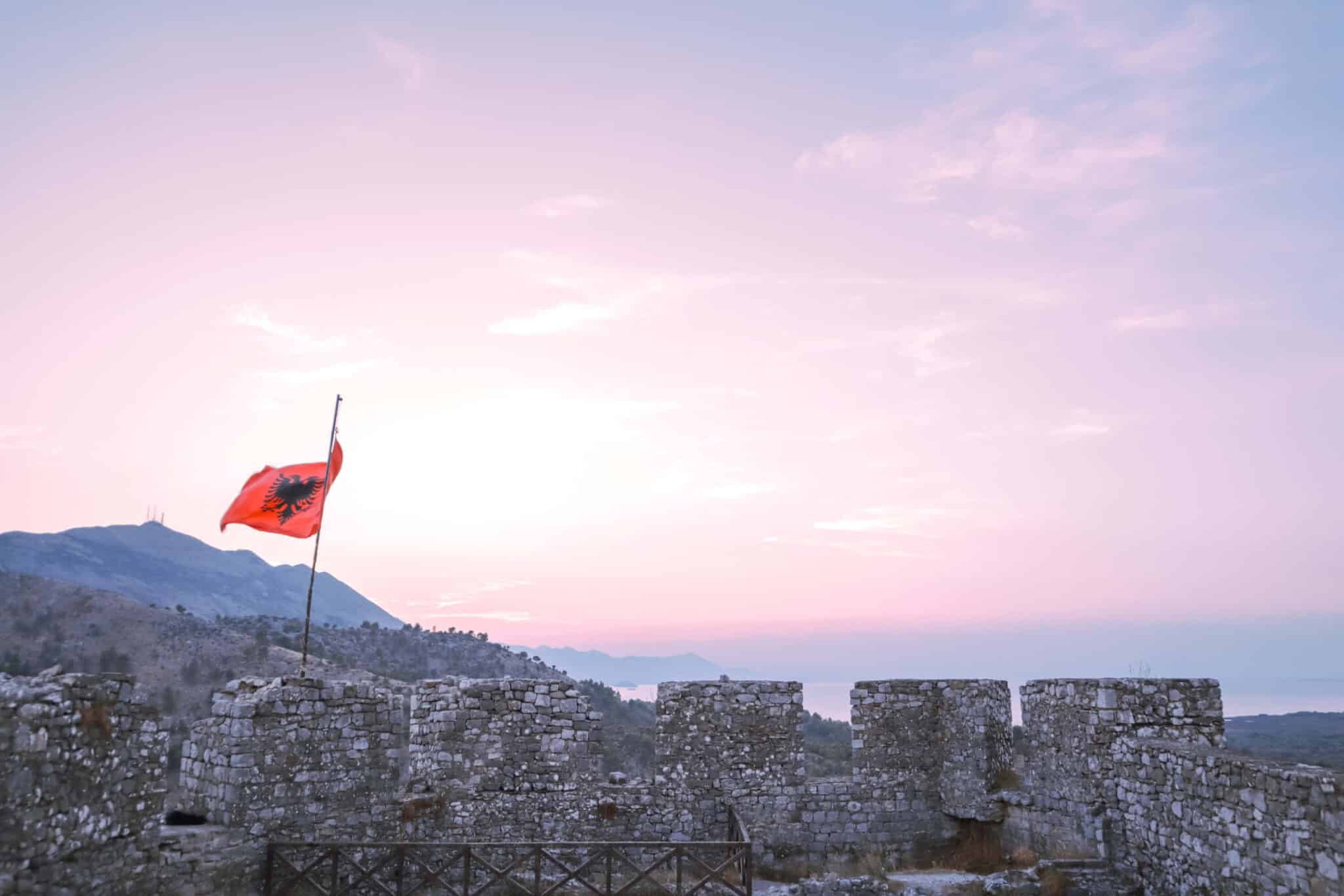
📝 USEFUL INFORMATION: Rozafa Fortress is easily accessible by car, and there’s a small, free car park nearby. Entrance to the fortress costs 400 LEK (~4€).
Accommodation in Shkodër
Shkodër is an excellent choice of place to stay in Northern Albania as it is a good starting point to explore areas like Theth or Komani Lake. I chose to stay 2 nights in Shkodër and the guesthouse I stayed in was a real surprise – InTown Guesthouse 😊
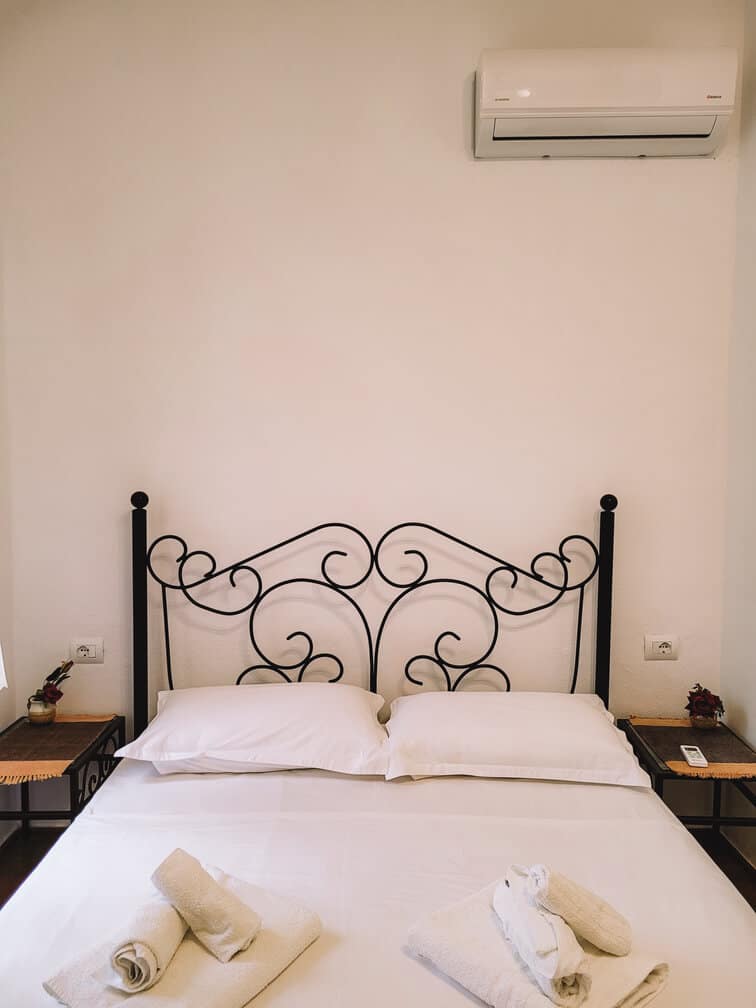
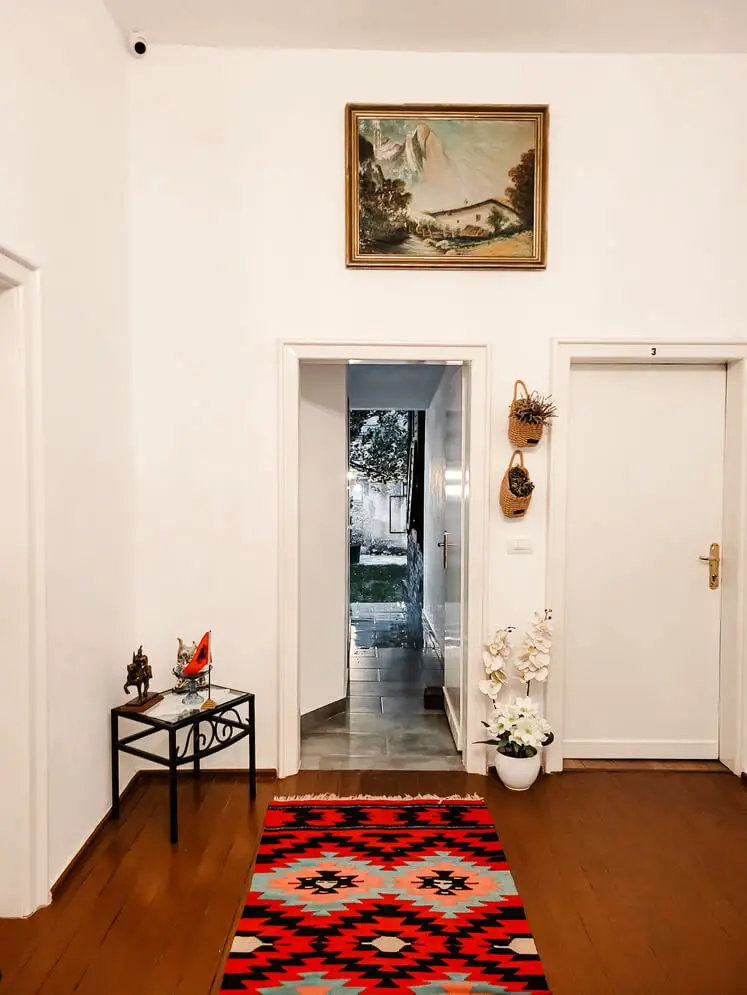
The host was one of the friendliest I’ve ever met while travelling. Centrally located, the guest house is the result of the renovation of a house over 300 years old and only had a few rooms available.
The rooms were simple but lovely. In addition, the guest house also had an indoor garden, where breakfast was served every day.
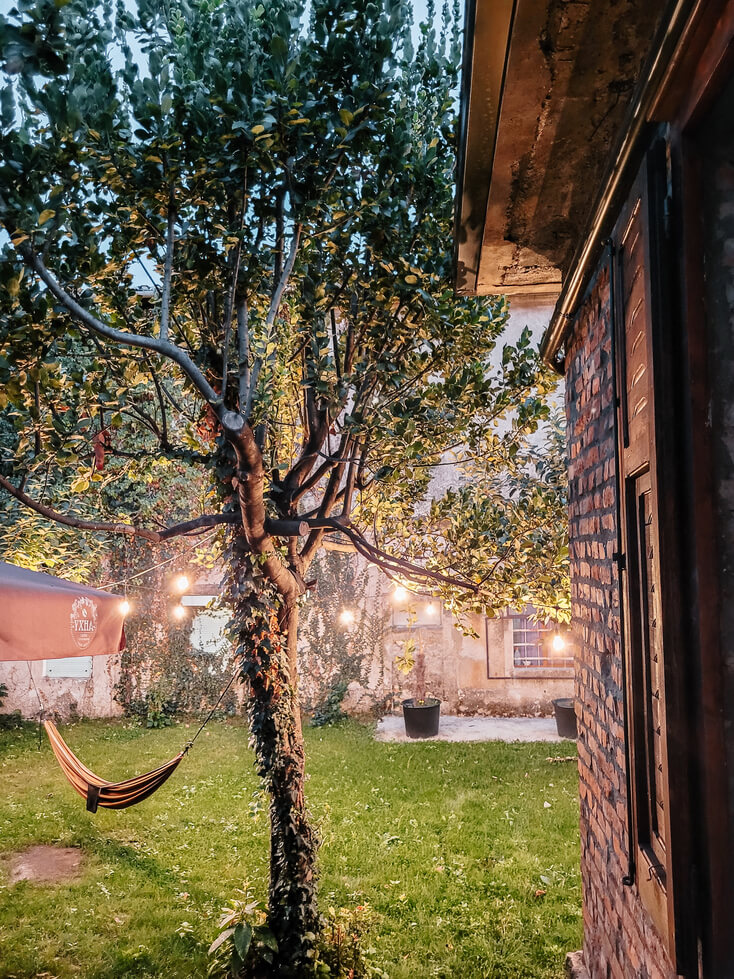
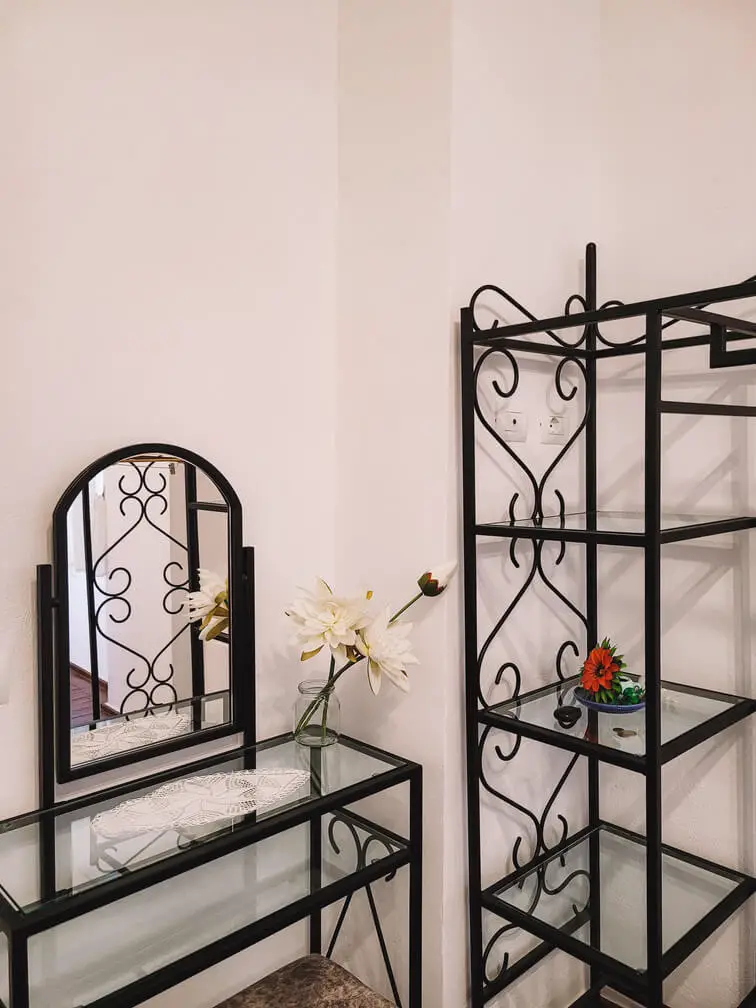
Anyway, Shkodër has several accommodation options, and I leave here some additional suggestions:
Day 5: Shkodër – Theth – Shkodër (152 km; 4h)
I believe it’s best to visit Theth as a day trip from Shkodër and return to Shkodër at the end of the day. This approach will be more convenient for the next day’s journey south, as you’ll already be well-positioned for your travels.
» Theth
If you’re looking for things to do in Albania that are off the beaten path, Theth should definitely be on your list.
This stunning village, surrounded by the towering peaks of the Albanian Alps, is renowned for its natural beauty and peaceful atmosphere.
While the Valbona to Theth trail is one of the most popular hikes in the country, it wasn’t part of my itinerary. But I couldn’t miss the chance to visit Theth, and I’m glad I did!
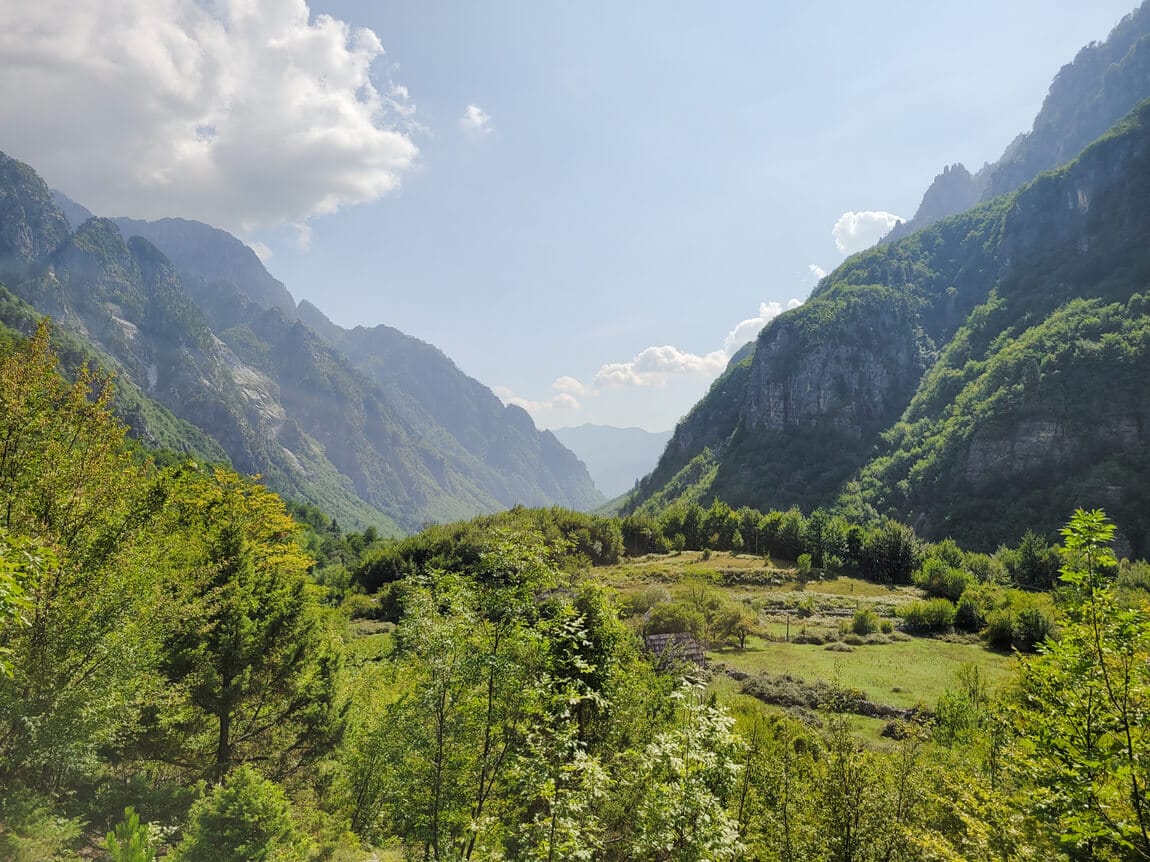
We left Shkodër early and made our way to Theth. The road is in excellent condition, but it is narrow and winding, so the journey takes a bit longer than expected. Trust me, the drive is well worth it for the views and the village waiting for you.
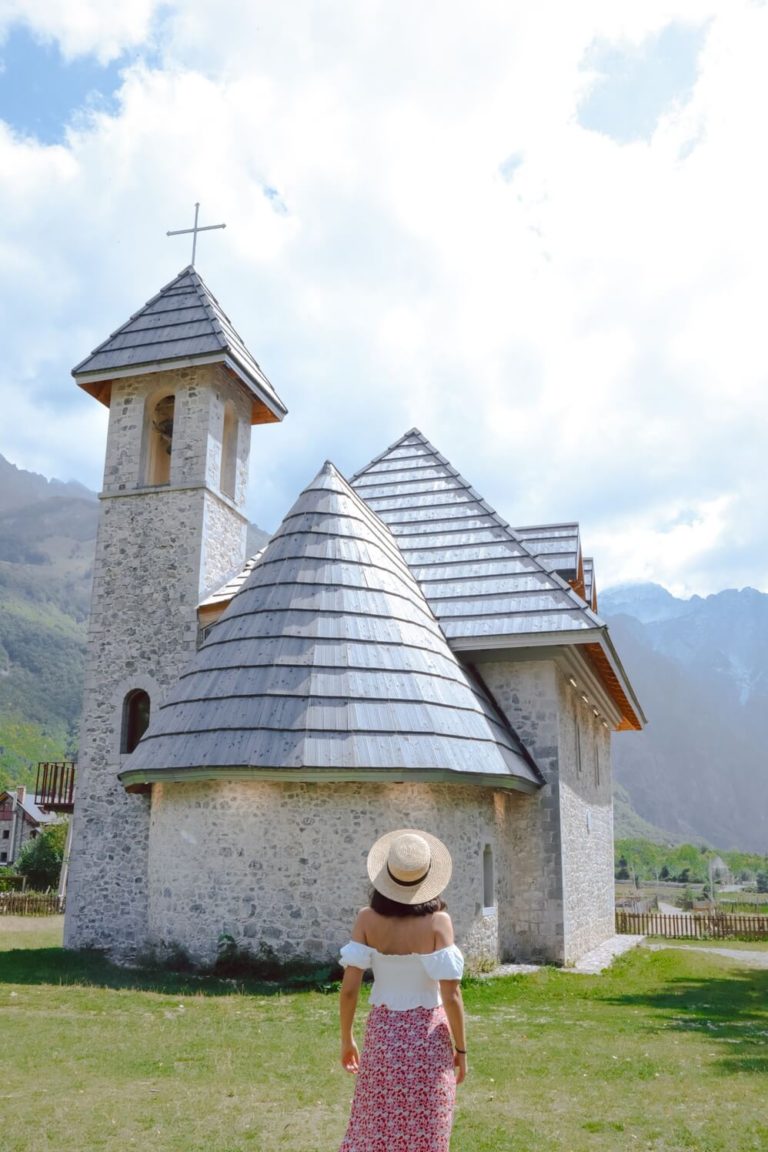
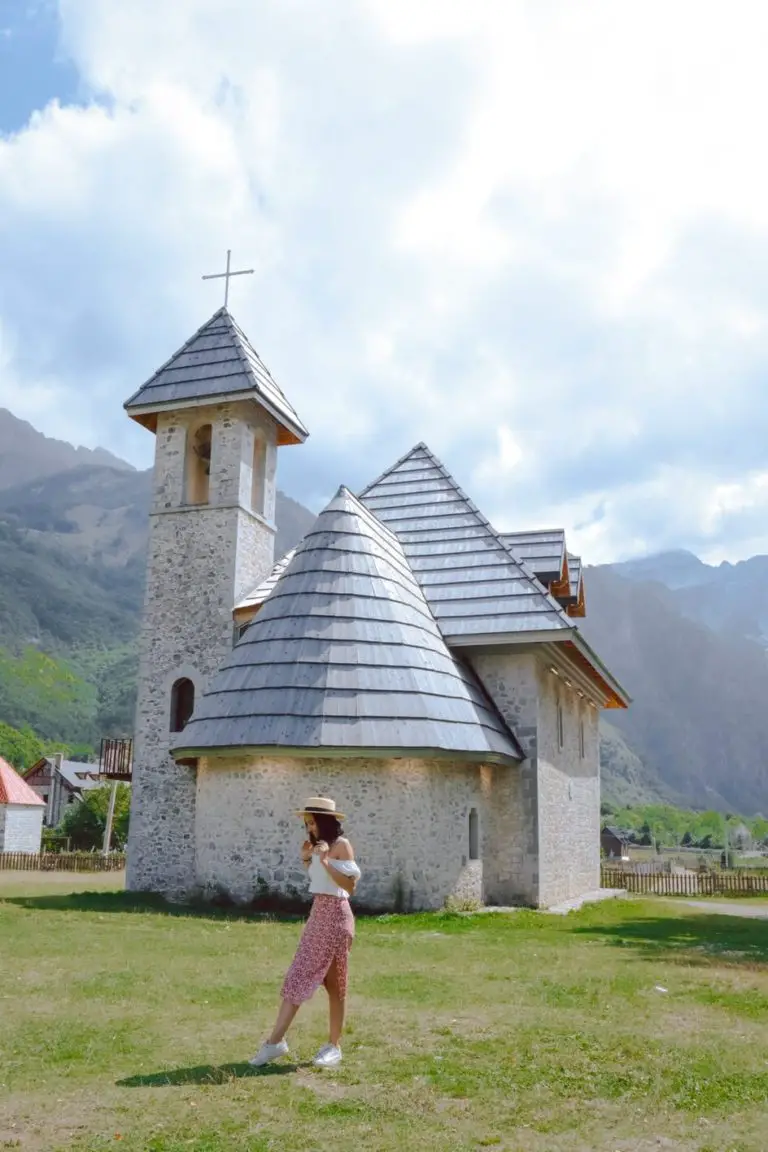
What to visit in Theth
While Theth isn’t packed with sights, it has a unique charm that makes it special.
The first stop for most visitors, including myself, is the Church of Theth. This 19th-century church, set against the backdrop of majestic mountains, is a must-see. The scenery alone makes it worth the visit!
📝 USEFUL INFORMATION: It is possible to drive almost to the church, although the last part of the route has some gravel. We parked the car near the church and went to explore it on foot.
Next, don’t miss the Lock-in Tower. This historic tower was once used to imprison individuals who violated the Kanun, a set of ancient Albanian laws.
It’s a fascinating site, offering a glimpse into the country’s more tumultuous past. According to the Kanun, individuals could only be released when the victim’s family forgave them, or if a member of the criminal’s family was killed as revenge. It’s a dark, yet intriguing part of Albania’s history.
Funny times, don’t you think? 🤷
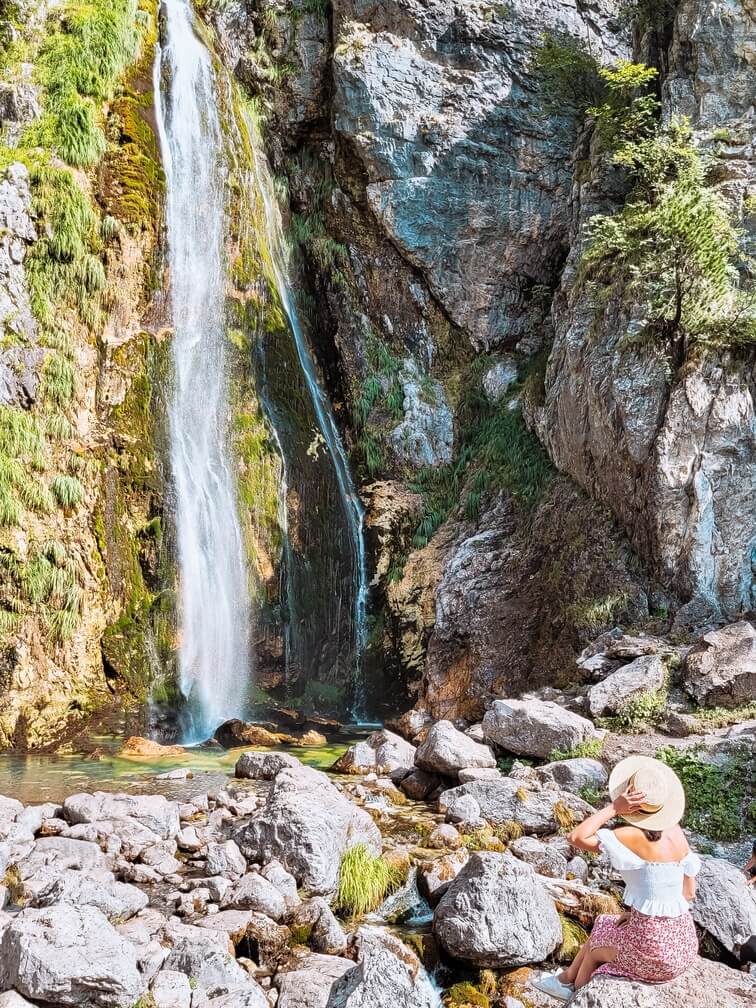
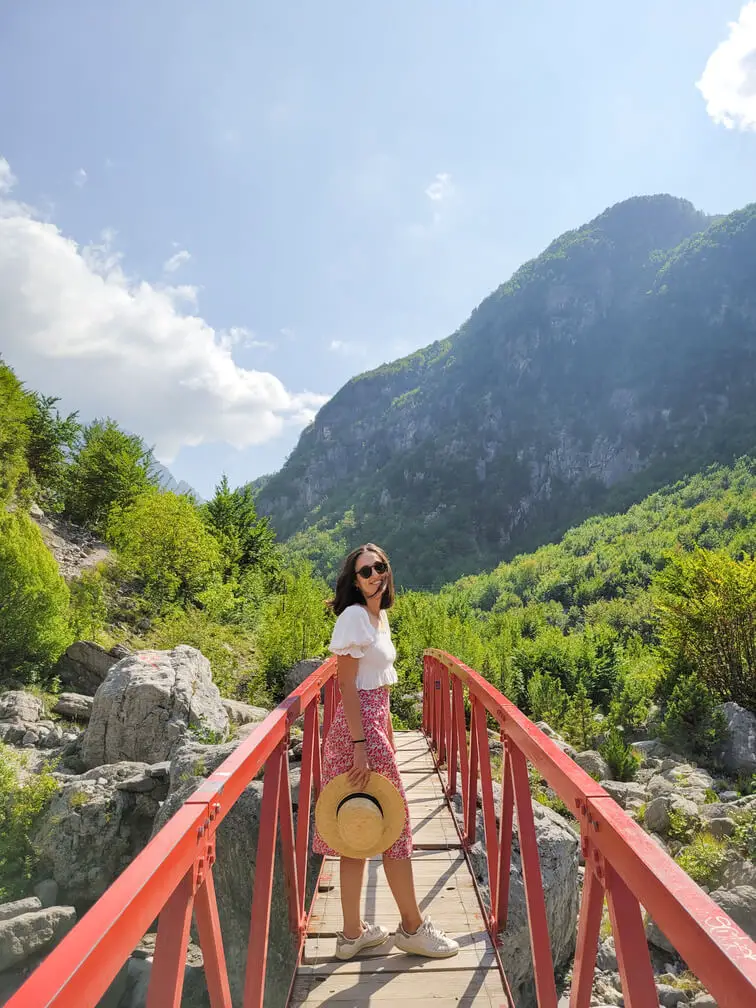
For nature lovers, a visit to Grunas Waterfall is also a must.
Although it wasn’t initially planned, I was convinced to go and was happy I did. The waterfall is a 45-minute walk from the centre of Theth, and while the trail isn’t always clearly marked, the effort is worth it. The waterfall’s beauty, surrounded by lush greenery, is breathtaking.
💡 EXTRA TIP: If you have more time, consider hiking to the Blue Eye of Theth, a stunning natural spring. This 17 km round trip trail offers a more challenging hike, but the scenery along the way looks incredible.
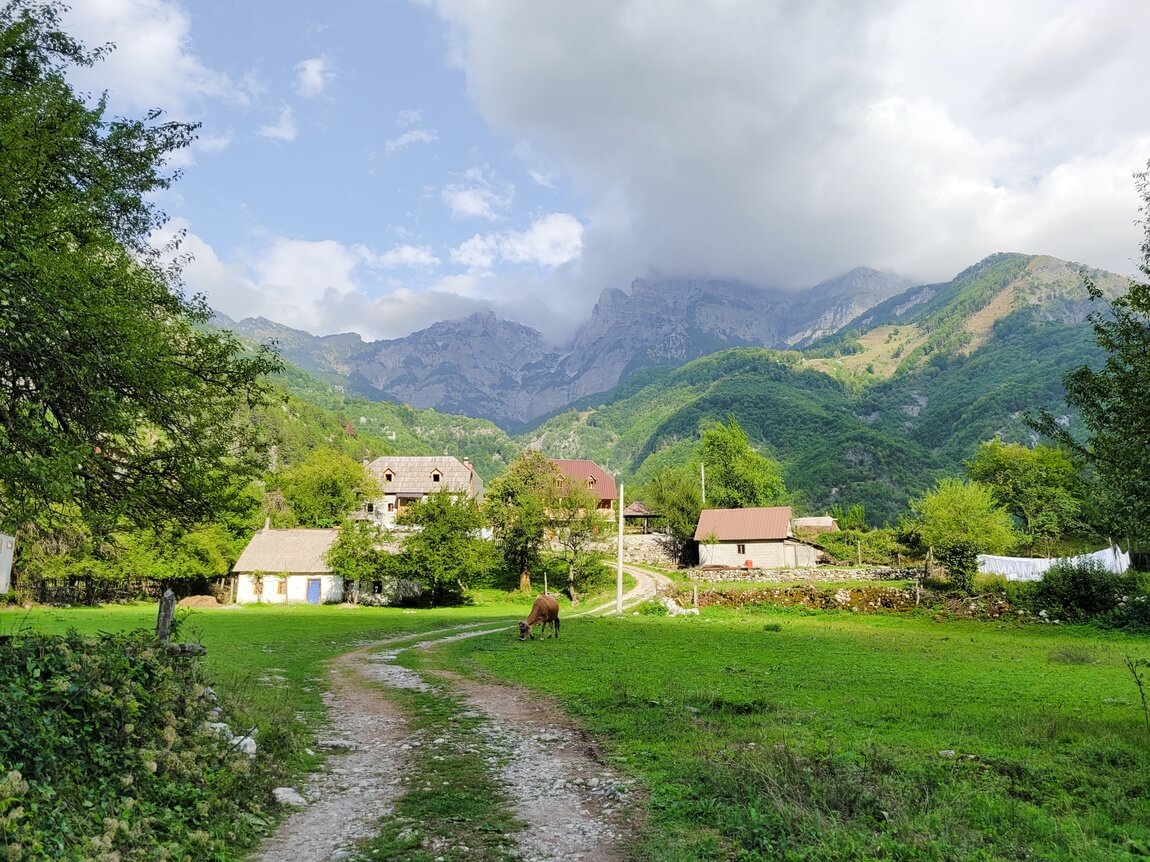
Did I visit Theth just to see a church, a tower, and a waterfall? Yes, and it was 100% worth it.
Theth offers a unique experience in Albania, showcasing the beauty and history of the region, making it one of my favourite spots in the country. If you’re seeking an escape into nature, Theth is a place you won’t want to miss.
Day 6: Shkodër – Berat (196 km; 3h)
Start your day in Shkodër, a city full of history and charm, before heading south towards Berat, one of Albania’s most picturesque and historically significant towns.
💡 EXTRA TIP: If you have some time available in your itinerary, you can add Petrela Castle to your list of places to visit on this day as it is almost on the way to the next point – Berat.
» Berat
Berat, often referred to as the “City of a Thousand Windows,” is one of Albania’s most iconic destinations. The city is known for its charming white houses with distinct windows that make for an unforgettable sight.
As a UNESCO World Heritage Site, Berat is a must-see for anyone visiting Albania, offering a blend of stunning architecture, rich history, and breathtaking views.
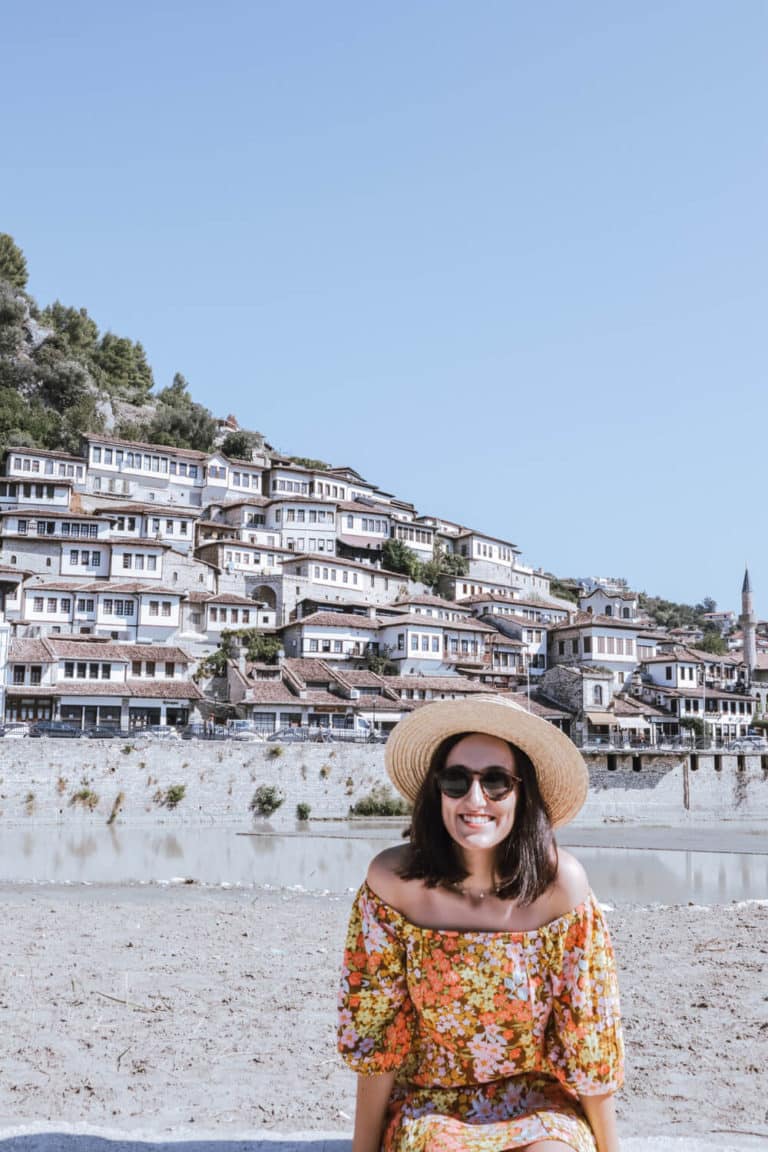
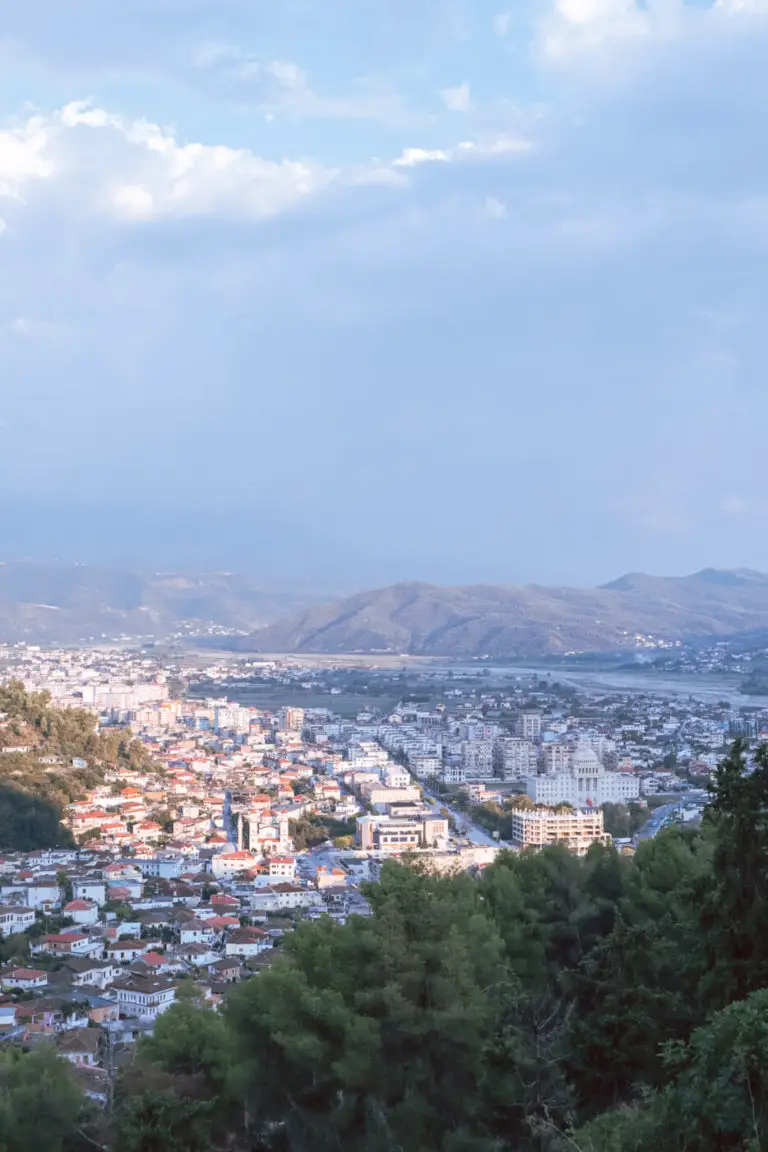
Exploring the Two Quarters: Mangalem and Gorica
Berat is divided by the Osum River into two quarters: Mangalem and Gorica.
Gorica is the quieter side of the city, perfect for a leisurely stroll. This area provides the best photo opportunities, especially for capturing the famous “windows” of the white houses that are so characteristic of the city.
It’s a peaceful side to explore, away from the crowds, where you can enjoy the authentic atmosphere of Berat.
Crossing the Gorica Bridge to Mangalem
After taking in the views from Gorica, cross the Gorica Bridge to reach Mangalem, the bustling heart of Berat. This area is livelier, especially along Bulevardi Republika, a popular street where locals gather in the evening.
As you wander, don’t miss the Lead Mosque and the Cathedral of St. Demetrius, both of which are significant landmarks of Berat’s cultural history.
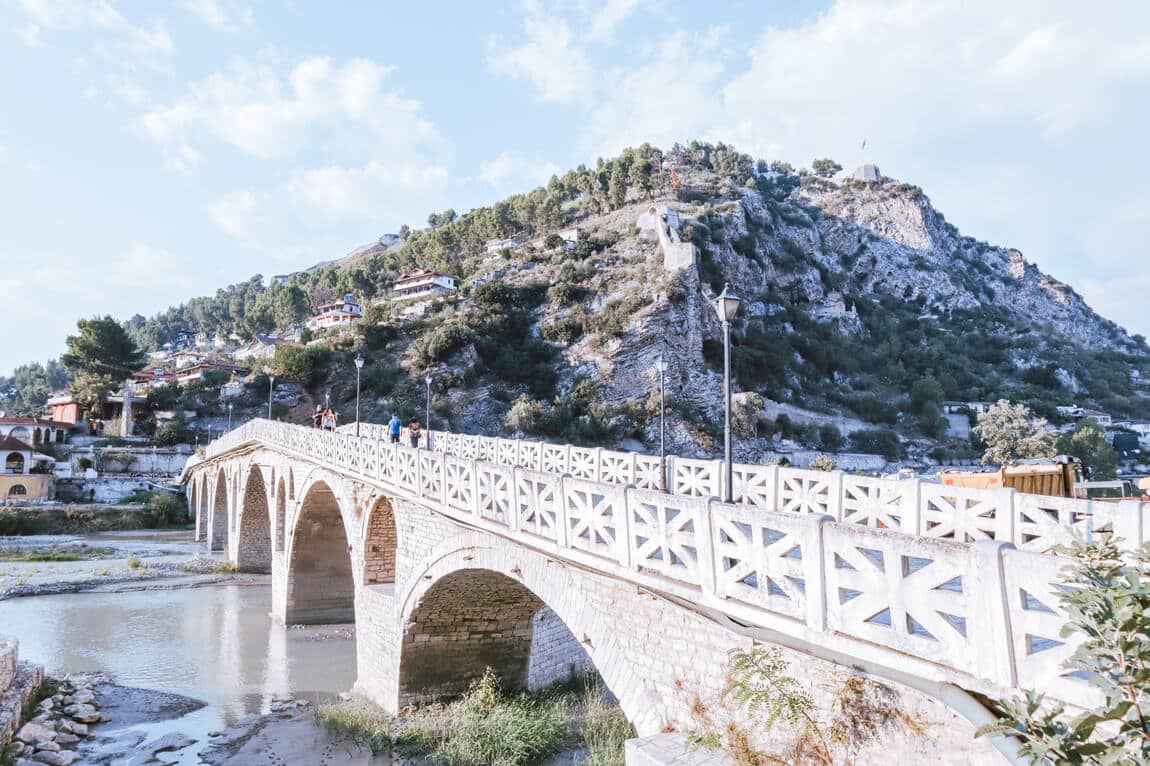
Visit Berat’s Castle
The highlight of your visit should be Berat Castle, perched high above the city with commanding views of the surrounding landscapes.
The castle is an expansive complex with several historical sites inside, including the Red Mosque ruins and the Church of the Holy Trinity.
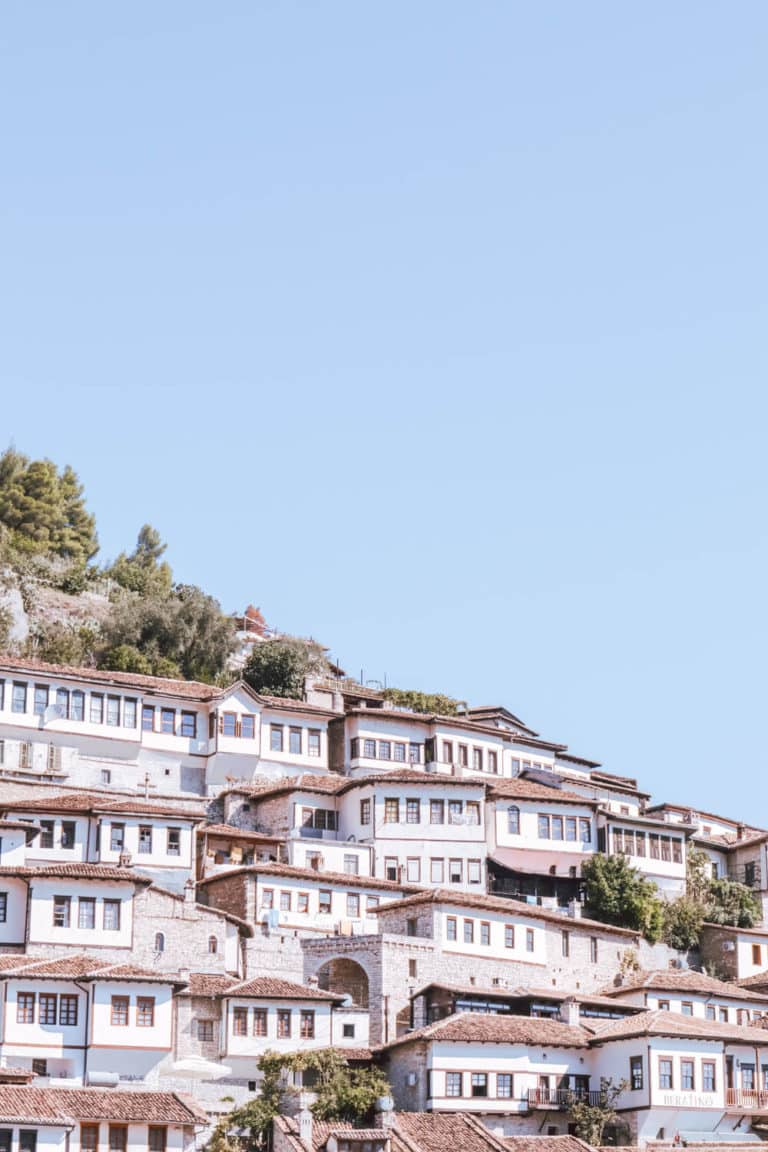
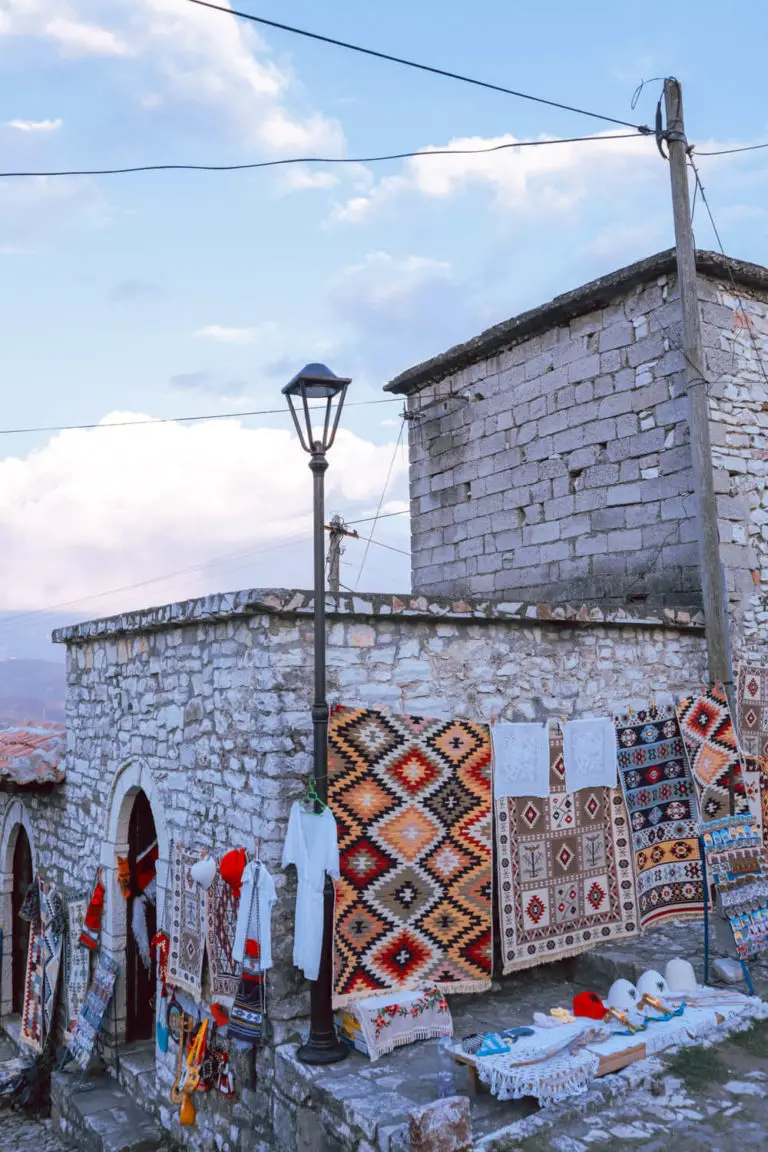
I recommend spending 1 to 1.5 hours exploring the castle to fully appreciate its historical significance and the stunning vistas it offers. It’s especially magical at sunset 😊
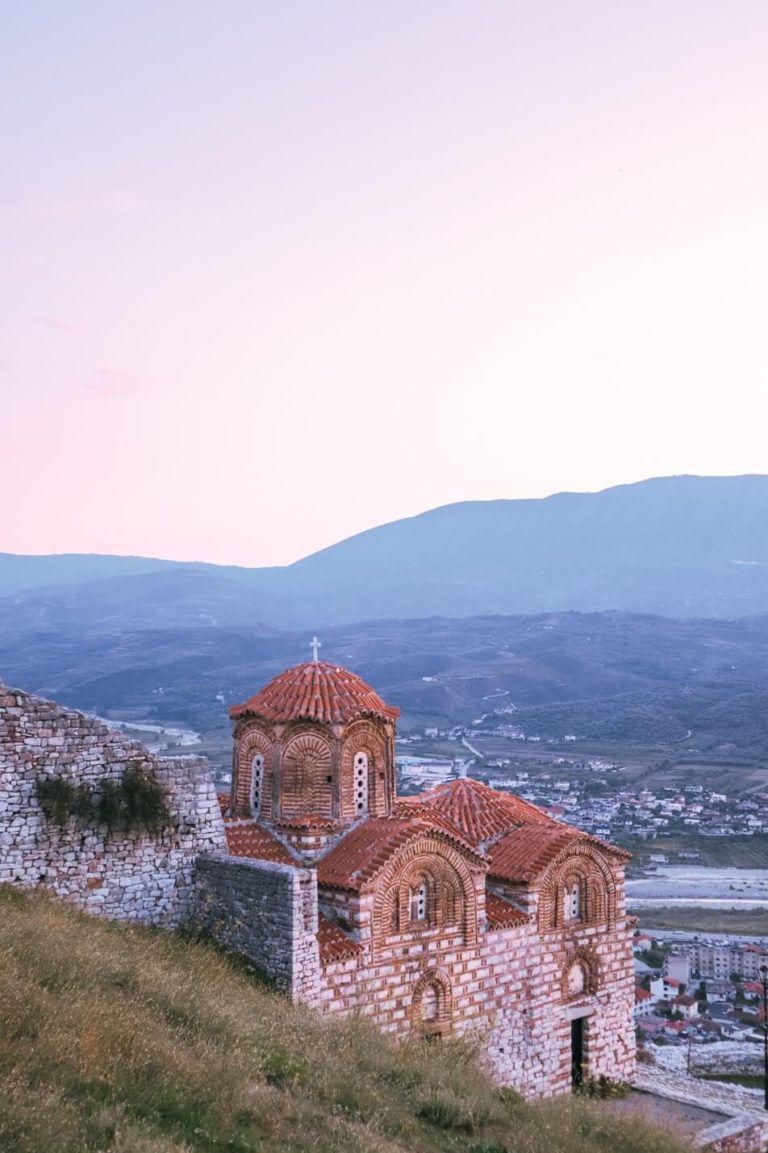
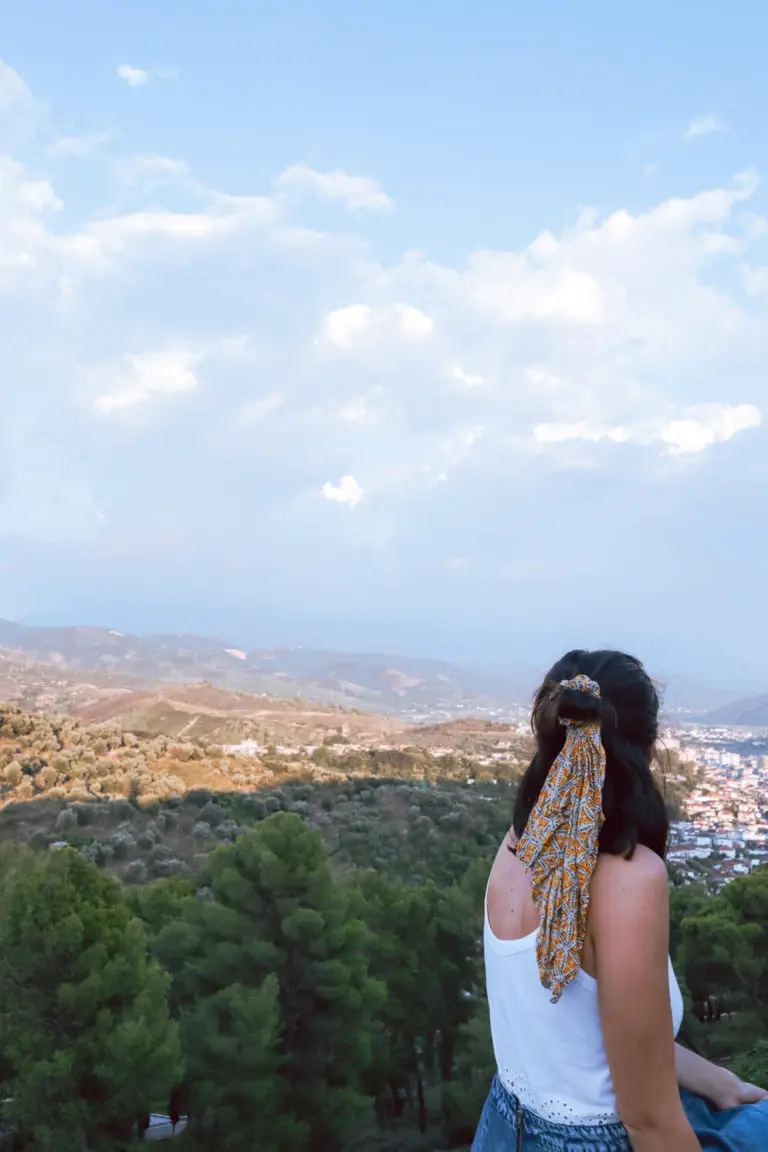
For a more detailed guide on what to do in Berat, check out my best things to do in Berat post. You’ll find useful tips for planning your visit, including must-see attractions and hidden gems in this beautiful city.
Accommodation in Berat
I stayed at Tradita e Beratit, a simply lovely accommodation that is the result of the restoration of a typical house of the region that is over 300 years old.
It is a very small but truly welcoming accommodation 🥰. Nothing in the decor has been left to chance!
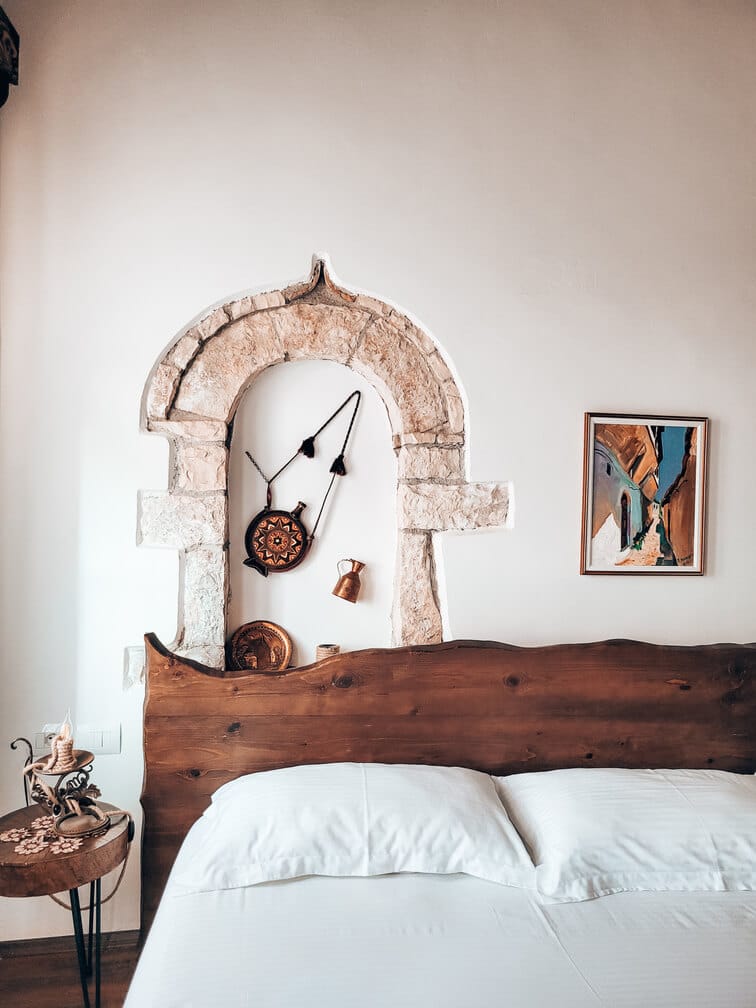
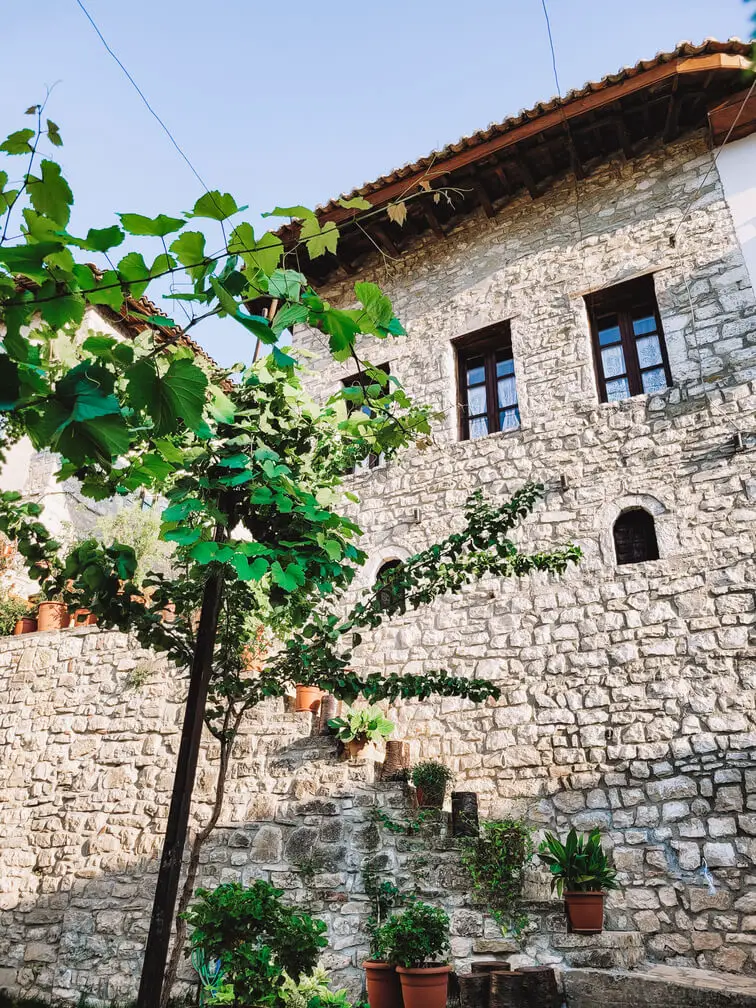
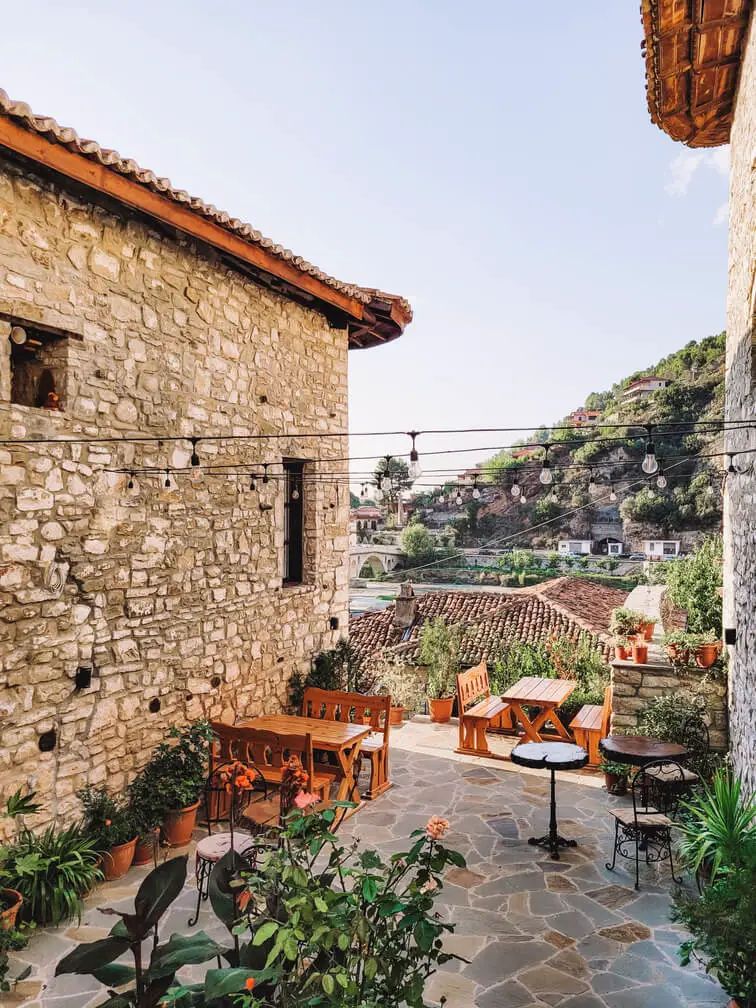
In addition, Tradita e Beratit has a small restaurant where we can try a degustation menu with regional products and also where breakfast is served the next day.
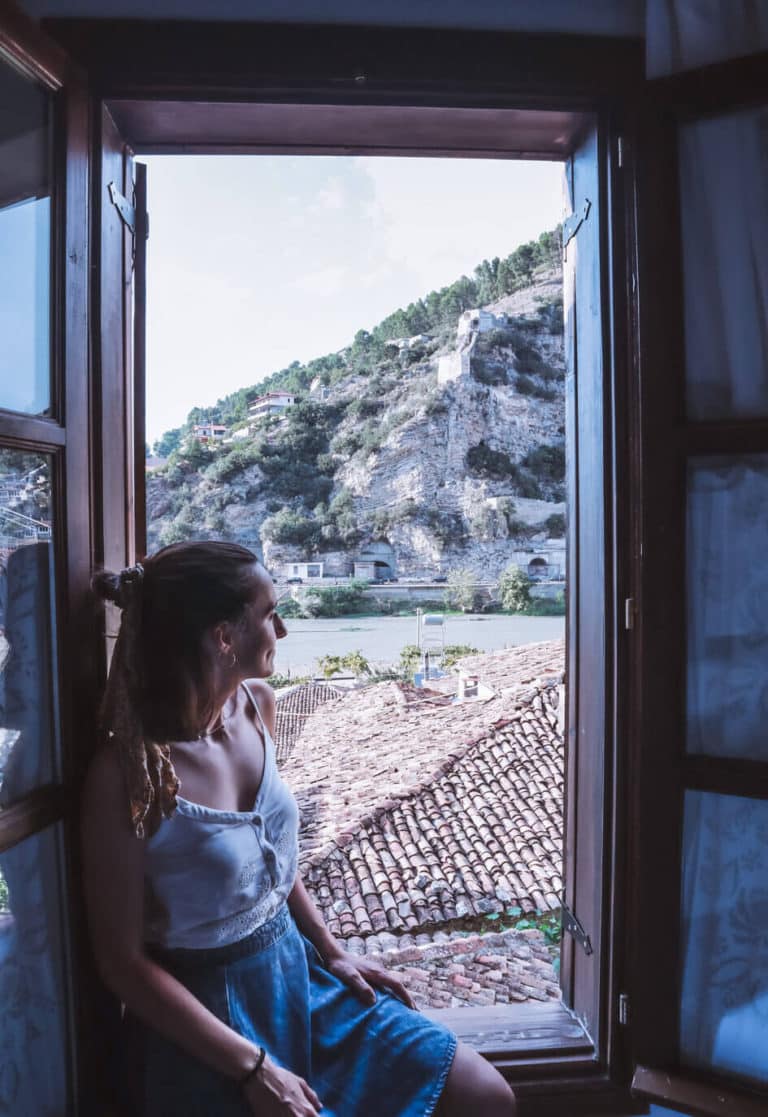
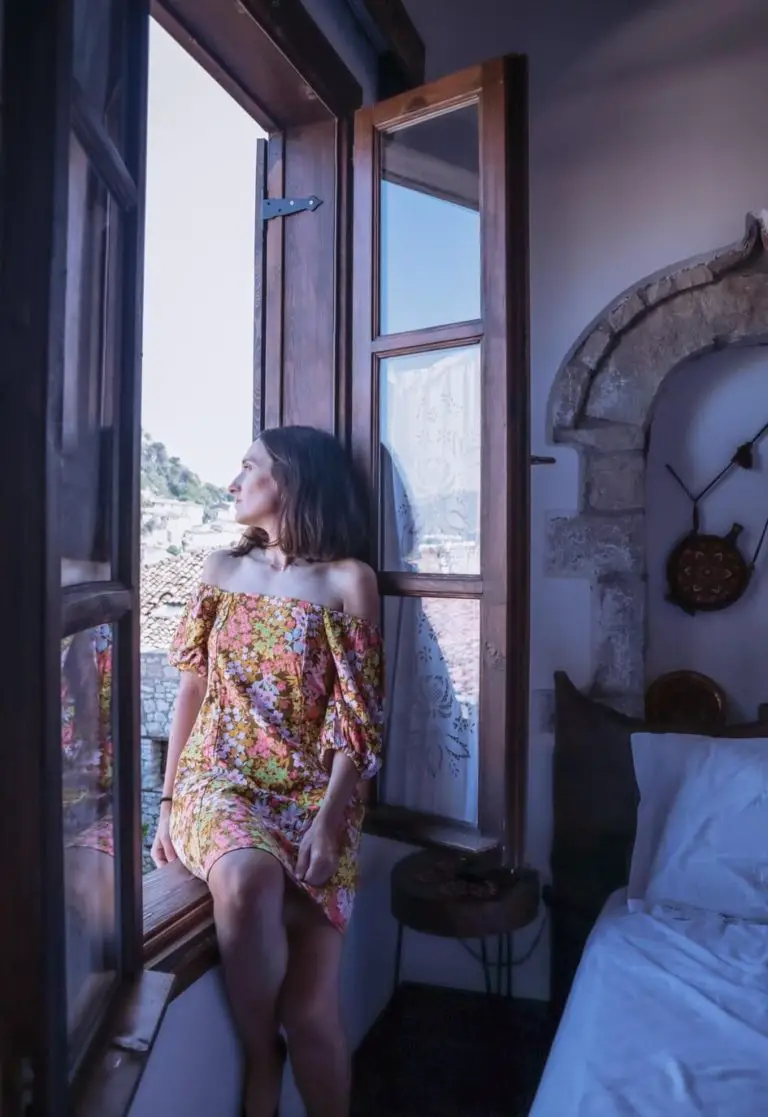
If you visit Berat, you will not want to miss this accommodation, I assure you. In any case, here are a few more suggestions of where to stay in Berat:
Day 7: Berat – Gjirokastër – Sarandë (231 km; 3h20)
On day 7 of your Albania itinerary, you’ll travel from Berat to Gjirokastër, another UNESCO World Heritage site, known for its rich history and well-preserved Ottoman architecture.
End the day in Sarandë, the perfect base for the next few days as you’ll be exploring the stunning Albanian Riviera.
» Gjirokastër
Gjirokastër is often referred to as one of the most charming towns in Albania and is a must-visit destination for anyone exploring the country.
The town’s stunning architecture, historical significance, and breathtaking views make it an unforgettable stop on your itinerary.
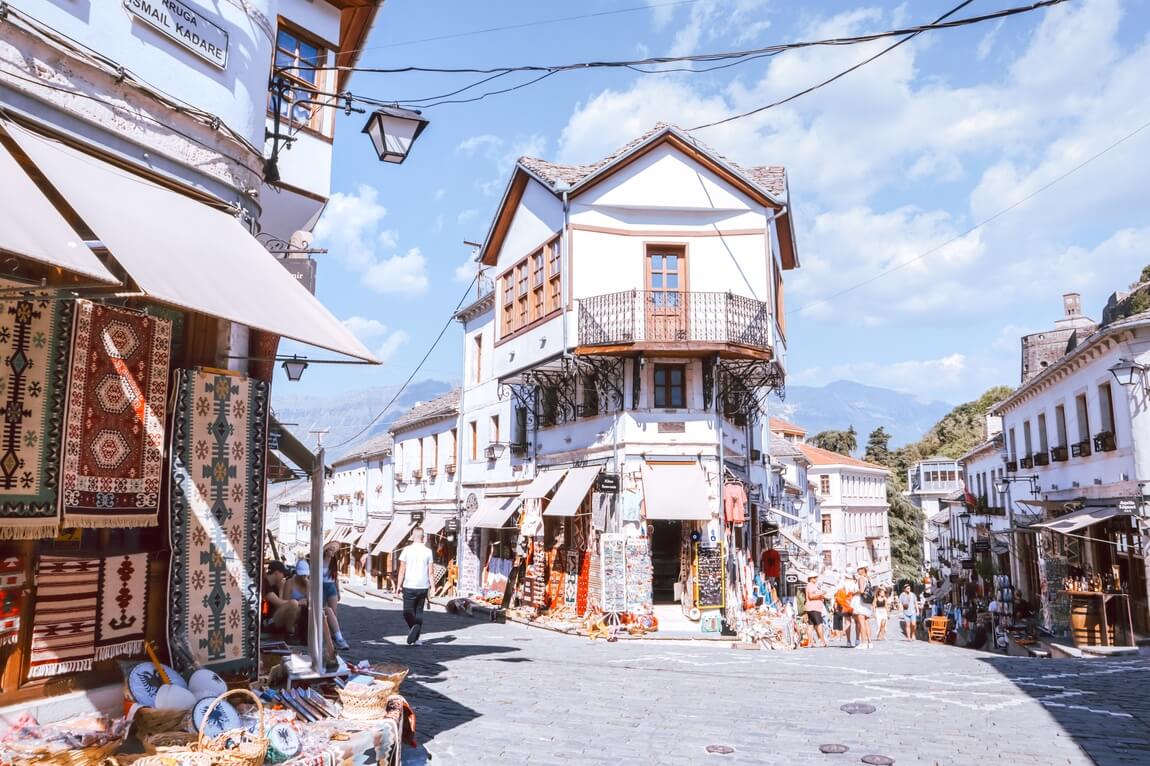
Discover the Old Bazaar
The Old Bazaar in Gjirokastër is one of the city’s most iconic spots, and it’s typically the first place visitors encounter when they arrive. You’ll find a variety of handicrafts, local goods, and traditional Albanian products.
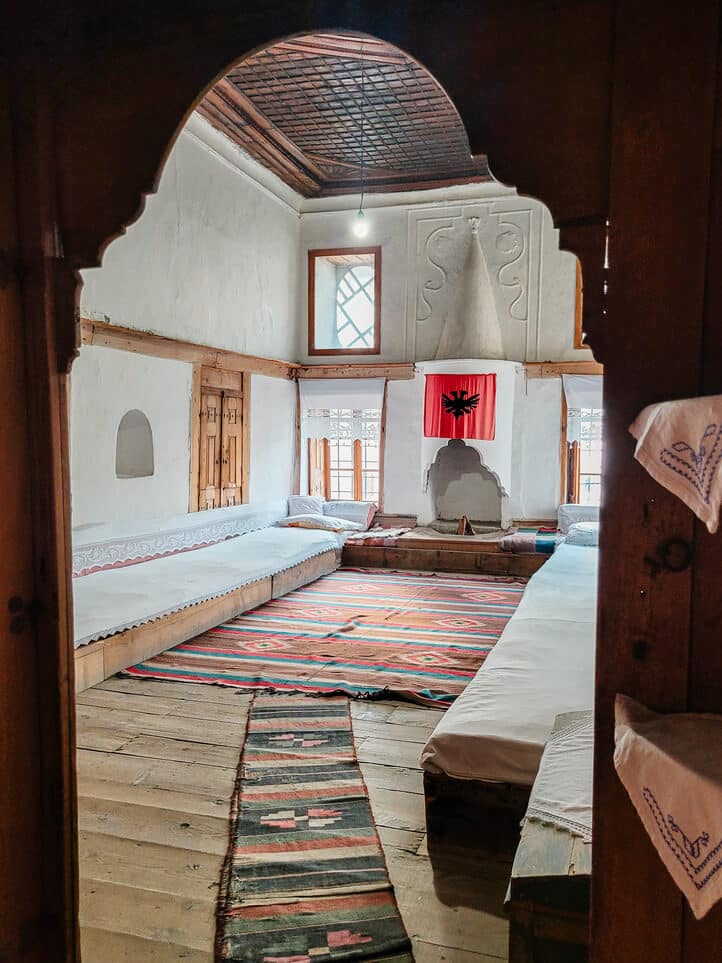
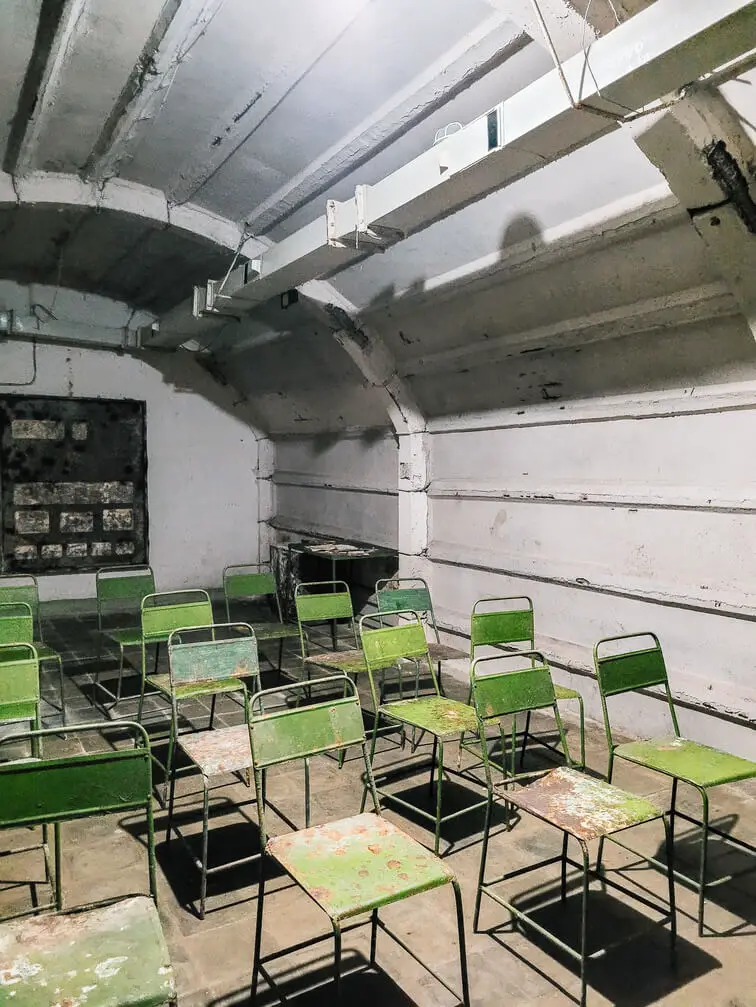
Cold War Tunnel
One unique historical site in Gjirokastër is the Cold War Tunnel, a remnant from the communist era of Albania’s history. This underground tunnel offers a glimpse into the country’s efforts to protect itself during a time of political tension.
Skenduli House and Zekate House
Gjirokastër is home to many beautifully preserved Ottoman houses, and two of the most famous are the Skenduli House and Zekate House. Both provide a glimpse into the lifestyle of 18th-century Albanians.
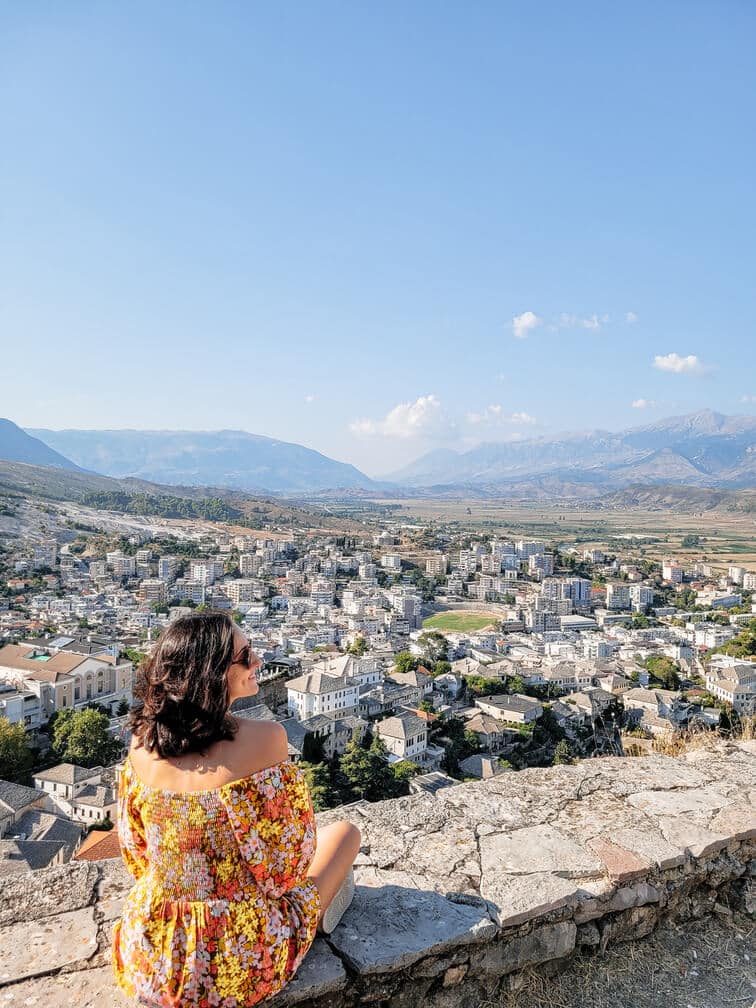
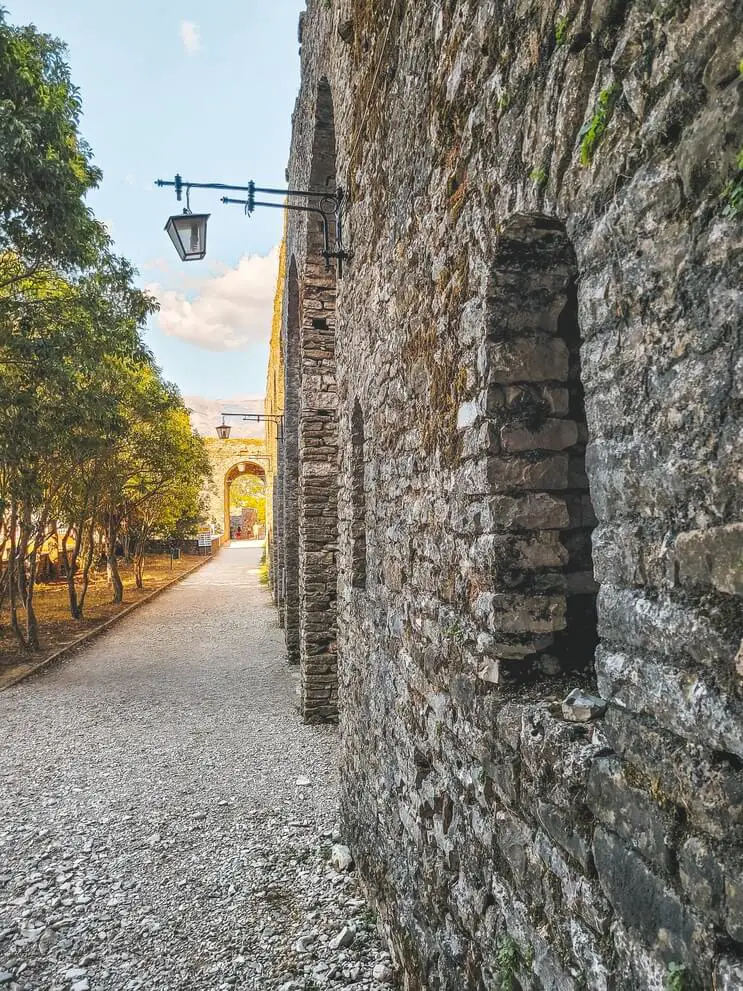
Gjirokastër Castle
The highlight of any visit to Gjirokastër is the Gjirokastër Castle, which stands majestically over the town. This large fortress offers spectacular views of the valley below and gives visitors a sense of the town’s historical importance.
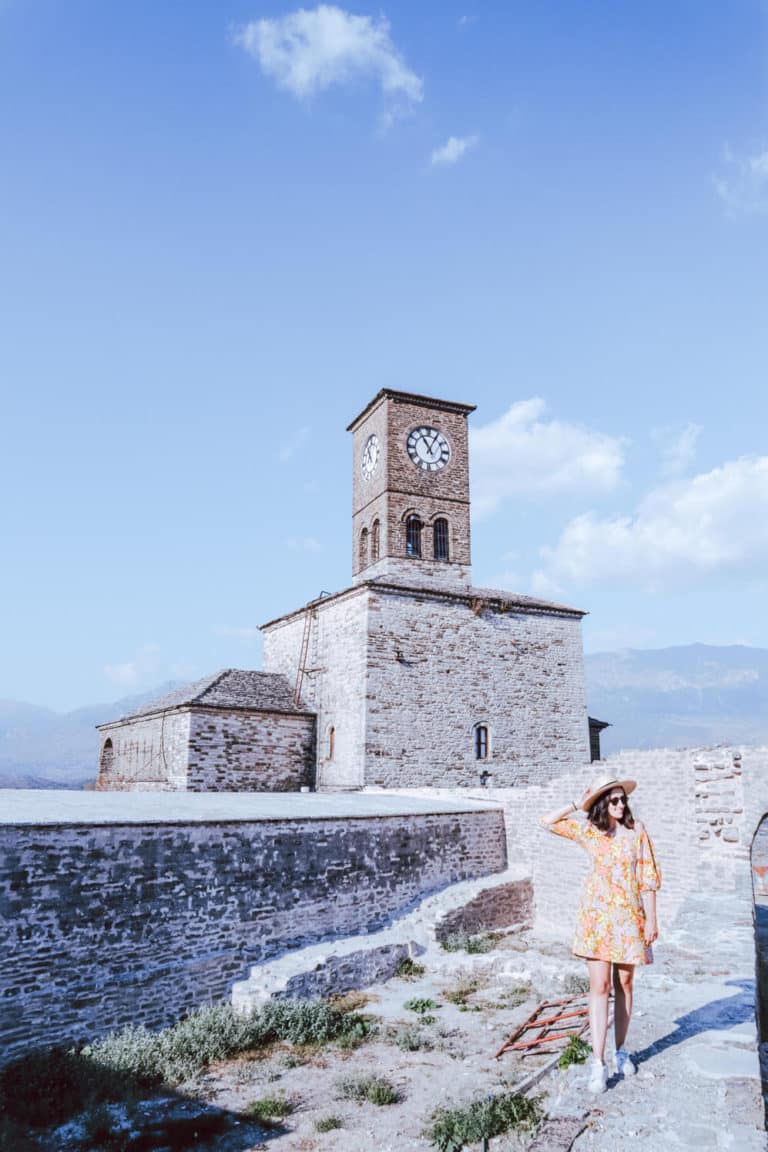
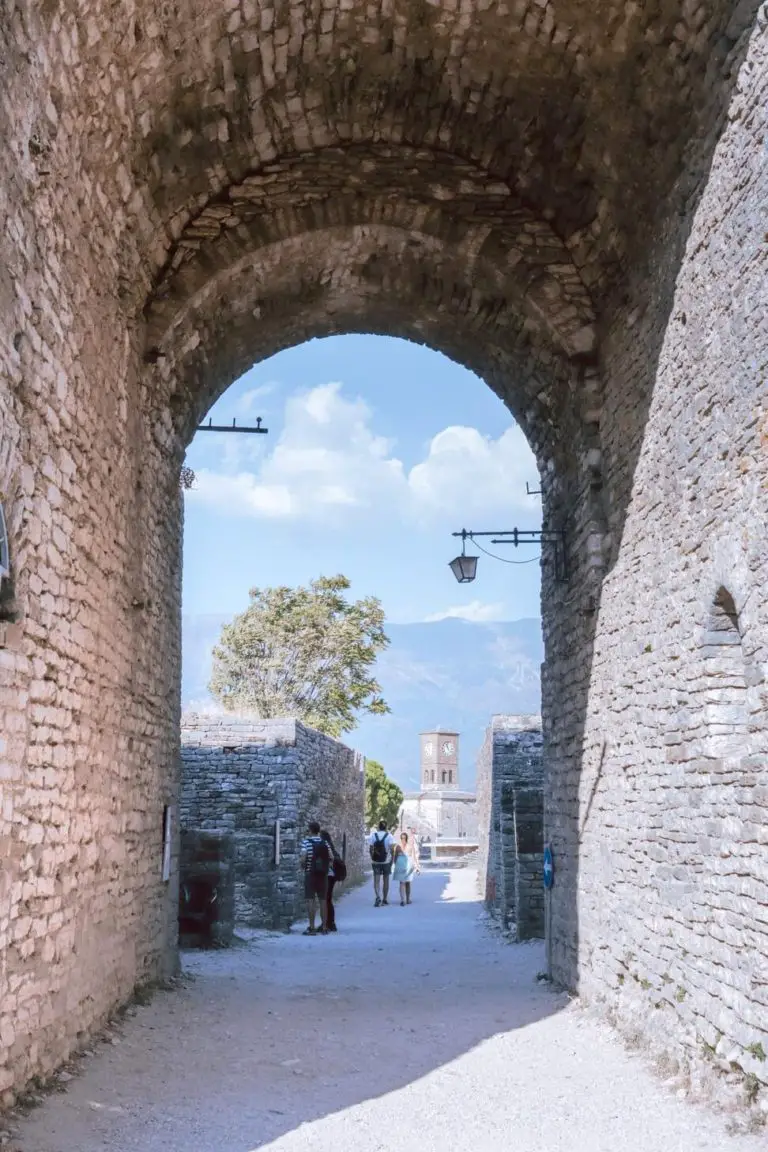
For a more detailed guide, check out my post on the best things to do in Gjirokastër, where I share more tips and must-see spots in this beautiful Albanian gem.
» Blue Eye
The Blue Eye is a great add-on to include on this day of the itinerary 🥰. Known for its vibrant, eye-catching blue waters, it’s no wonder the Blue Eye draws thousands of visitors every year.
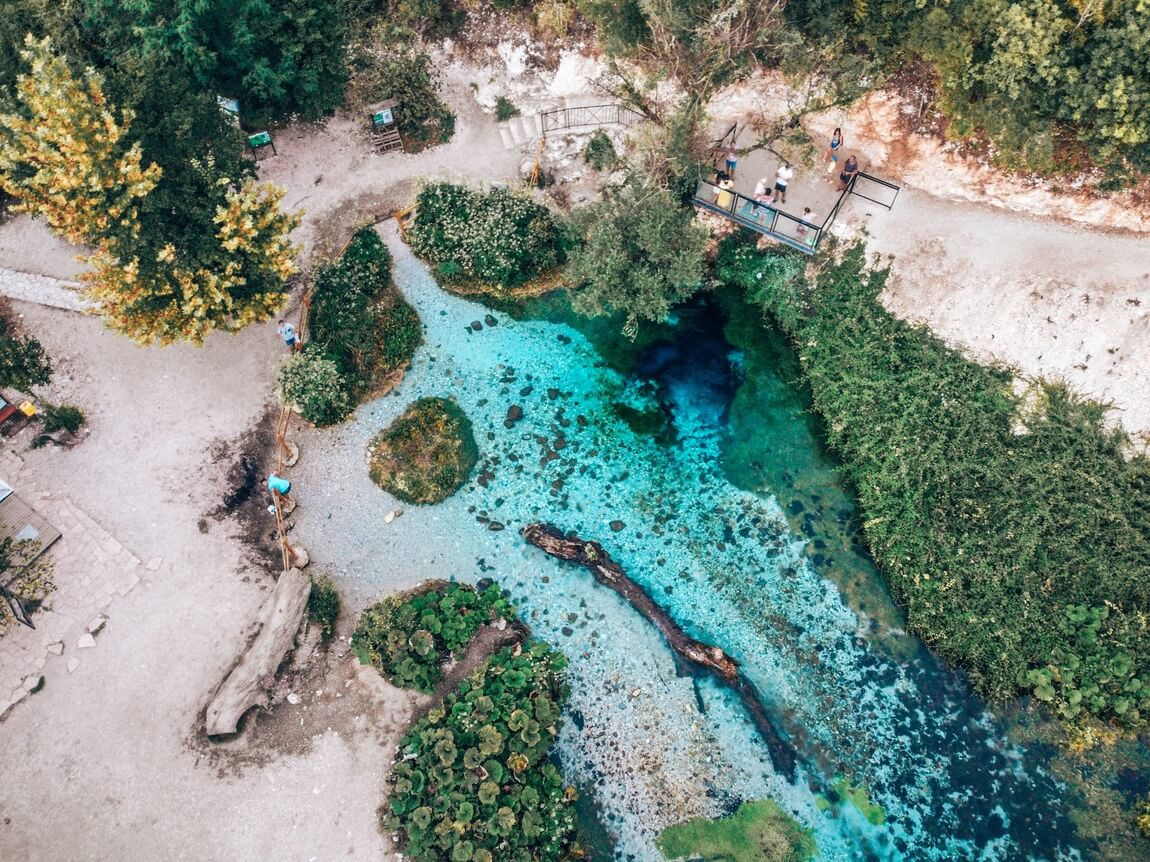
While the water is famously cold, many visitors still choose to dip their feet in, though swimming is not allowed, as indicated by a sign at the site.
📝 USEFUL INFORMATION: You have to pay about 0.5€/pax to enter. The walk to the Blue Eye takes about 20 minutes each way. The trail is mostly tarmacked but has some mild inclines, so be prepared for a bit of a climb. If you wish to visit the Blue Eye without a car, it is also possible. There are buses connecting Gjirokastër to Sarandë, just ask the driver to drop you off at the Blue Eye.
Day 8: Sarandë – Butrint – Ksamil – Sarandë (37 km; 1h10)
Day 8 of your Albania itinerary is all about exploring the stunning coastline and ancient history.
You’ll start the day by visiting Butrint, a UNESCO World Heritage site, before heading to the nearby Ksamil for some beach relaxation. After a day full of culture and natural beauty, return to Sarandë to unwind.
» Butrint National Park
Just 18 km away from Sarandë, another place you really must visit in Albania is the Butrint National Park. The park has more than 9 thousand hectares counting with lakes, marshes, plains, islands, etc. But what brings more tourists to this park is its archaeological zone.
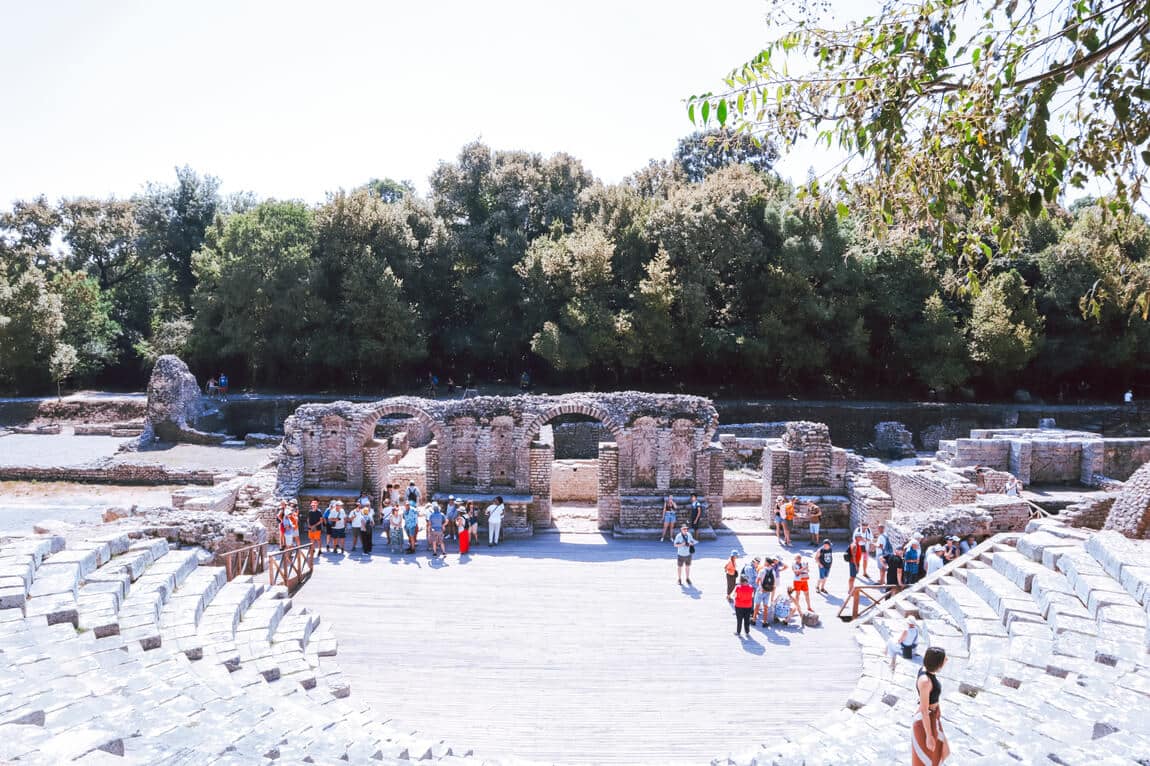
Butrint is a UNESCO World Heritage Site as it contains several artefacts from the Iron Age to the Middle Ages. It is impossible not to visit this place without imagining what life would have been like there so many years ago!
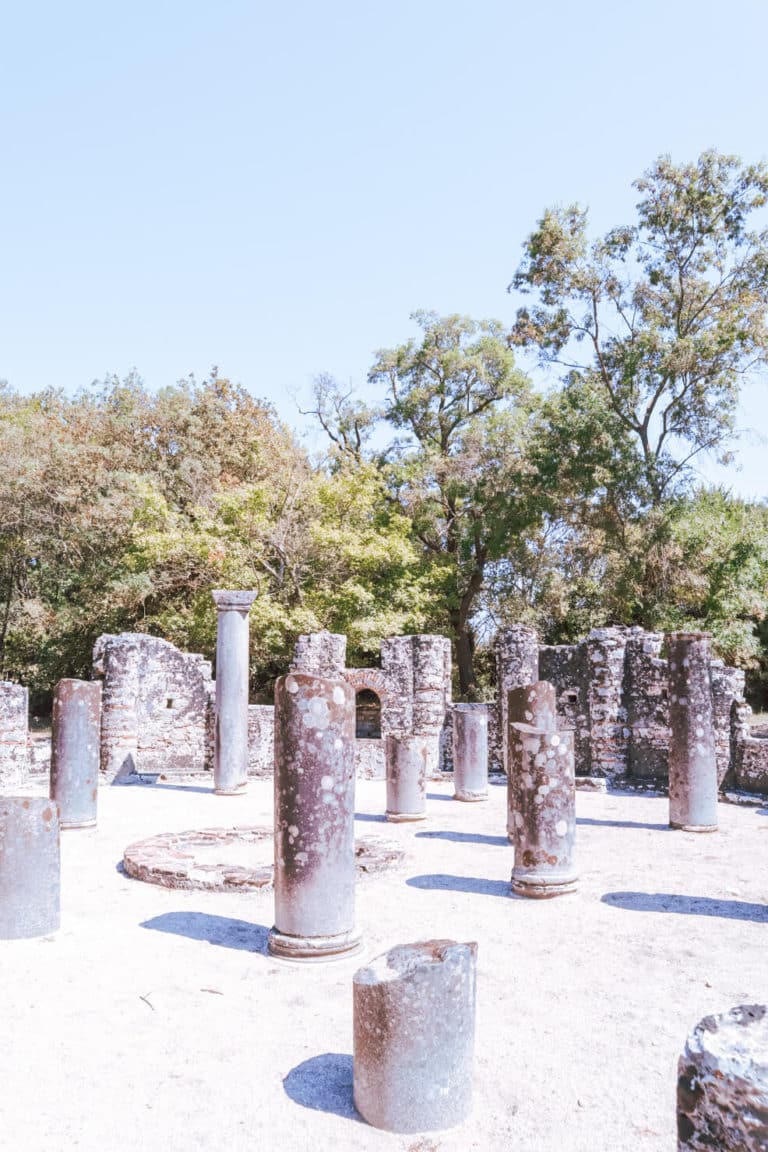
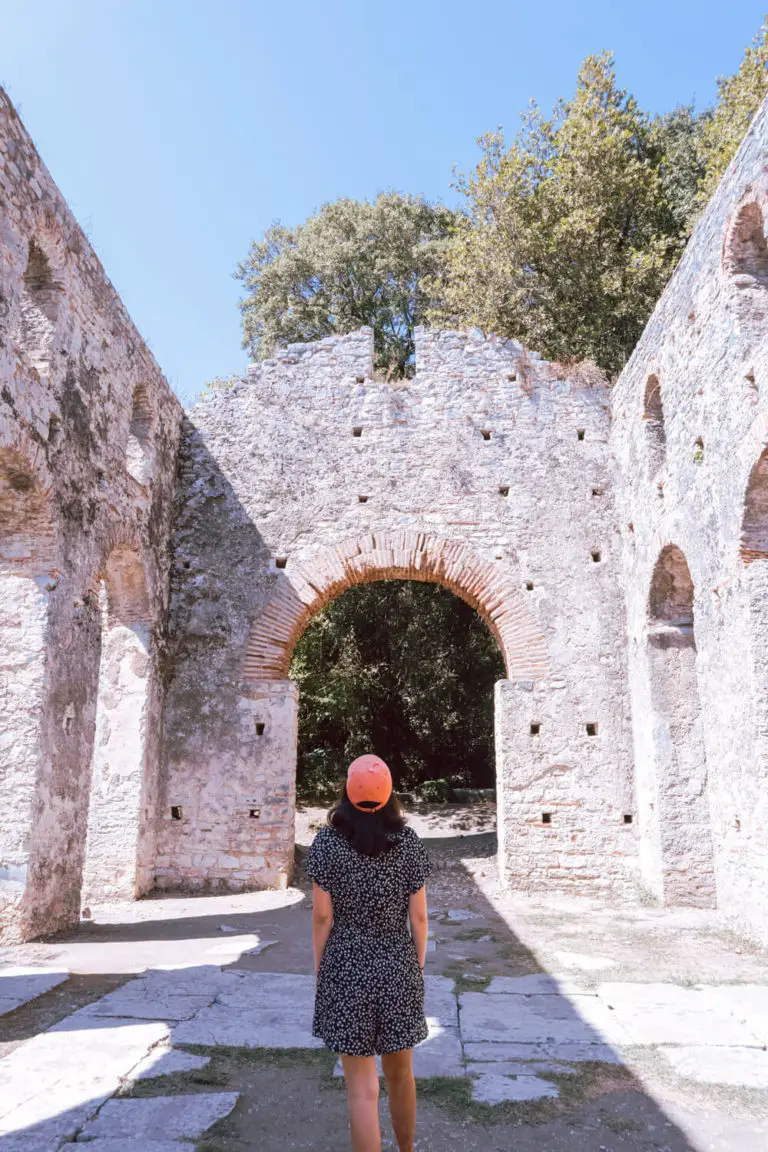
The most impressive sights include the Roman Theatre, the Basilica ruins, and the Lion’s Gate. It’s recommended to spend at least 1.5 hours here, but if you want to explore in greater depth, plan for more time.
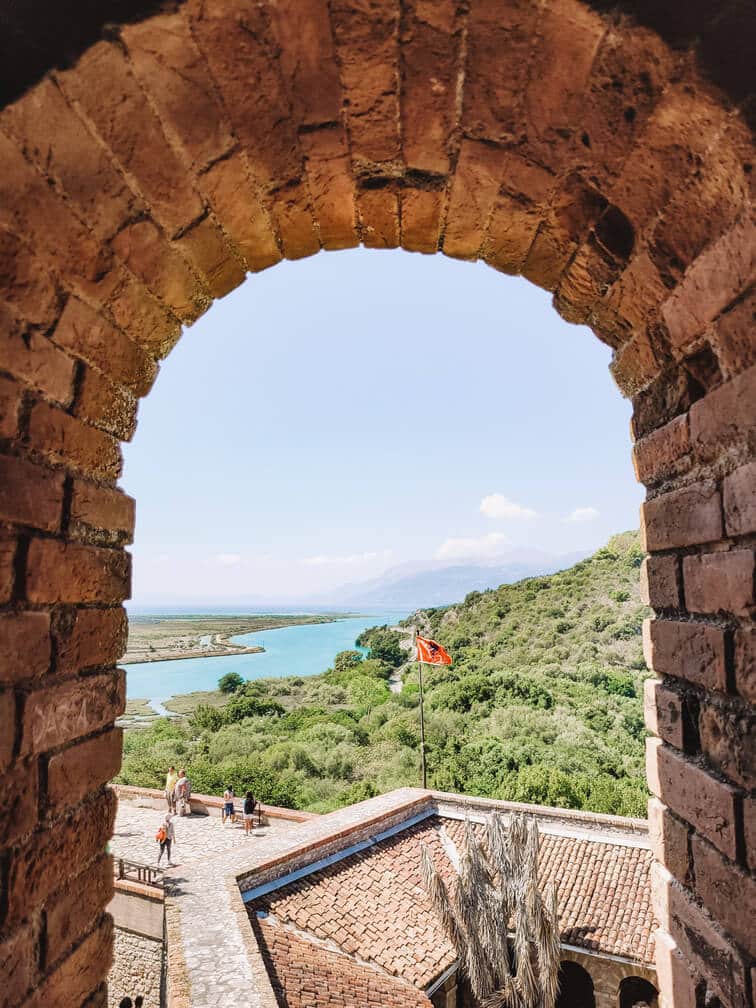
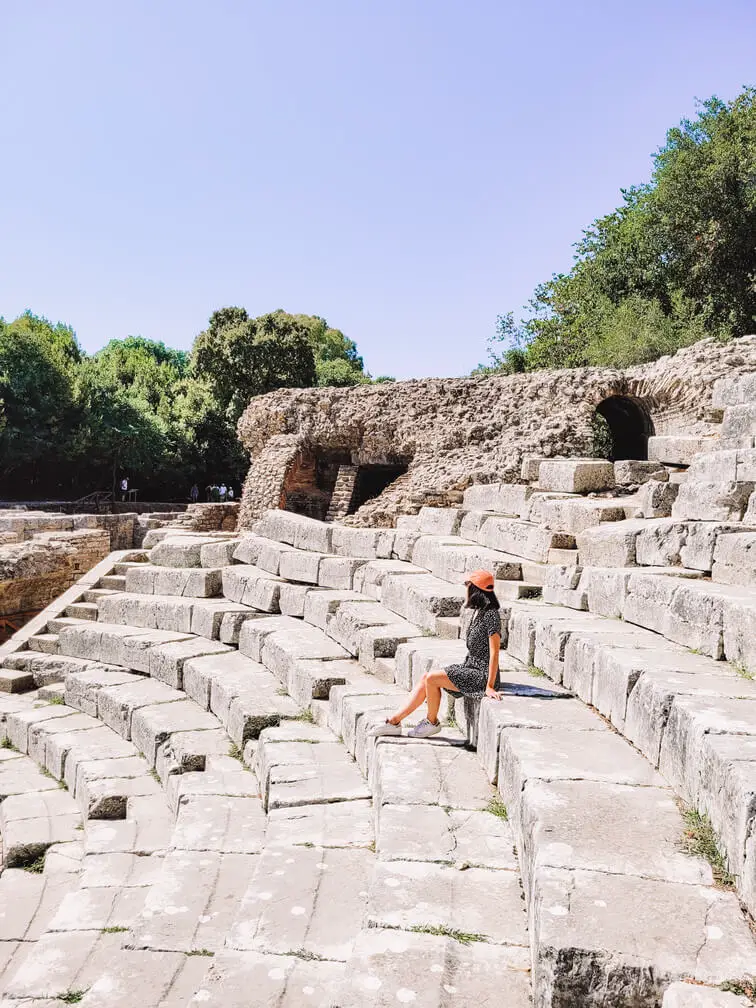
But the visit to Butrint is not only marked by the artefacts that we observe along the way. The surrounding landscape is beautiful! In fact, it is especially beautiful at the end of the trail near the Archaeological Museum.
📝 USEFUL INFORMATION: The adult ticket costs 1000 LEK (~10€) and the park can be visited from 9 am to 7 pm every day. Anyway, I always suggest you check the most up-to-date information about Butrint.
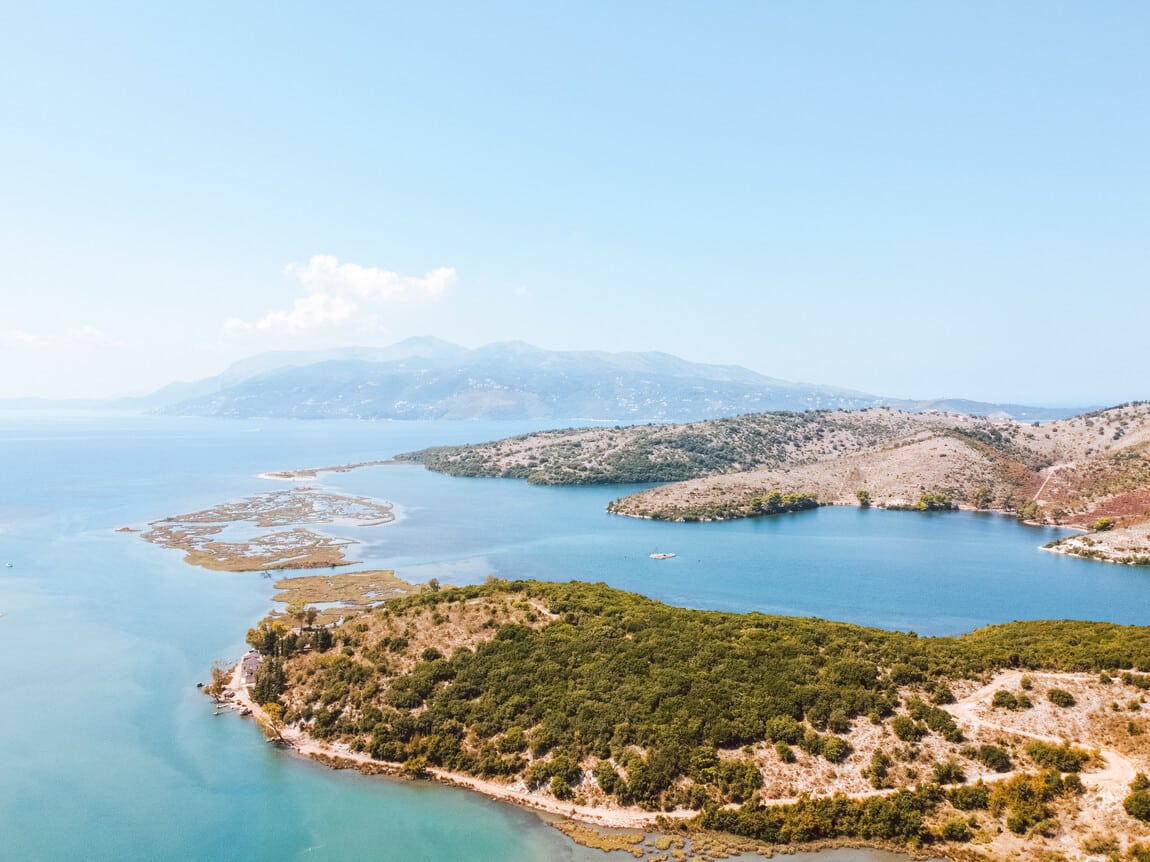
If you’re travelling by car, the best option is to park in the designated area near the entrance. While the park can get a bit crowded, there are staff on-site to efficiently direct vehicles to available parking spots.
💡 EXTRA TIP: If time allows, make a short stop at Ali Pasha Castle, located between Butrint and Ksamil. It offers a quick detour for an additional historical sight along the way.
» Ksamil
After a busy morning, it’s time to finally experience the blue waters of the Albanian Riviera.
There are several beaches you can visit, and in my case, I ended up choosing Bora Bora beach – probably one of the most famous.
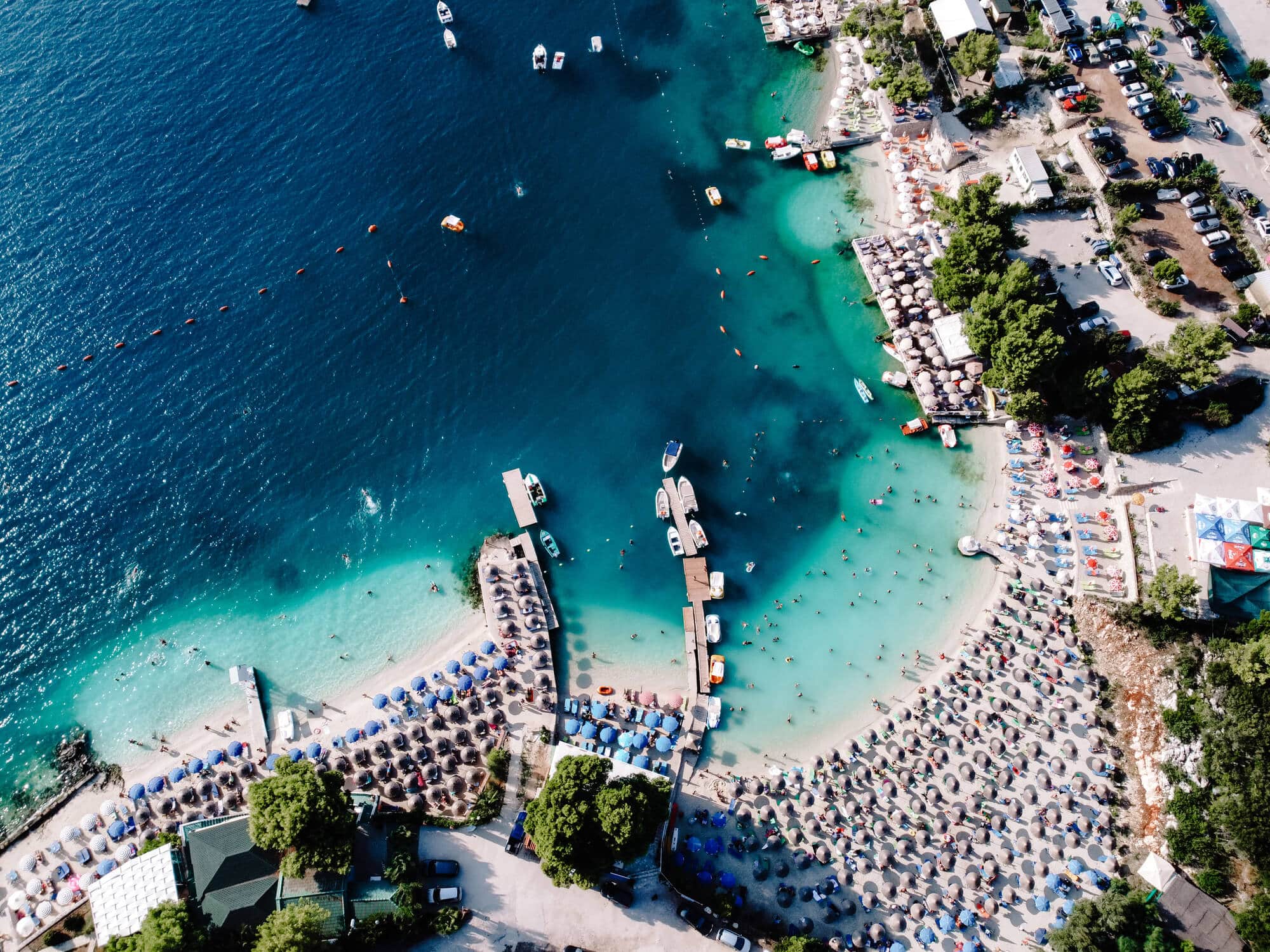
The beach is relatively small and all under concession. Although it was close to lunch time, we were lucky to find 2 available spots right by the water. The price for 2 sun loungers and 1 sun umbrella is 1000 LEK (~10€) for the whole day.
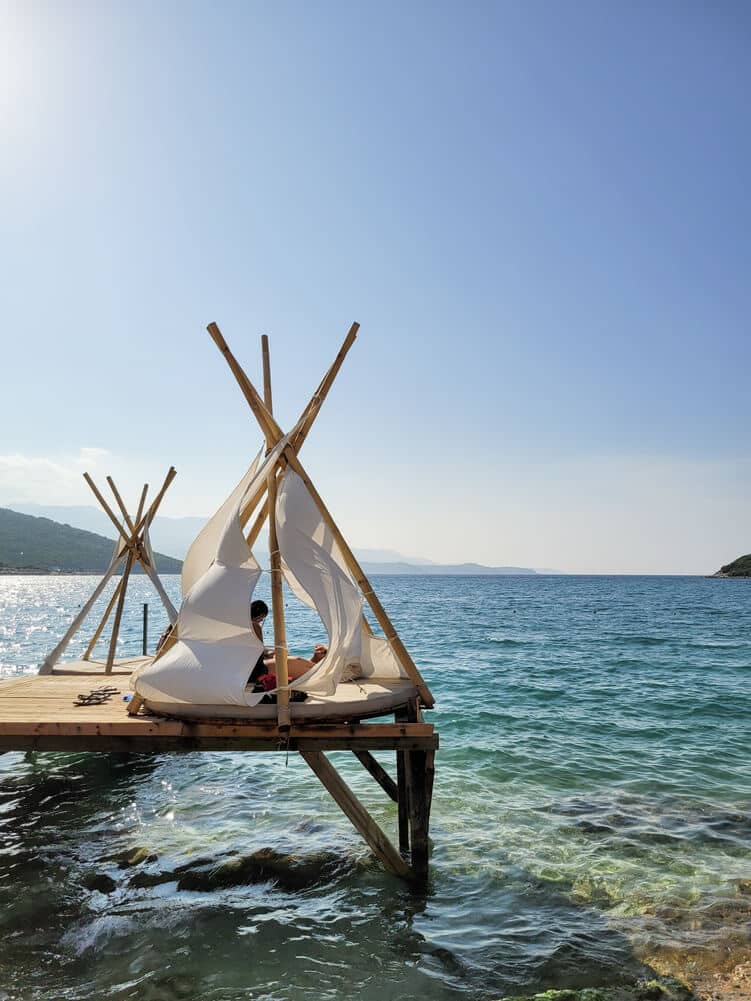
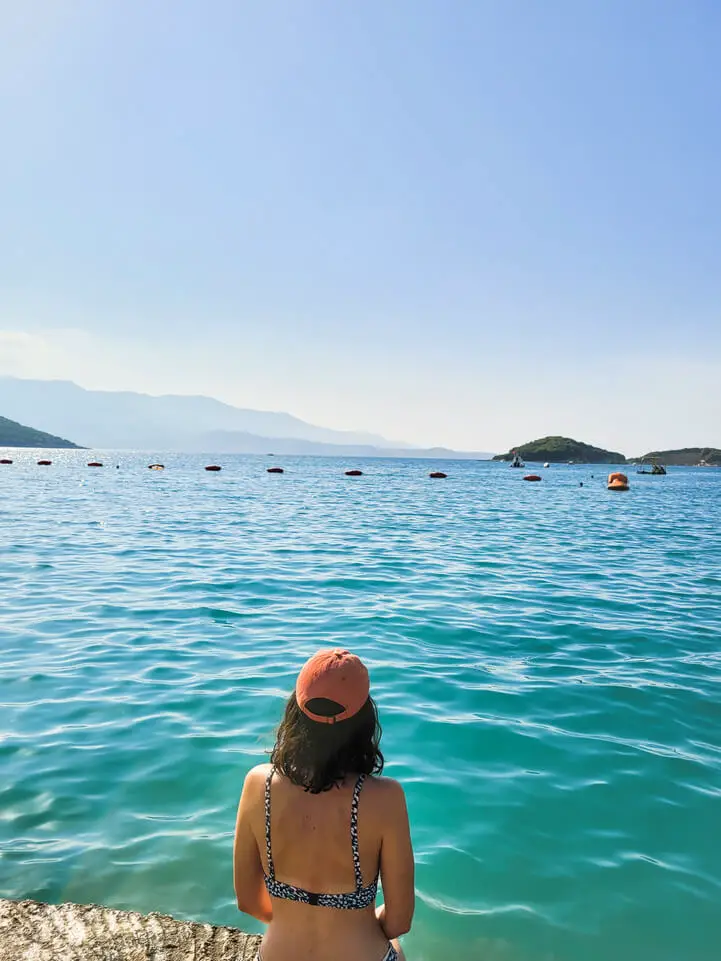
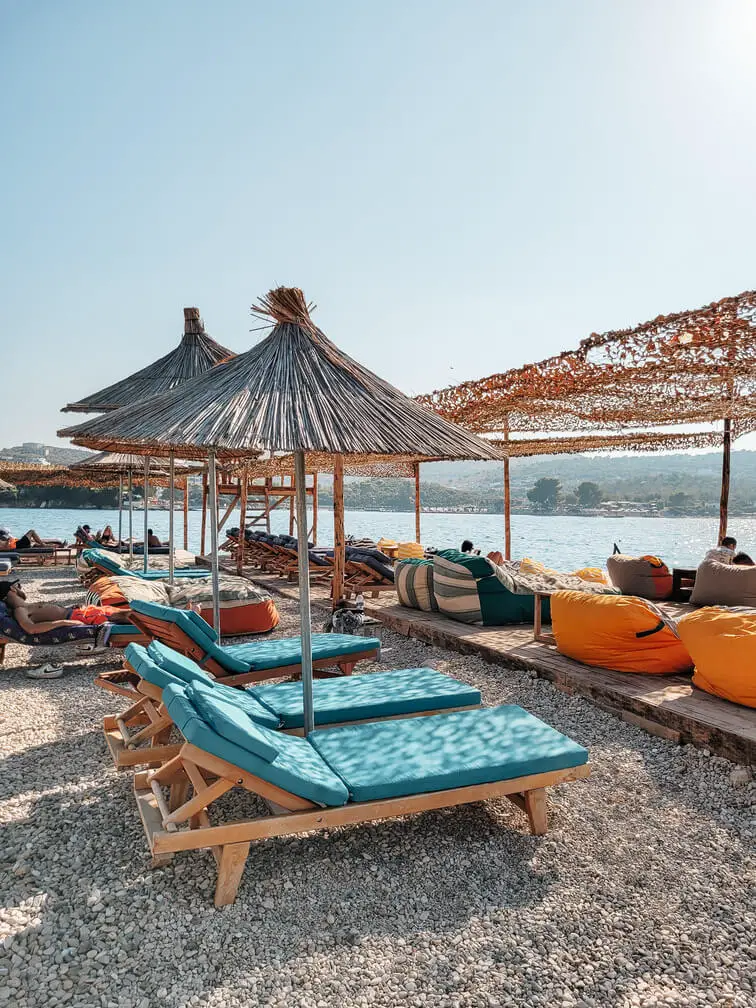
There are a few restaurants near the beach and so I ended up having a pizza for lunch right there with that magnificent view. The water temperature was incredible and the sea was super calm. It doesn’t get any better than this, am I right? 🥰
💡 EXTRA TIP: While on other beaches in Albania, it seems to be possible to get away with having to pay for the sun umbrella/ parasol because you can put your towel out a few metres to the side, on this one I’d say it’s practically impossible.
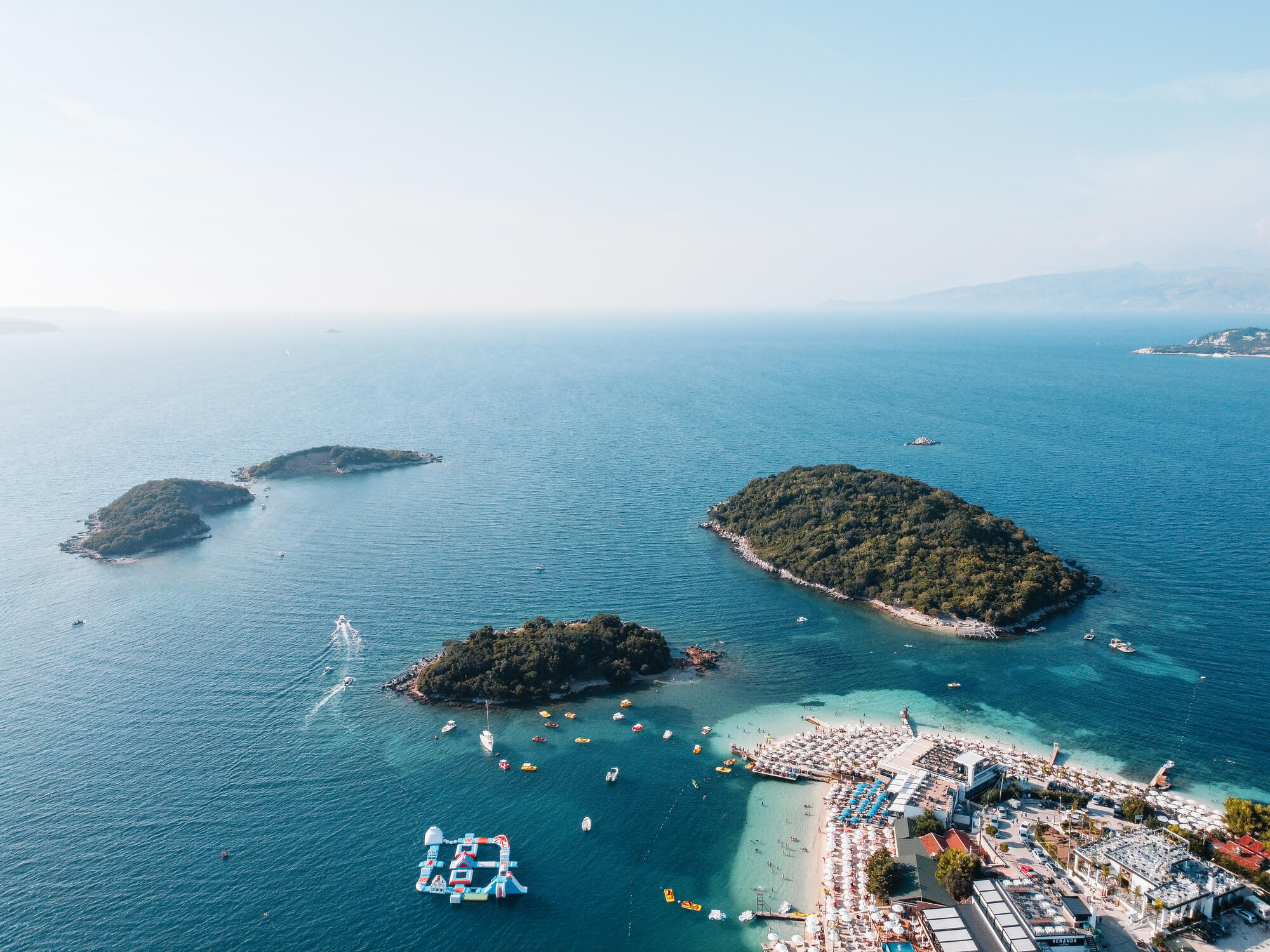
Although I didn’t stay on the beach until sunset, Ksamil is known for having one of the most beautiful sunsets in Albania due to the perfect framing of the islands of Ksamil.
While Bora Bora is known for its beauty, Mirror Beach (Plazhi i Pasqyrave) is another standout spot nearby, and it’s often regarded as one of the most pristine beaches in the area.
If you’re interested in less crowded beaches, also consider exploring Stela, Lori, or Paradise Beaches.
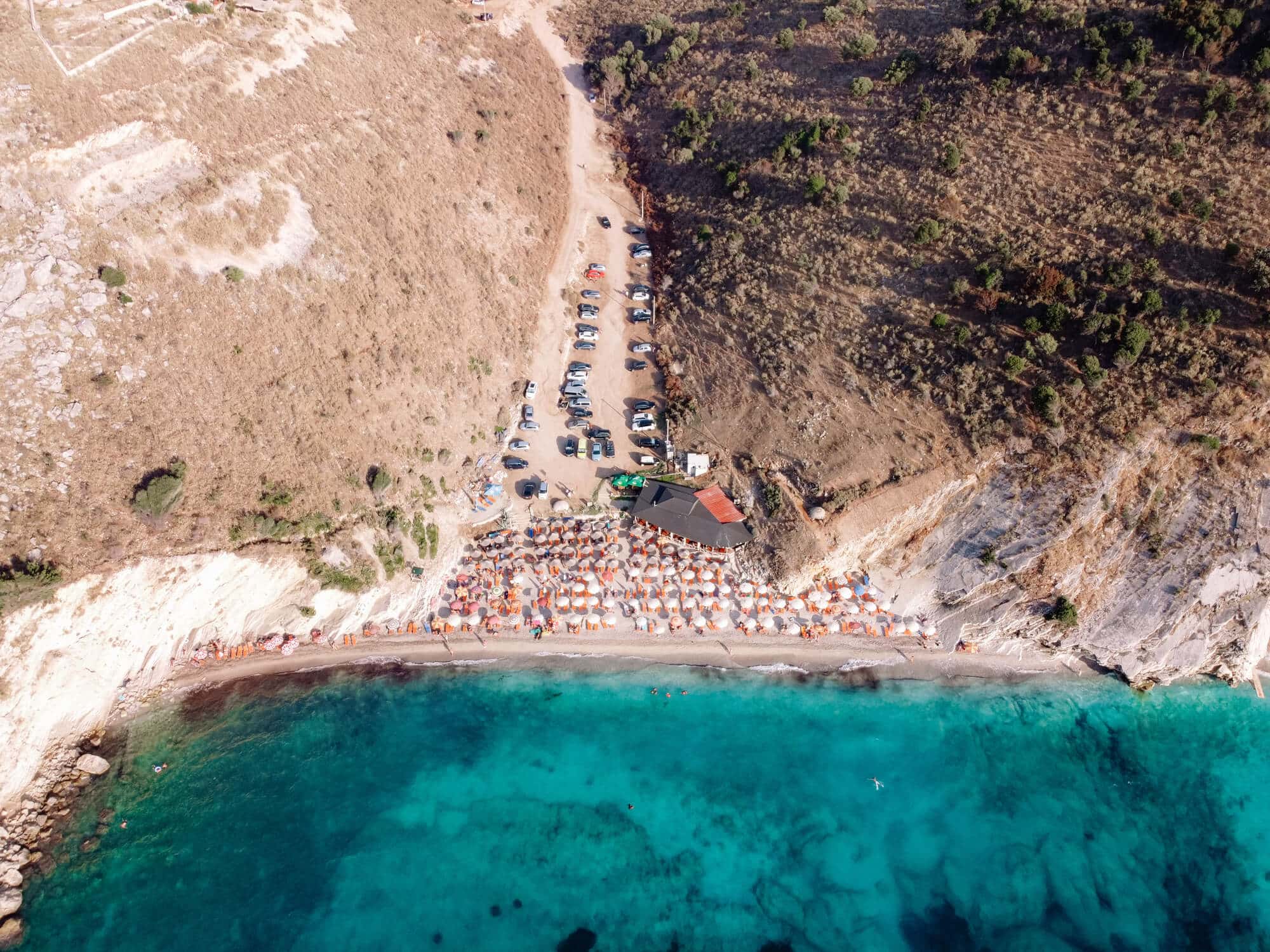
» Sarandë
Finish your day back in Sarandë, a lively coastal town offering fantastic views.
While Sarandë itself is a relatively quiet town in terms of major tourist attractions, you can still enjoy a pleasant stroll along Hasan Tahsini Boulevard, visit the Old Synagogue Complex, and watch the sunset from Lëkurësi Castle.
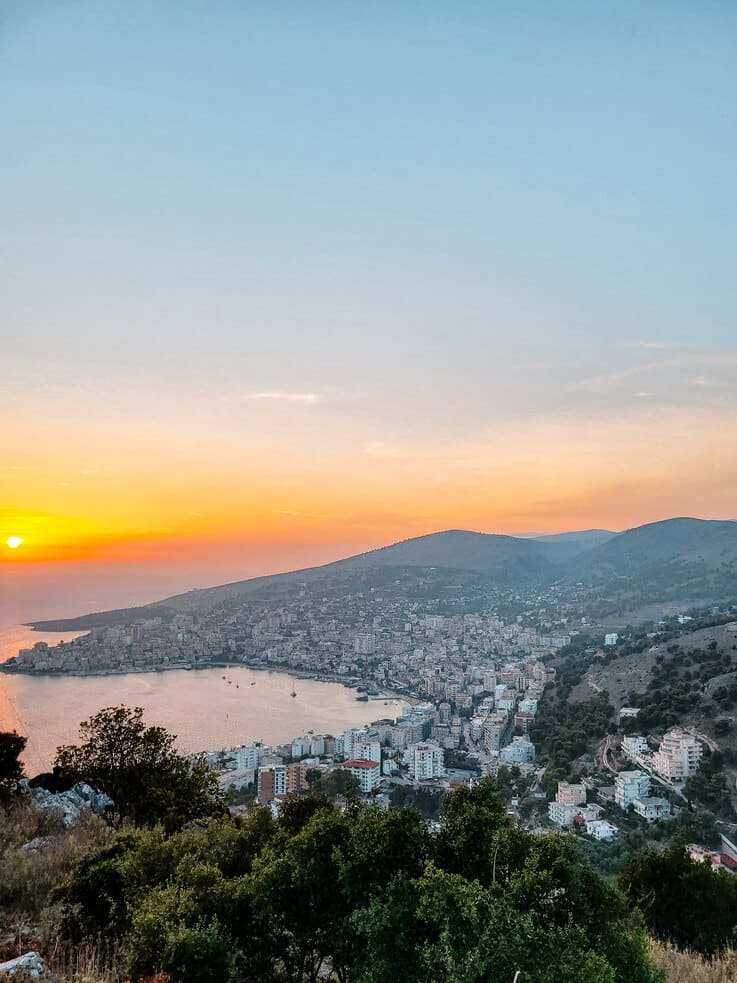
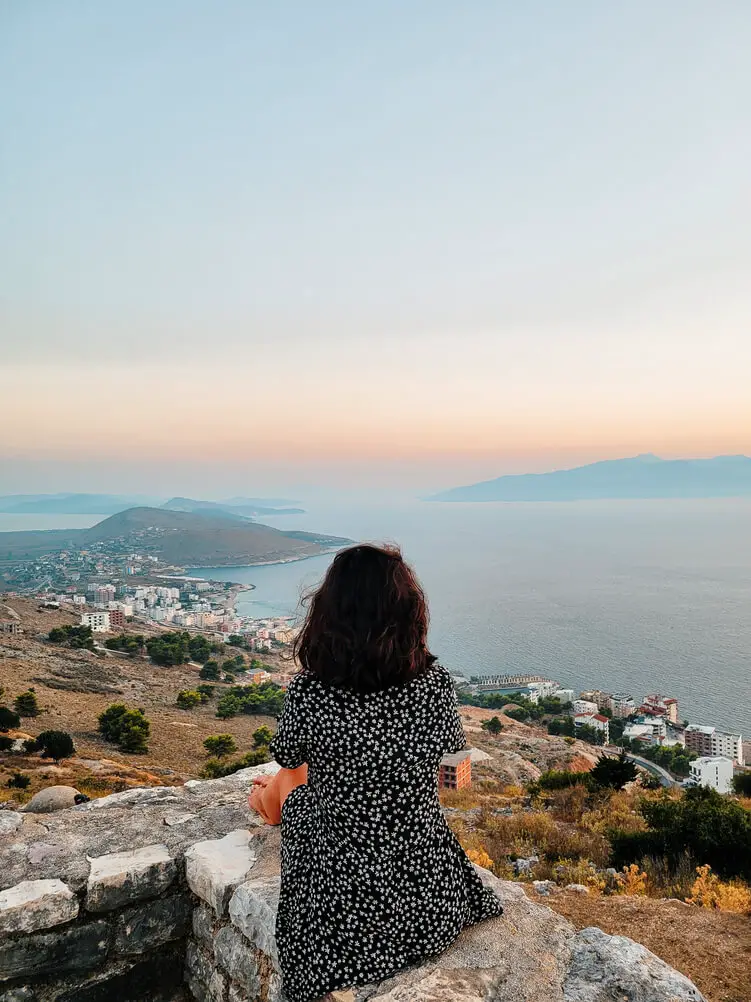
The views from Lëkurësi Castle are spectacular, especially during sunset, with Corfu island visible just across the sea. It’s the perfect way to end a day exploring Albania’s coastline.
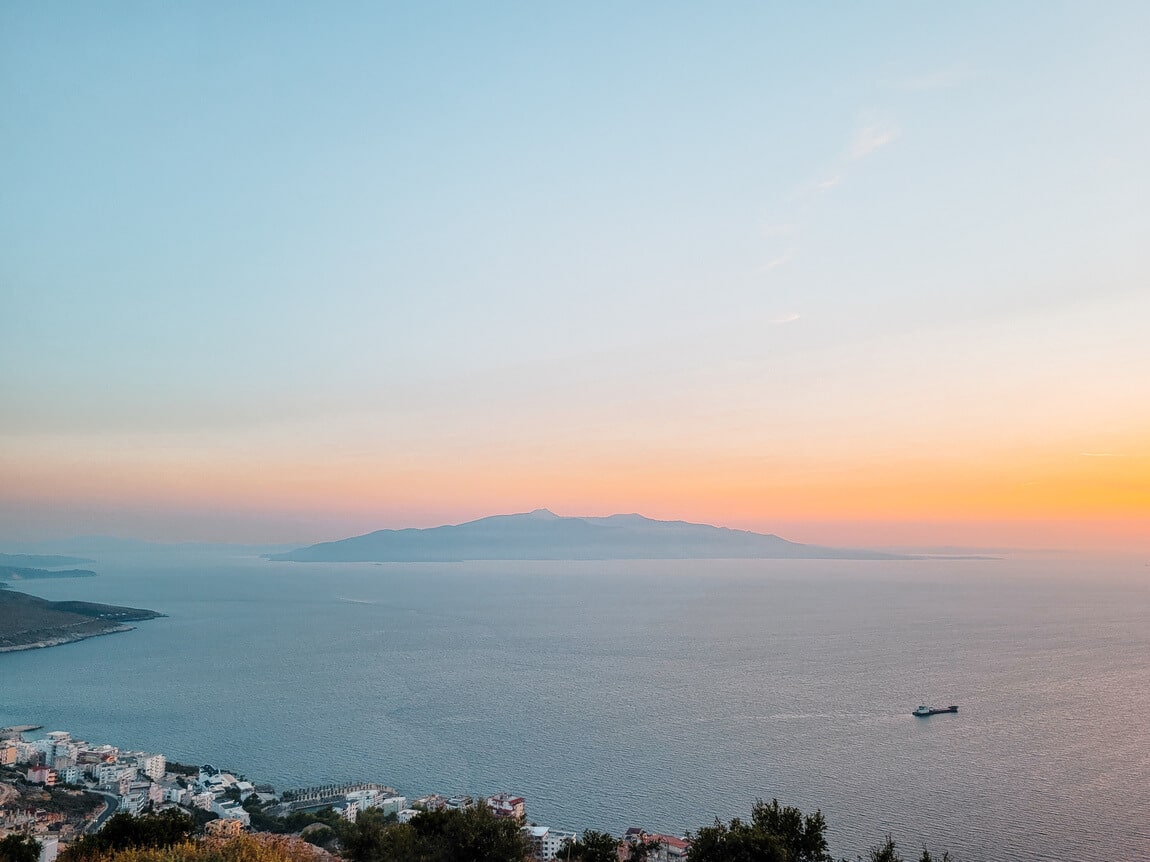
The castle has a restaurant and a bar where you can enjoy this sunset in an even more stylish way 😊.
💡 EXTRA TIP: While the Monastery of the 40 Saints also offers beautiful views, the entry fee is 200 LEK (~2€), and the vistas are nearly identical to those from Lëkurësi Castle, which is free. Therefore, I recommend visiting the castle instead to get the best value for your time.
Accommodation in Sarandë
Sarandë can be a bit confusing and, for this very reason, I chose one accommodation located in a quiet area, but still very well located.
Hotel PortaNova is a recent hotel and has the advantage of having the beach at its doorstep (literally!). I timed myself and it took me 3 minutes and 8 seconds to get from the room to the beach!
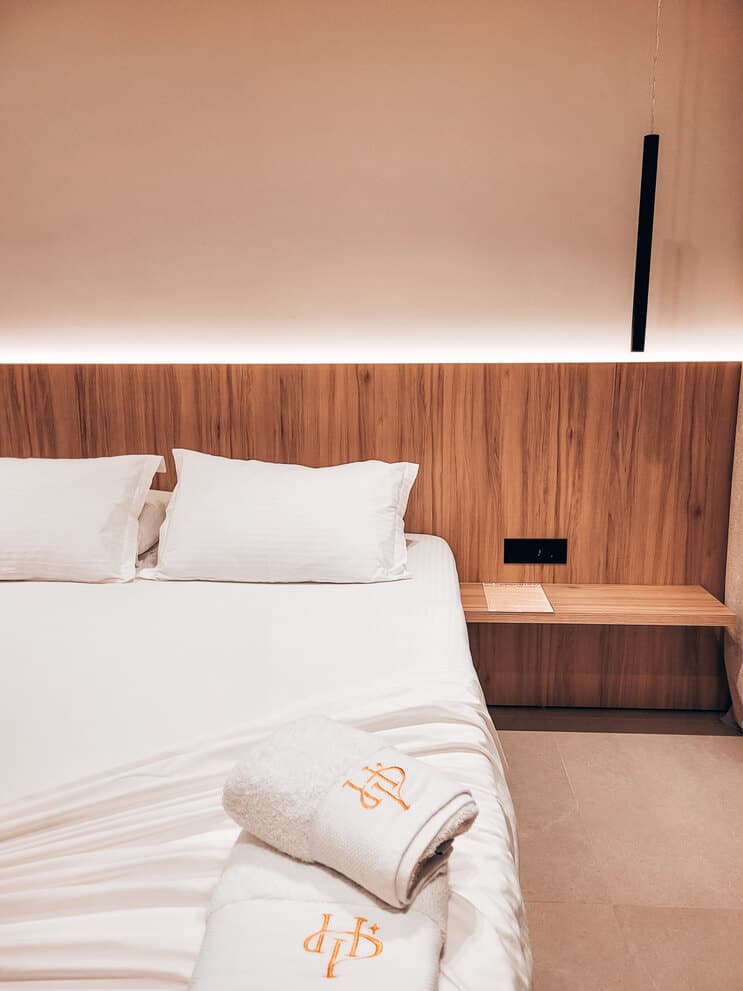
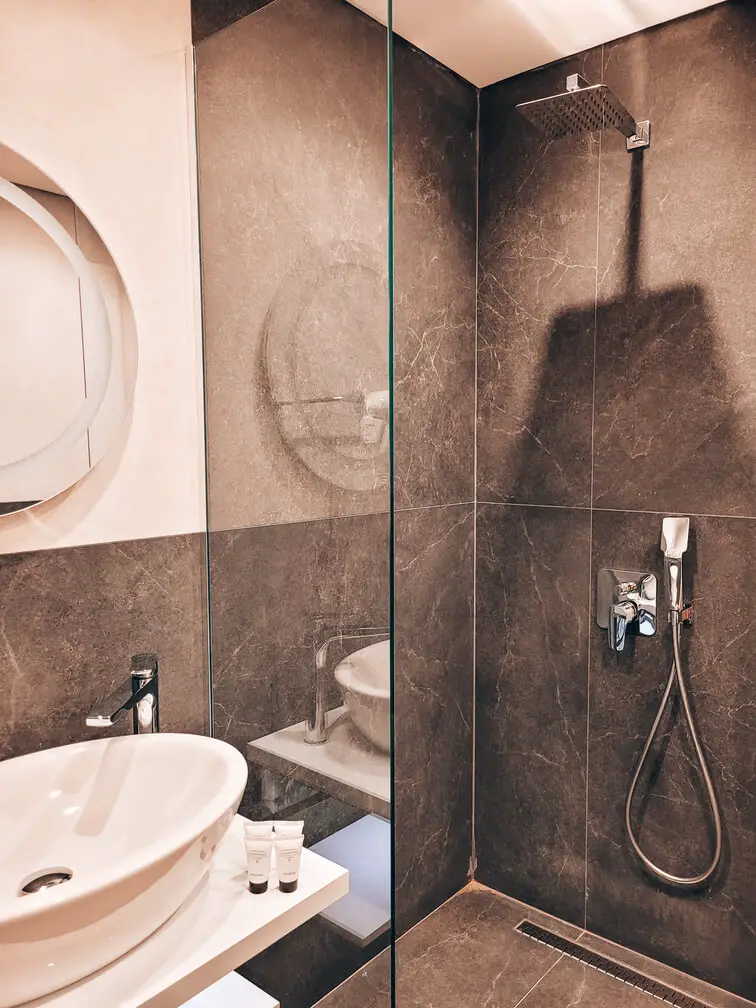
Plus, the facilities are very modern, the rooms very spacious and the hotel also has a breakfast service on the terrace next to the hotel entrance.
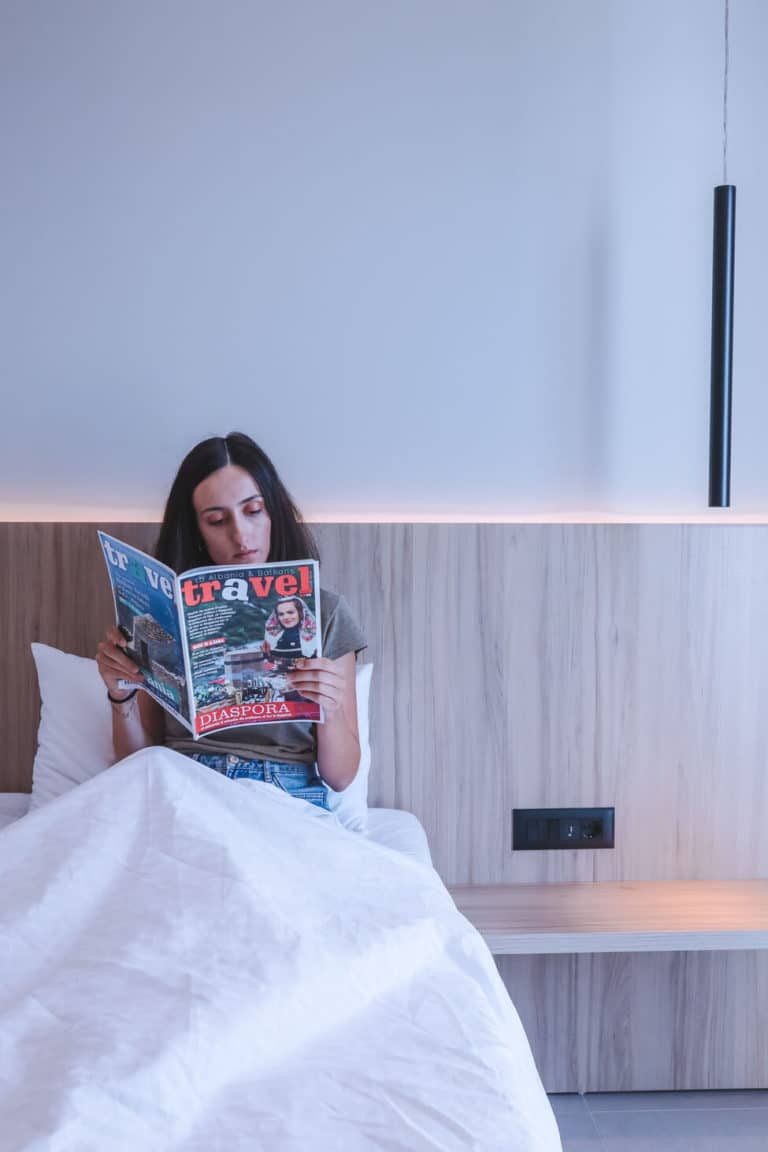
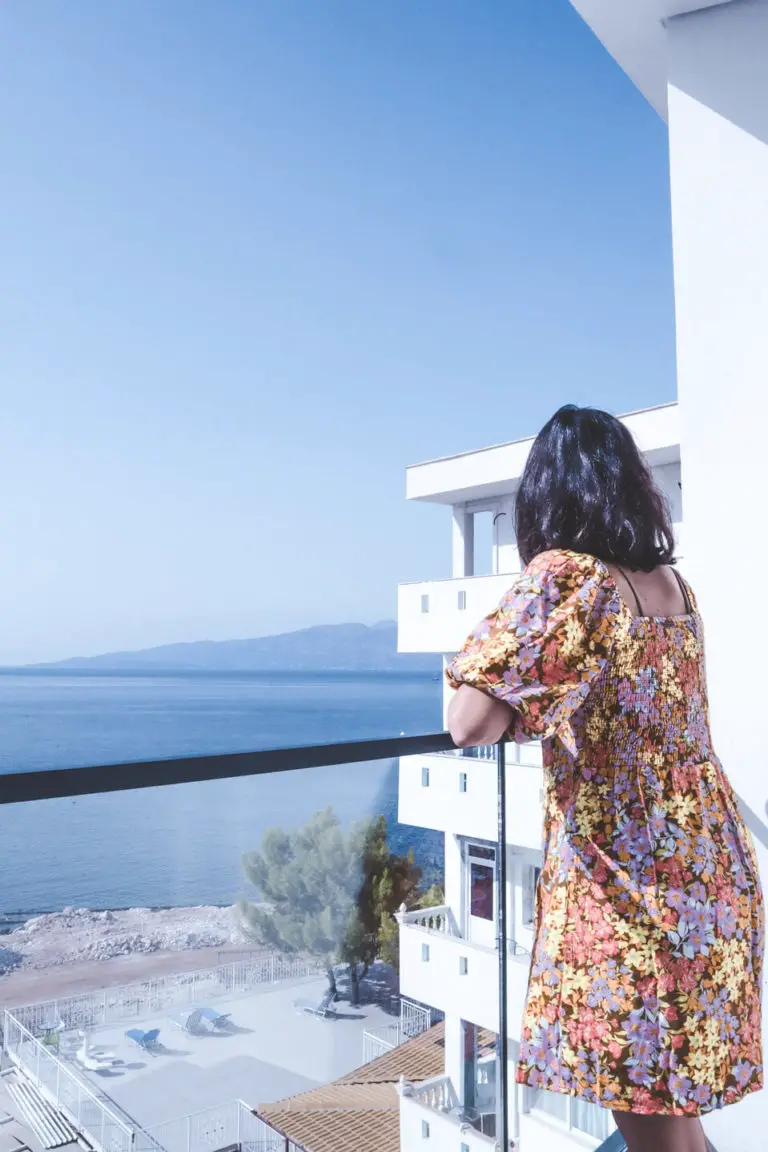
This is an excellent option for those looking for accommodation in Sarandë. Anyway, I leave here some more recommendations of accommodation for different types of budgets:
Day 9: Sarandë – Gjipe Beach – Dhërmi (75 km; 2h20)
On Day 9 of your Albania itinerary, you’ll head north from Sarandë towards Dhërmi, making several scenic stops along the way to fully immerse yourself in the beauty of the Albanian Riviera. Here’s a guide to the must-see places on your drive.
While it’s impossible to explore in-depth all these sights in one day, I highly recommend stopping at various points along the way to take in the stunning views and appreciate the beauty of the area.
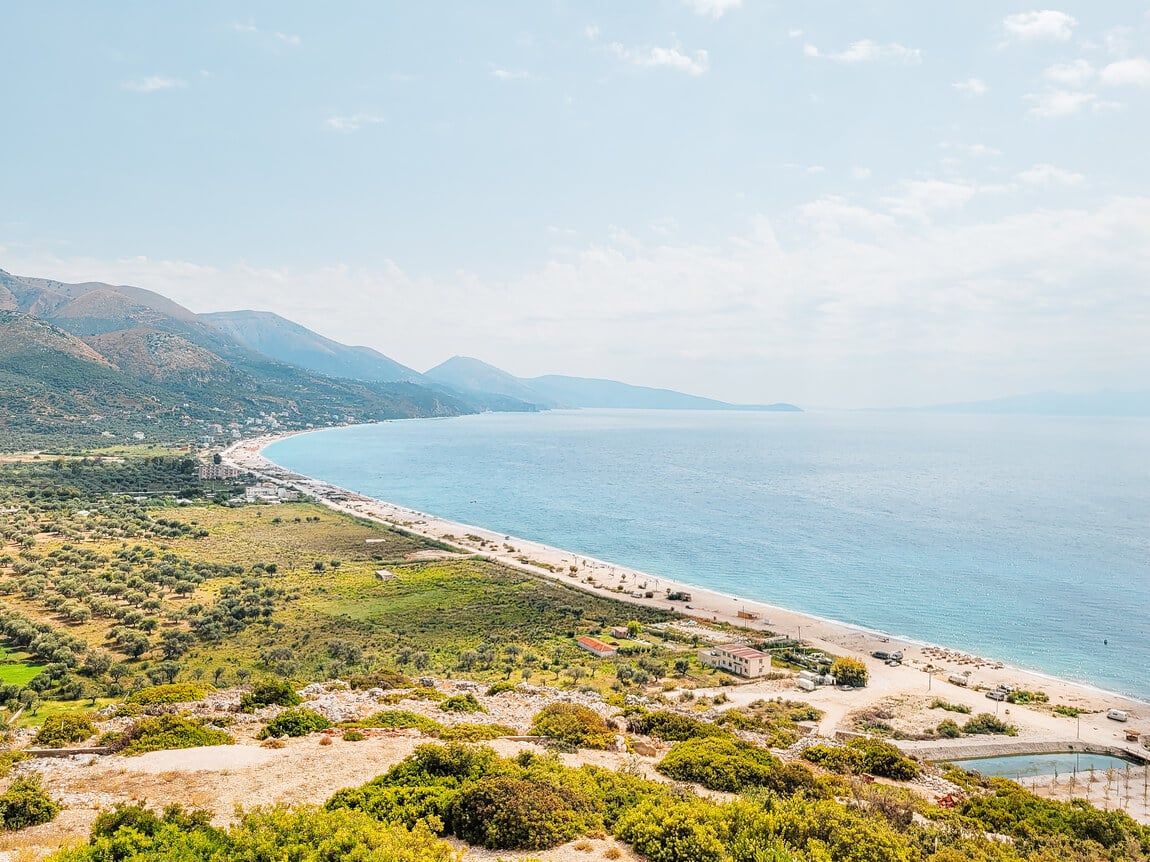
» Borsh Beach: Albania’s Longest Beach
Your journey will start with a visit to Borsh Beach, the longest beach in Albania. With its stunning stretch of coastline and crystal-clear waters, it’s the perfect spot for a relaxing stop. This beach is definitely worth exploring if you’re looking for a quieter place to unwind.
Also, don’t miss Borsh Castle nearby, which offers great views of the surrounding area.
» Porto Palermo and its castle
Next, head towards Porto Palermo. Known for its picturesque bay, this spot is home to a historic castle that offers a glimpse into Albania’s past.
Porto Palermo is also renowned for its bunkers, a reminder of the country’s communist era, which you can explore to learn more about Albania’s unique history.
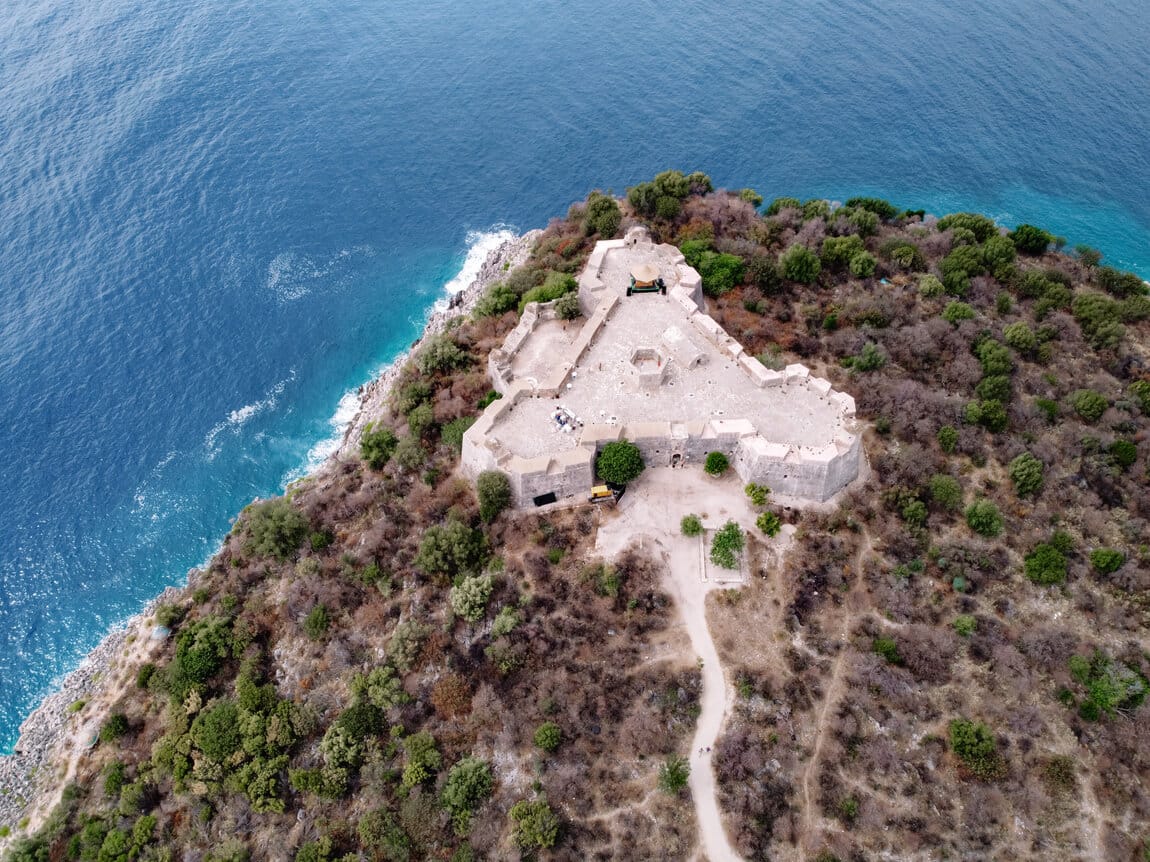
» Qeparo: a hidden gem
Continue your journey to Qeparo, a charming village that sits along the hillside of Mount Gjivlash. The area is home to Qeparo Beach, where you can enjoy a peaceful moment by the sea, and Upper Qeparo, an ancient village that’s a great spot for photography.
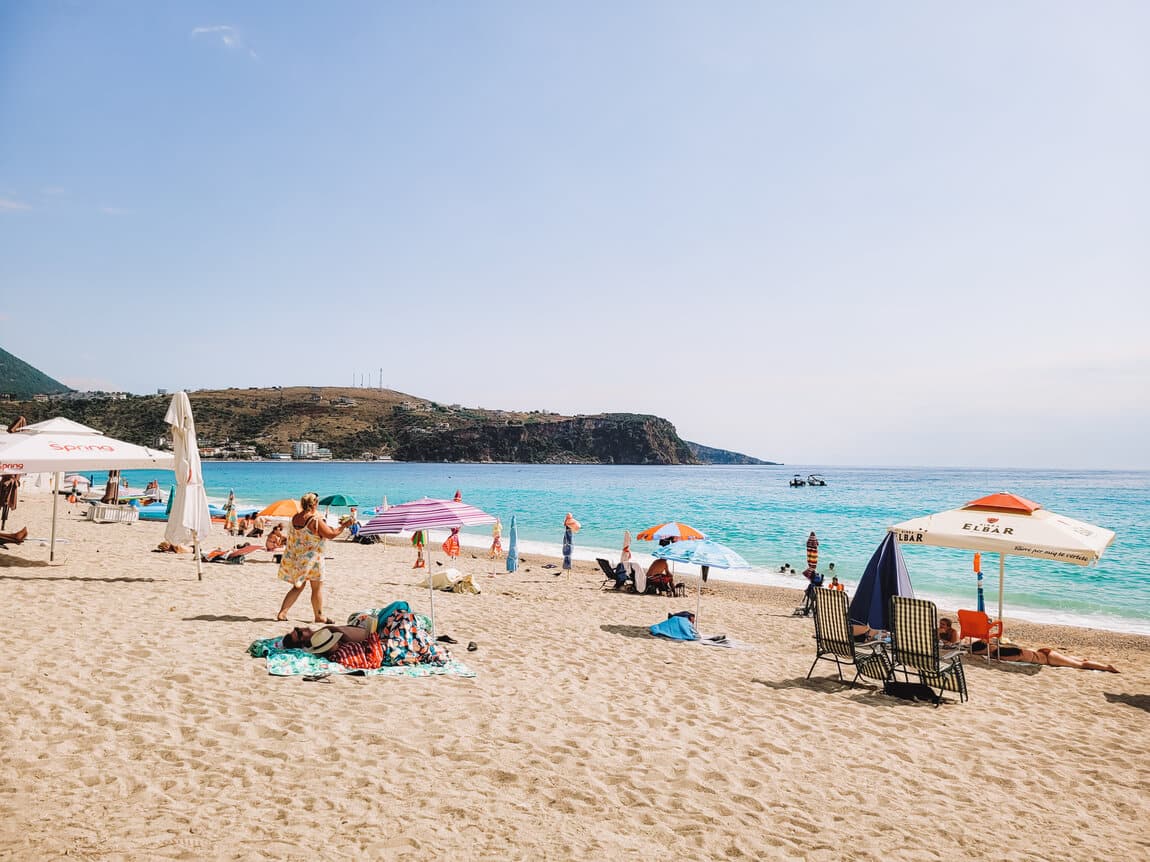
» Himarë: Relax and Explore
Your next stop is Himarë, where you can explore the town’s historical centre and visit Himarë Beach. The beach here is perfect for a swim, and you can’t miss the Himarë Castle, which offers panoramic views of the surrounding coastline.
» Gjipe Beach
After a few photo stops and lunch in Himarë, head towards Gjipe beach—one of the most stunning spots on the Albanian Riviera. This beach is famous for its breathtaking landscape, with dramatic cliffs and crystal-clear waters framing the area.
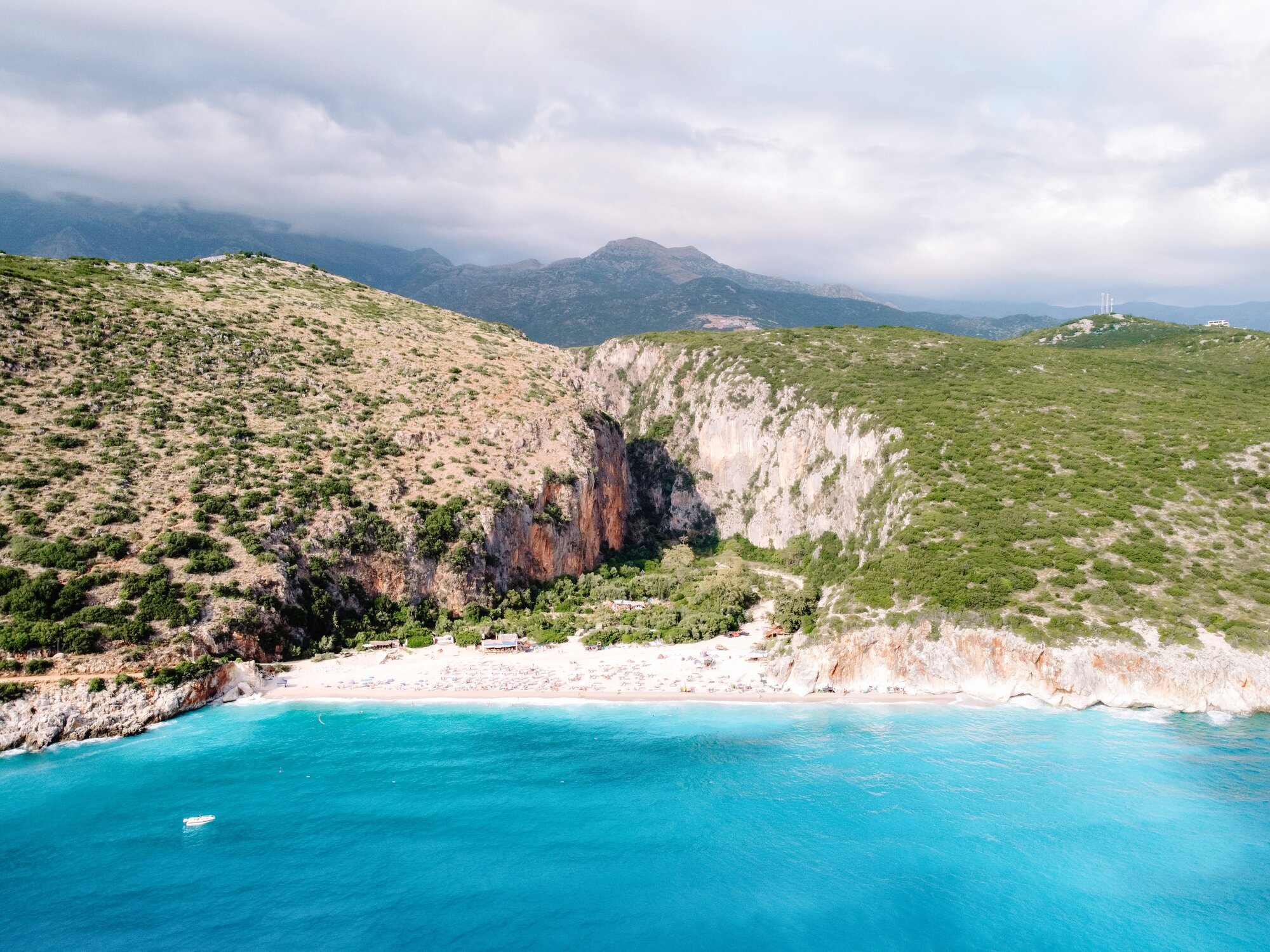
Getting to Gjipe Beach
There are a couple of ways to reach Gjipe Beach:
- By boat or kayak from Jale Beach, offering a scenic approach to the beach.
- By car. Park the car here (200 LEK) and walk a short trail to the beach. The trail is about 2 km and takes 25 min (each way). It is more demanding on the way back (steep climb) and the ground is very uneven so I recommend suitable footwear.
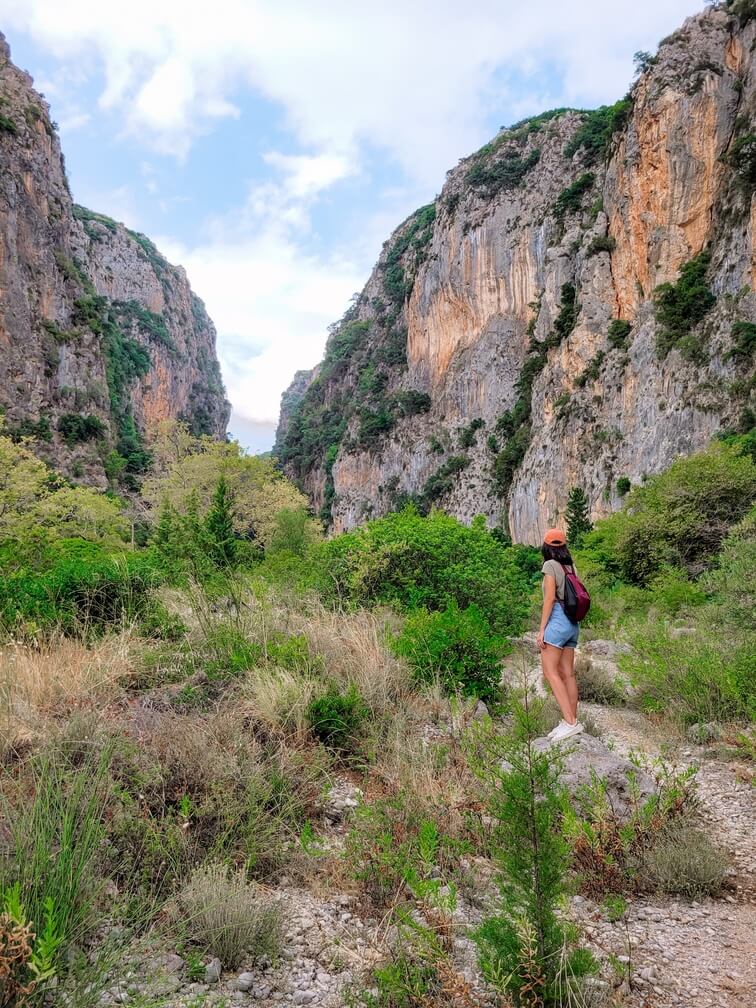
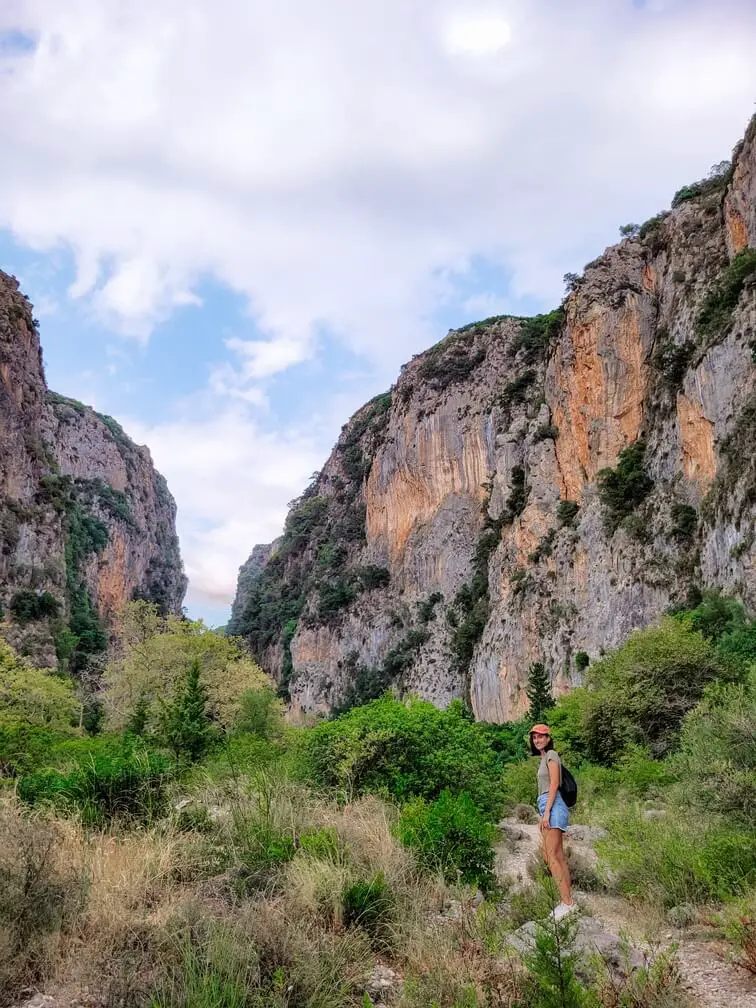
While the beach offers some sun loungers, it’s easy to find a quiet spot to lay your towel. Like many beaches in Albania, this beach doesn’t have fine sand, so I’d recommend wearing proper shoes when going to the sea.
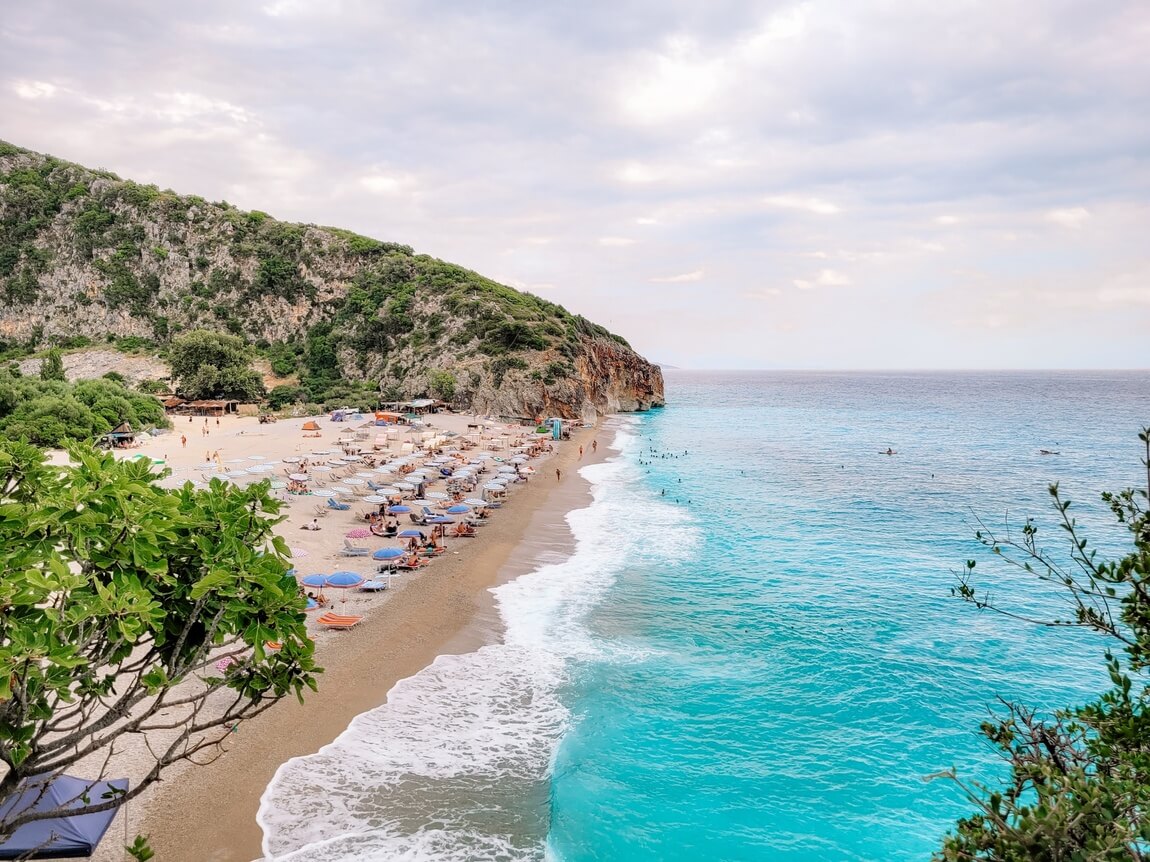
Beyond just relaxing on the beach, I also ventured a bit into the canyon that gives Gjipe Beach its distinctive character. The canyon adds a unique touch to the landscape, but be cautious—there are reports of poisonous snakes in the area.
If you decide to explore further into the canyon, make sure to do thorough research and take necessary precautions to stay safe.
» Dhërmi
After a day of exploration, continue your journey to Dhërmi, where you can spend the night. This coastal town is known for its beautiful beaches and lively atmosphere, making it the perfect spot to relax and enjoy the Mediterranean views.
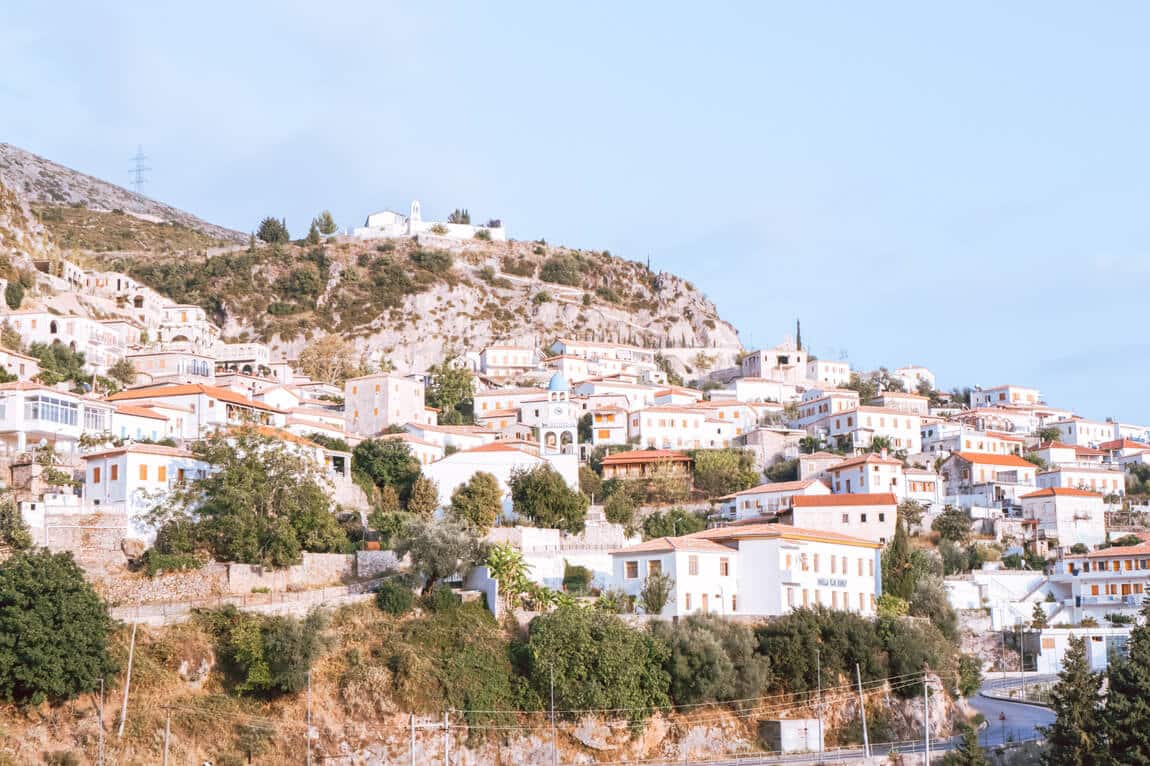
Accommodation in Dhërmi
I recommend Gogo’s Boutique Hotel – a recently opened hotel in the region. Apart from the very friendly service, I particularly liked the exterior decoration of the hotel.
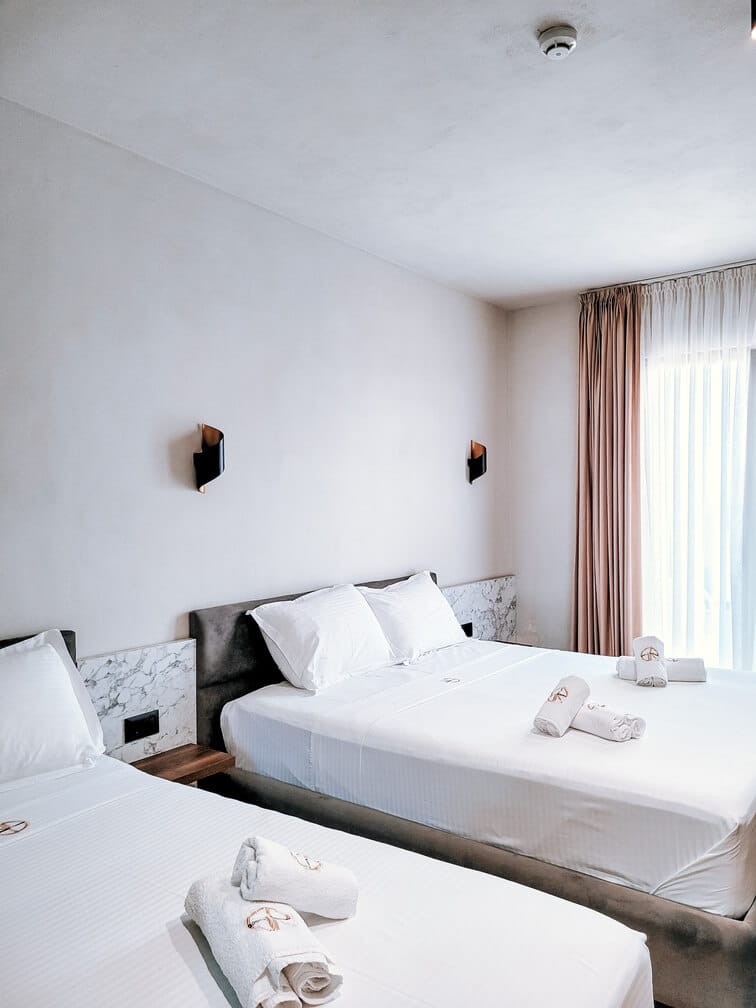
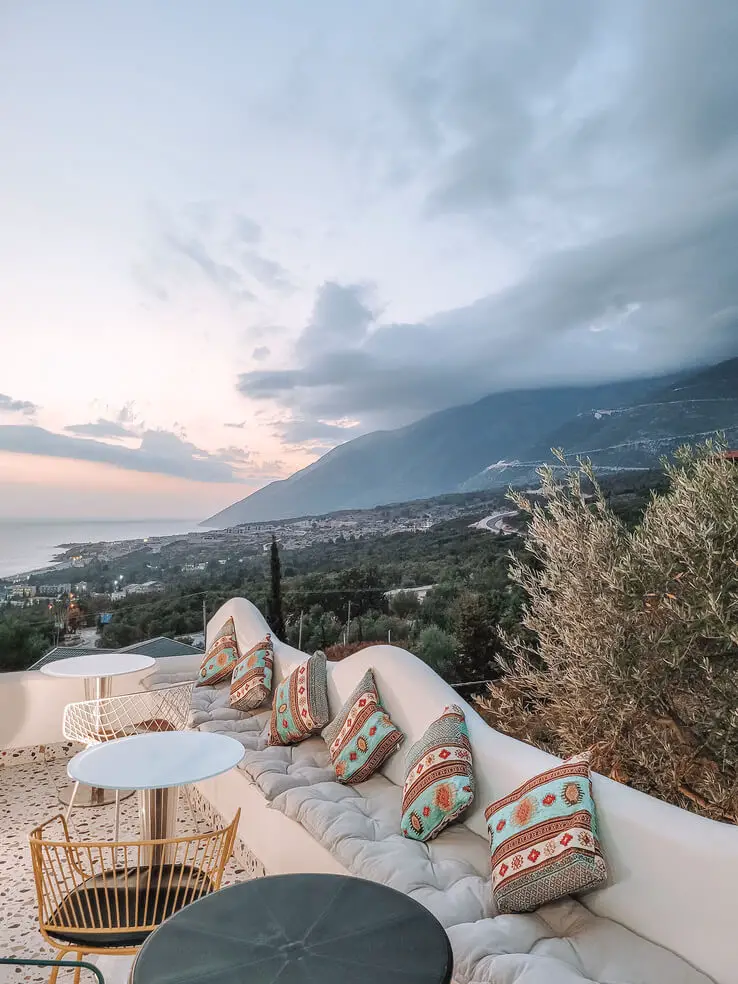
The outside terrace offers us a superb sunset and the flowery stairs are also very lovely. It’s a very welcoming space, no doubt about it 🥰.
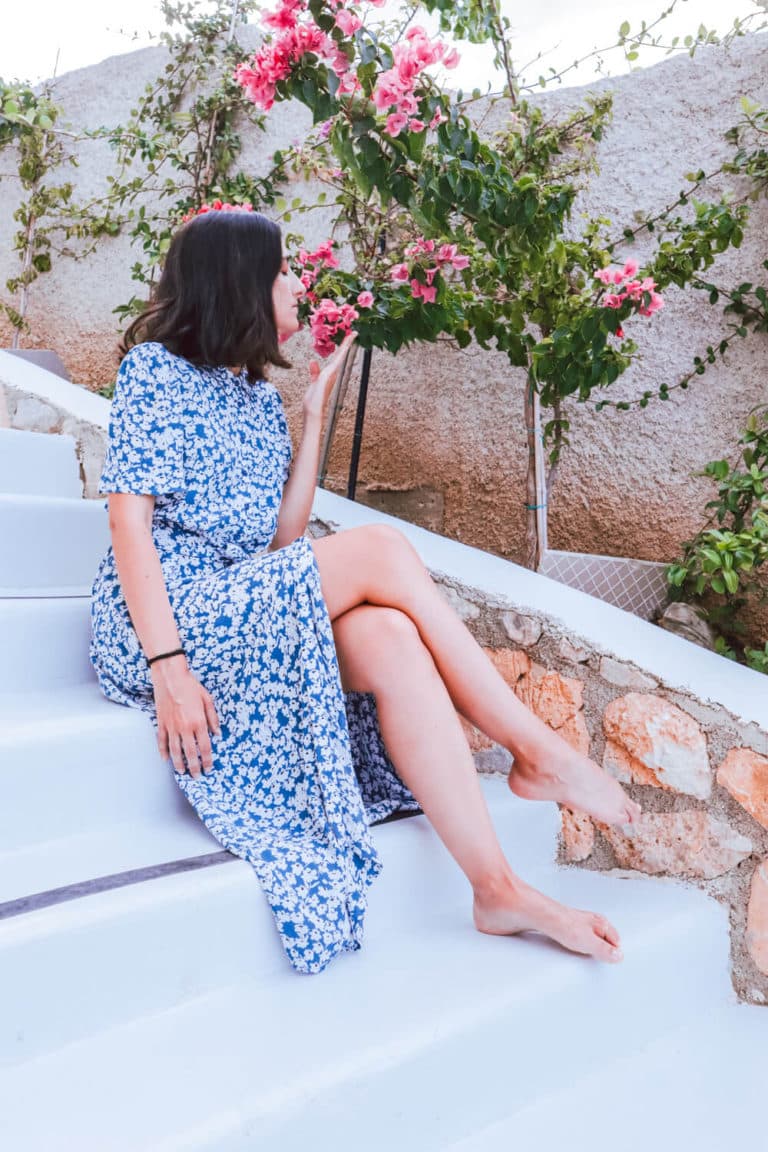
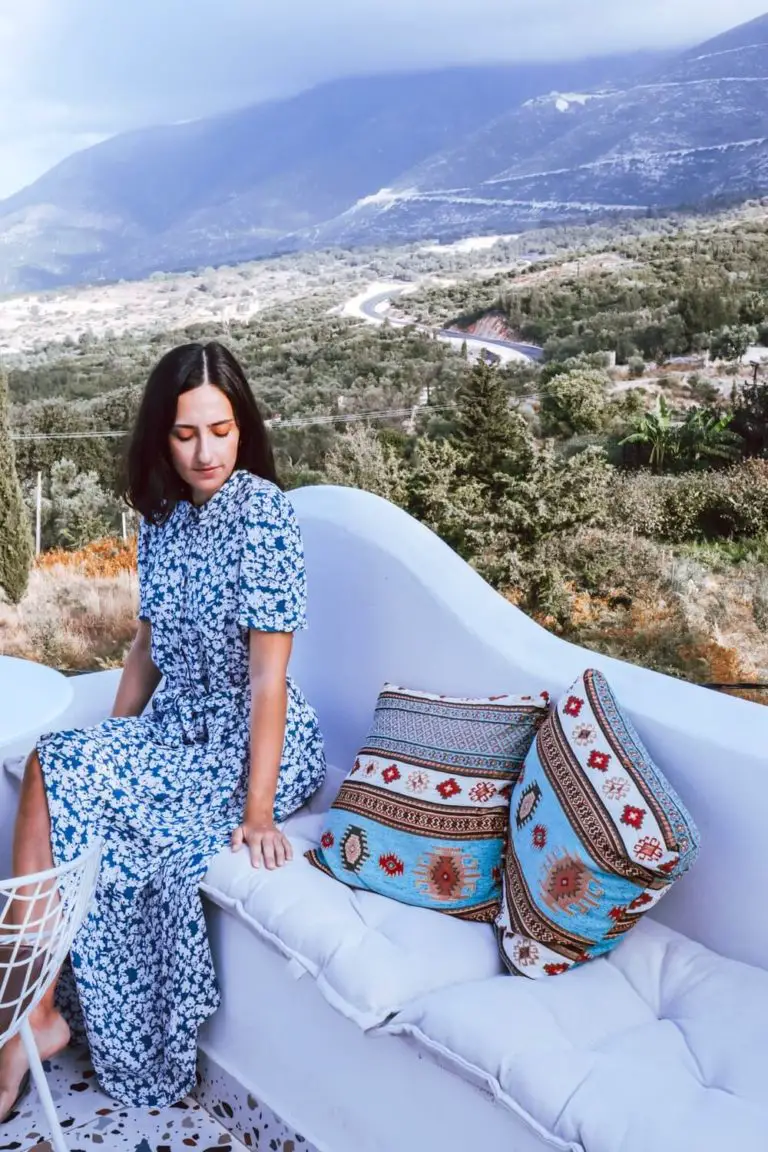
In addition, the hotel also has a breakfast service every day that is served on the outdoor terrace.
Day 10: Dhërmi – Llogara Pass – Apollonia – Tirana (217 km; 3h30)
On Day 10 of your Albania itinerary, you’ll make your way back to Tirana, but not without taking in some of the most scenic spots along the way.
This day will take you through the stunning Llogara Pass, offering panoramic views of the Ionian Sea, and a visit to the ancient ruins of Apollonia, one of the country’s most important archaeological sites.
It’s the perfect way to cap off your Albanian adventure before returning to the capital.
» Llogara Pass
The Llogara Pass is one of the most scenic routes along the Albanian Riviera, winding through Llogara National Park and the majestic Ceraunian Mountains. Known for its stunning panoramic views, the pass offers a breathtaking vista of the Ionian Sea.
Even though I encountered overcast weather during my drive, the road itself is renowned for its beauty, so be sure to take your time and enjoy the views.
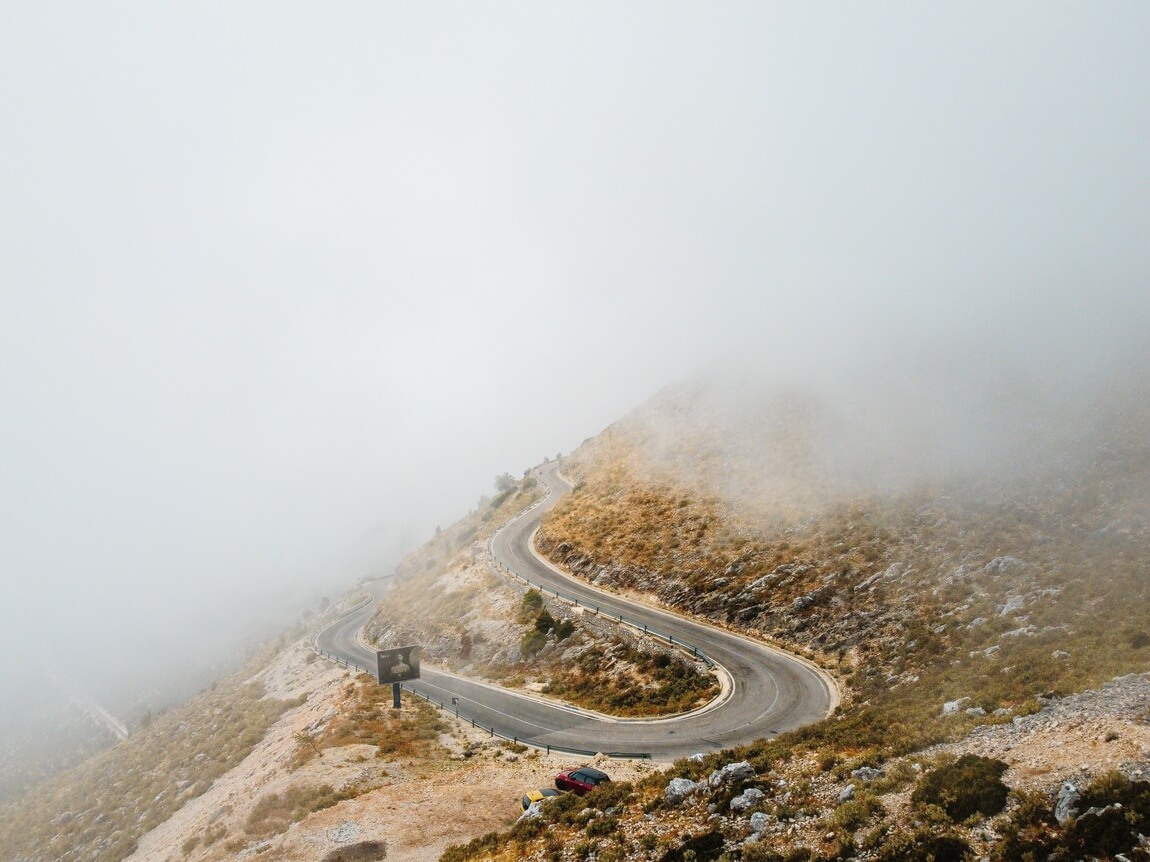
💡 EXTRA TIP: Consider making a stop in the nearby town of Vlorë to explore a little more of the Albanian coast before continuing your journey.
» Apollonia
The final stop on this list of what to do in Albania is the ancient site of Apollonia, once a thriving Greek trading colony and later an important city during the Roman Empire.
Now a UNESCO World Heritage Site, Apollonia offers a fascinating glimpse into Albania’s rich history.
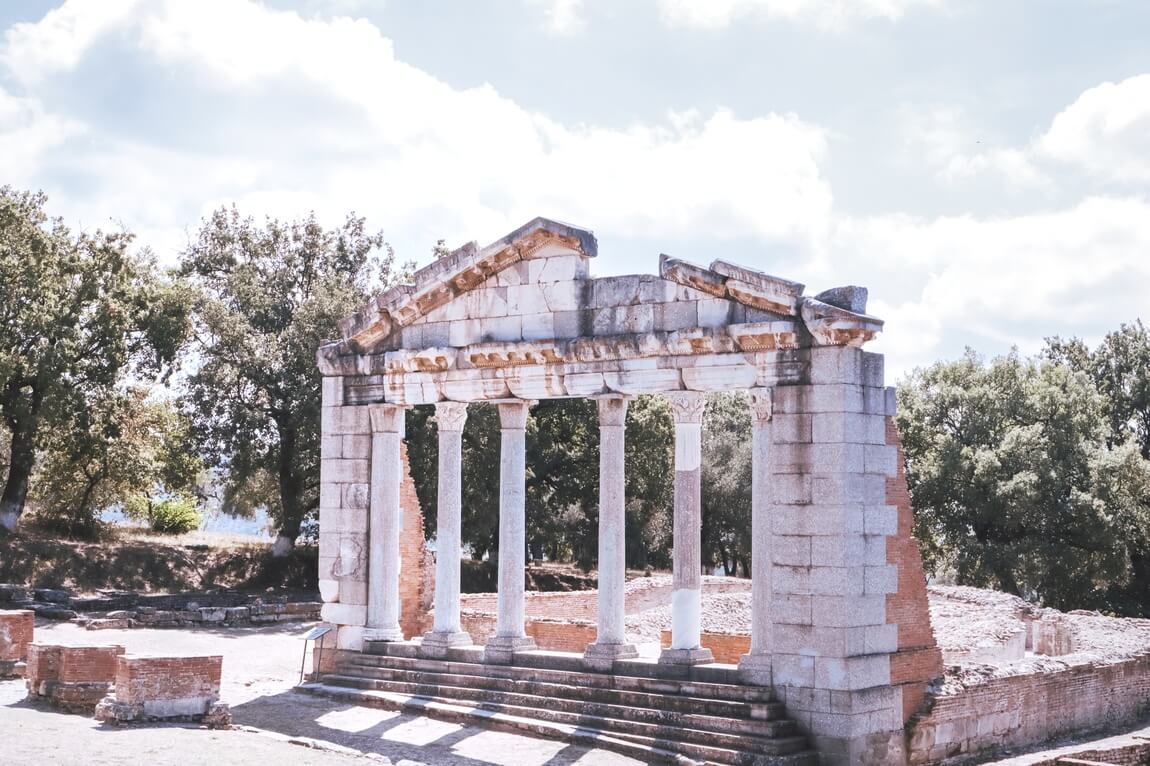
At the site, you can explore a variety of archaeological remains, including:
- Amphitheatre
- Acropolis
- Agora
- City Wall
- Archaeological Museum
- St. Mary’s Church
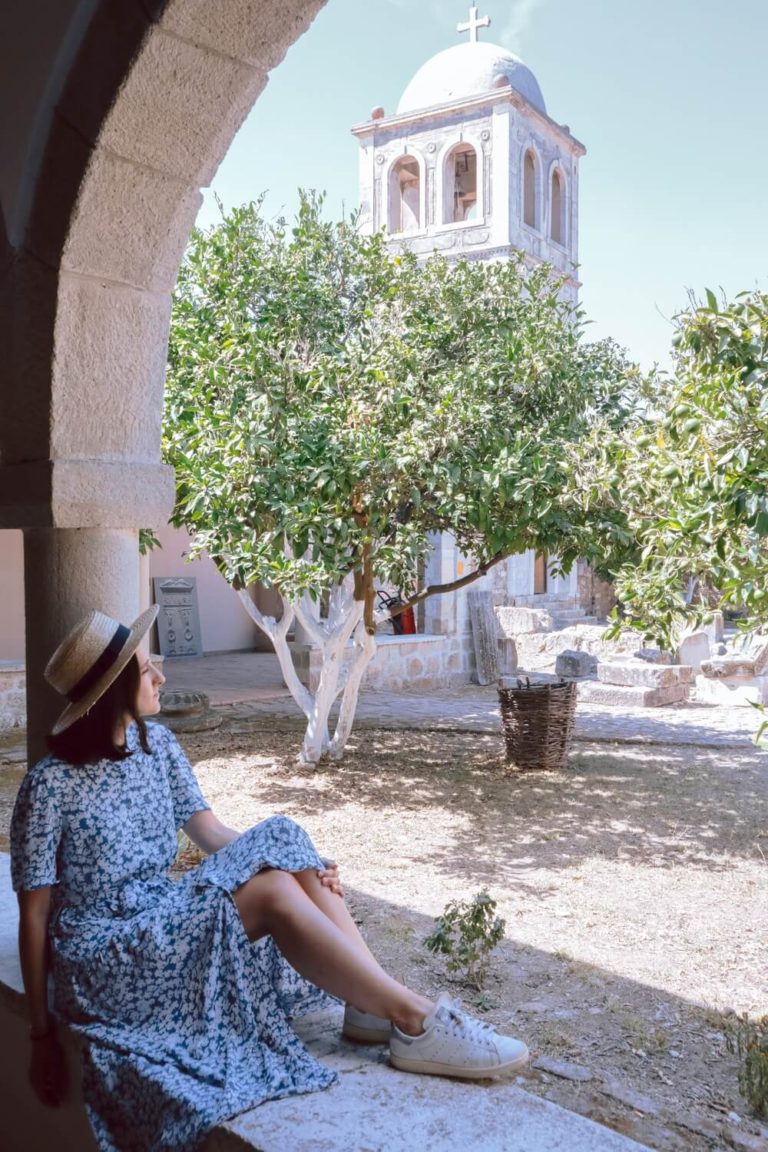
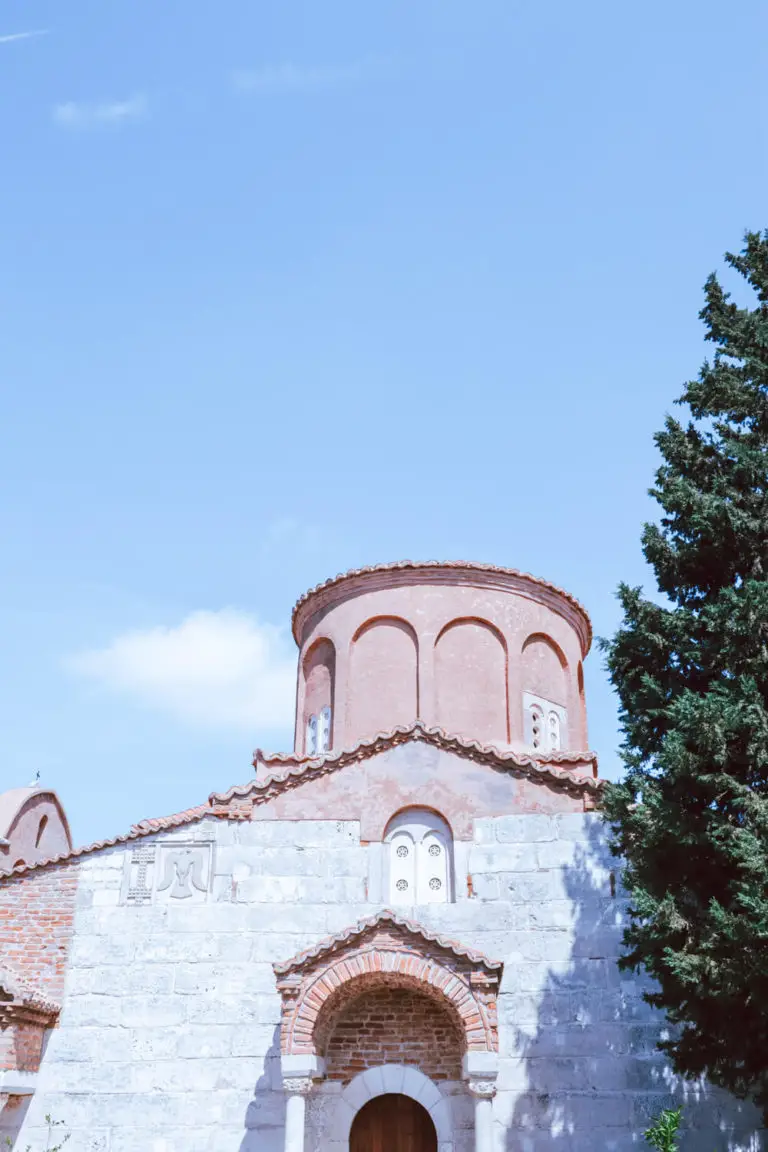
📝 USEFUL INFORMATION: Admission costs 600 LEK (~6€) and opening hours are from 9 am to 6 pm from May to October 15. From October until April, it is open until 4 pm. There is parking available at the site, with an additional lot closer to the entrance.
Alternative version: 10-Day Albania Itinerary for Beach Lovers
Here’s the 10-day Albania itinerary with a few tweaks to allow for more time on the stunning Albanian Riviera.
If you’re looking to enjoy the sun, sand, and coastal vibes, this adjusted route offers plenty of opportunities to relax and explore the best beaches while still discovering the country’s rich history and culture.
- Day 1: Tirana
- Day 2: Tirana – Bovilla Lake – Krujë – Komani Lake
- Day 3: Komani Lake – Berat
- Day 4: Berat – Gjirokastër
- Day 5: Gjirokastër – Blue Eye – Sarandë
- Days 6 to 8: Sarandë & Ksamil
- Day 9 & 10: Head north to Tirana through the Albanian Riviera beaches and towns
Alternative version: 10-Day Albania Itinerary for Nature Lovers
For nature lovers, this alternative 10-day Albania itinerary offers breathtaking landscapes, including the stunning Valbona to Theth hike—one of the country’s most beautiful treks.
Get ready for scenic hikes, rugged mountains, and pristine lakes, all while exploring Albania’s natural beauty at its best!
- Day 1: Tirana
- Day 2: Tirana – Bovilla Lake – Krujë – Komani Lake
- Day 3: Lake Komani – Fierza – Valbona
- Day 4: Hike from Valbona to Theth
- Day 5: Theth
- Day 6: Theth – Shkodër
- Day 7: Shkodër
- Day 8: Shkodër – Gjirokastër
- Day 9: Gjirokastër – Berat
- Day 10: Berat- Tirana
Alternative version: 7-Day Albania Itinerary
If you only have 1 week in Albania, here is a shorter version of this itinerary:
- Day 1: Tirana
- Day 2: Tirana – Bovilla Lake – Krujë – Komani Lake
- Day 3: Komani Lake – Shkodër
- Day 4: Shkodër – Berat
- Day 5: Berat – Gjirokastër – Blue Eye – Sarandë
- Day 6: Sarandë – Butrint – Ksamil – Sarandë
- Day 7: Head north to Tirana through the Albanian Riviera beaches and towns
Restaurants in Albania (by region)
- [Tirana] Era Blloku (€): Tasty traditional Albanian dishes at very affordable prices.
- [Tirana] Tartuf Shop (€€): specialising in truffle dishes. Absolutely delicious with affordable prices.
- [Durrës] Spaghetteria Luli (€): Very affordable prices and the speciality is pasta. Very simple space, but everything was great.
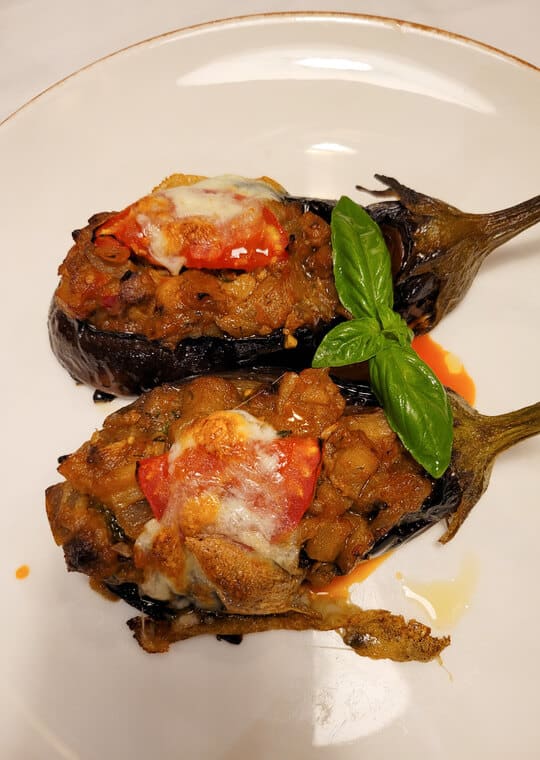
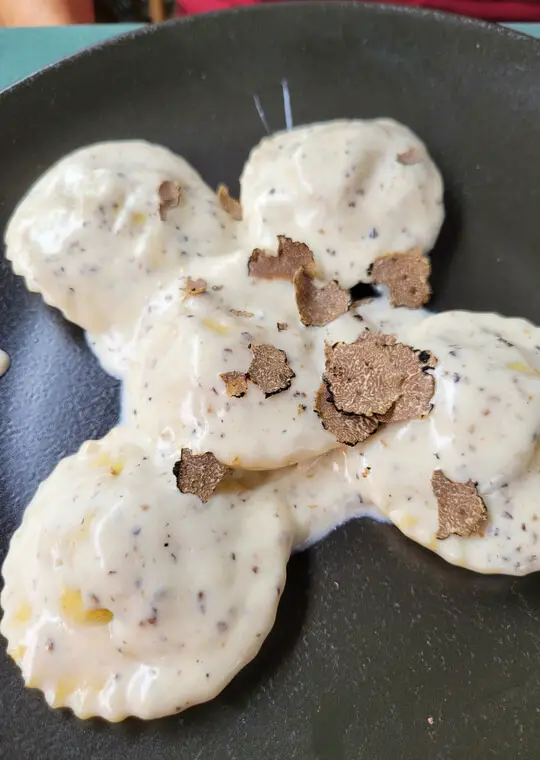
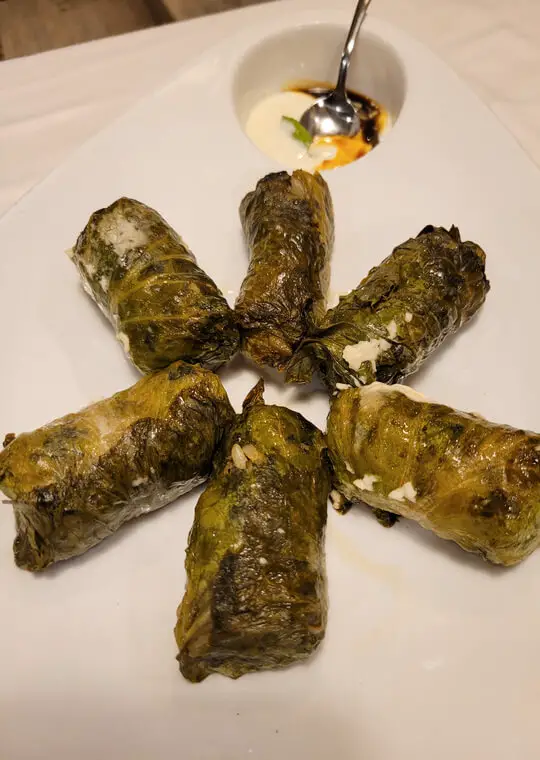
- [Shkodër] Tradita Geg & Tosk (€€): Very pleasant outdoor space. Typical restaurant with very friendly service and live music.
- [Berat] Tradita e Beratit (€€): Lovely outdoor space and tasting menu of typical regional products. Everything was perfect.
- [Gjirokastër] Check-in (€): Amazing traditional Albanian dishes. I tried the qifqi and chicken pie which were great.
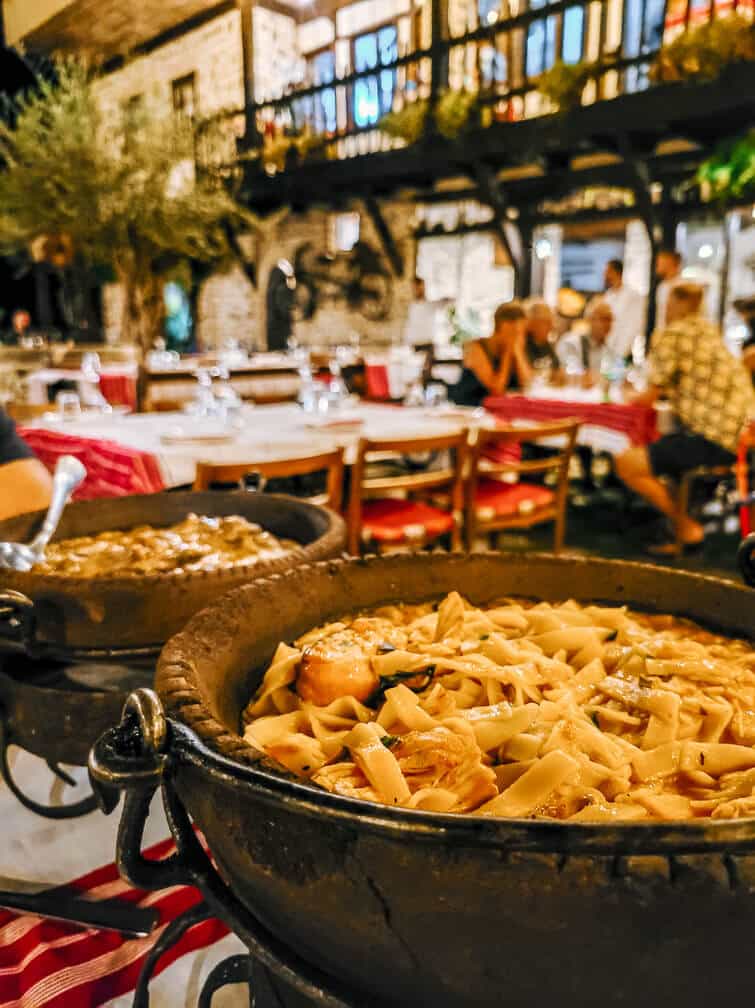
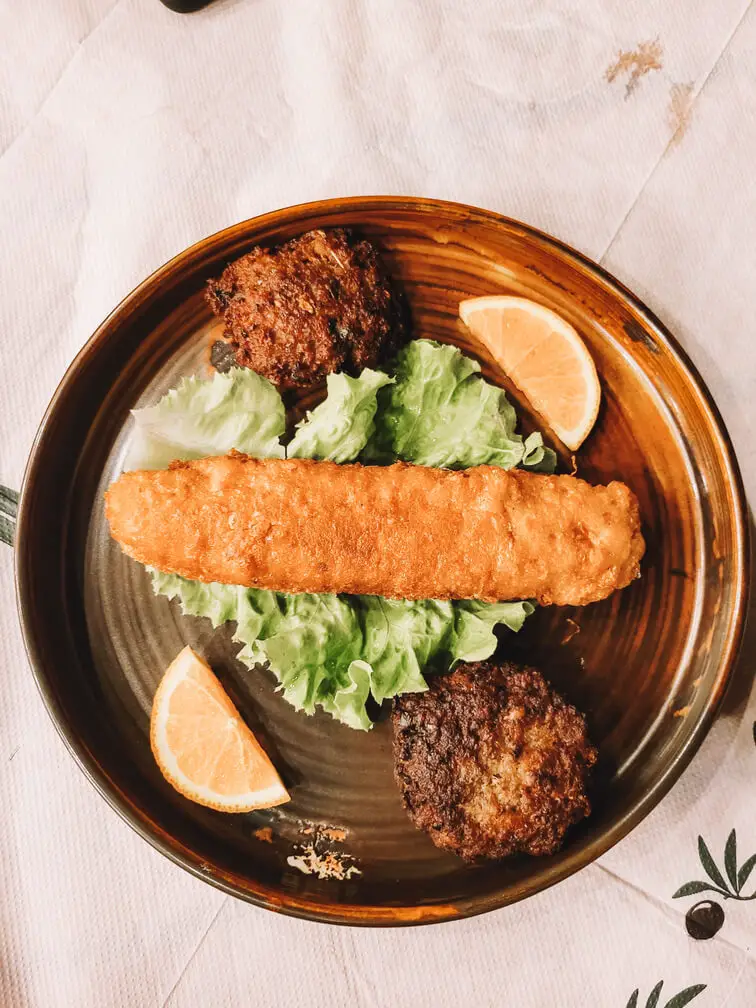
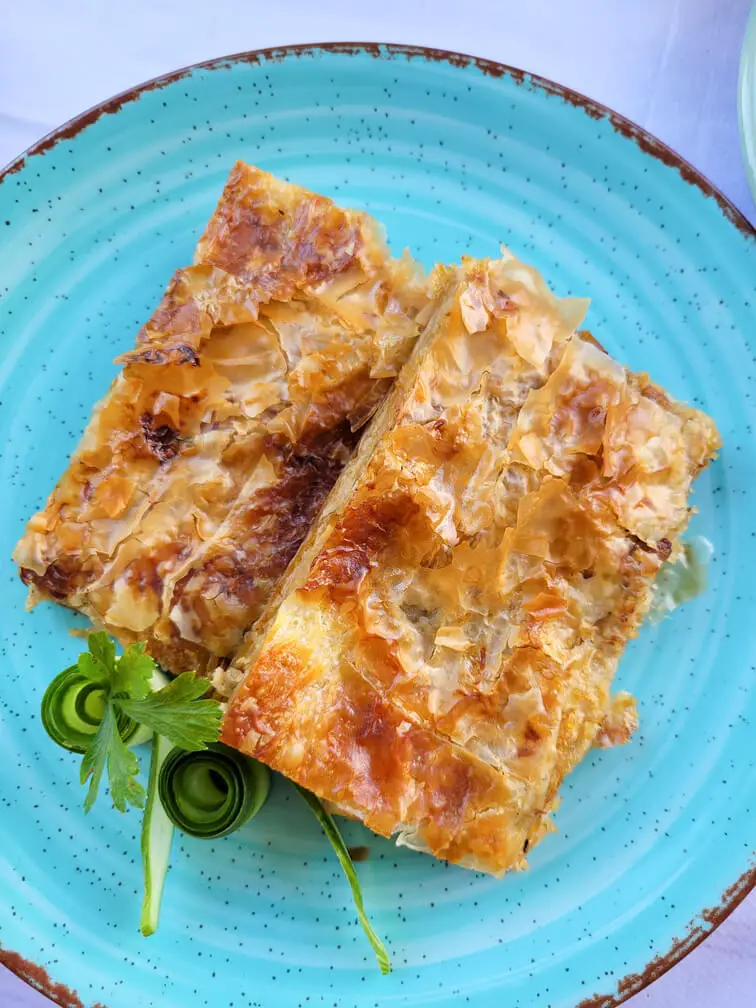
- [Sarandë] Oda e Babes (€€): a true gastronomic experience. Every meal has to be started with a plate of 14 typical starters and then there is the menu of the day. Friendly service and tasty food.
- [Sarandë] Fish Restaurant Black Marlin (€€): We tried the prawn risotto with truffle and another prawn risotto with courgette and they were both very tasty. The space is modern and the prices are affordable.
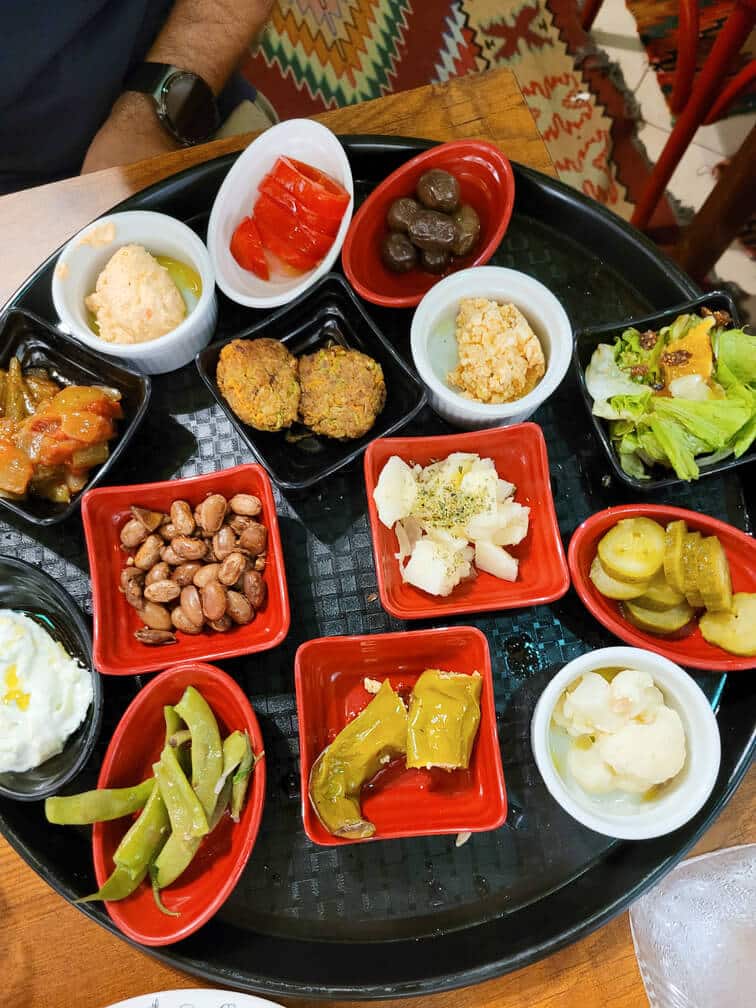
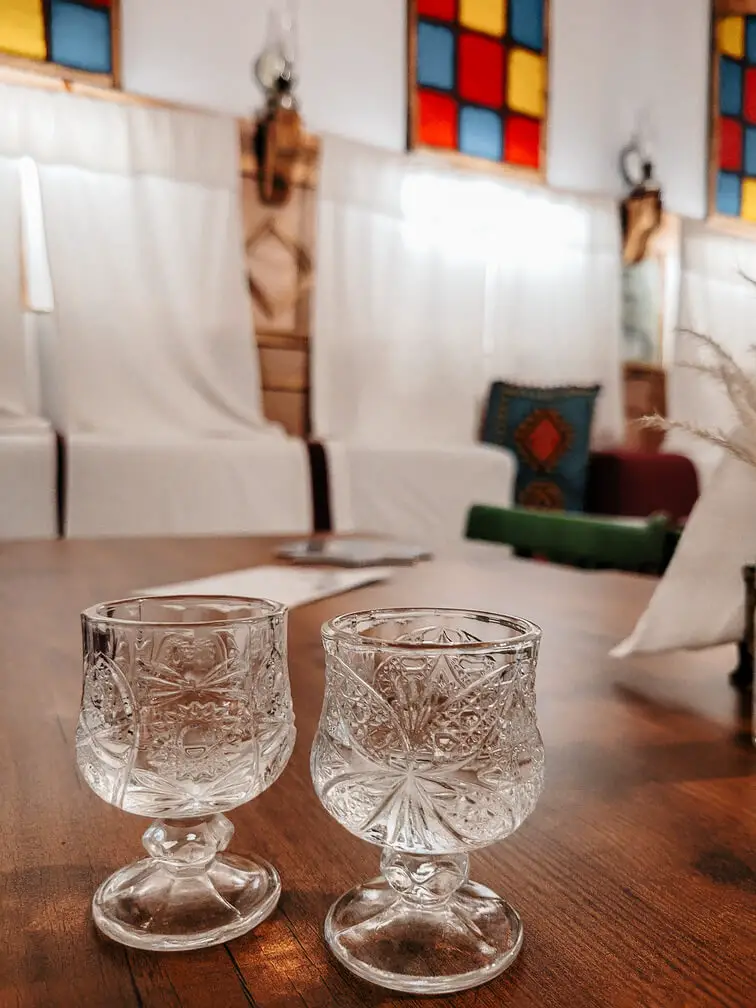
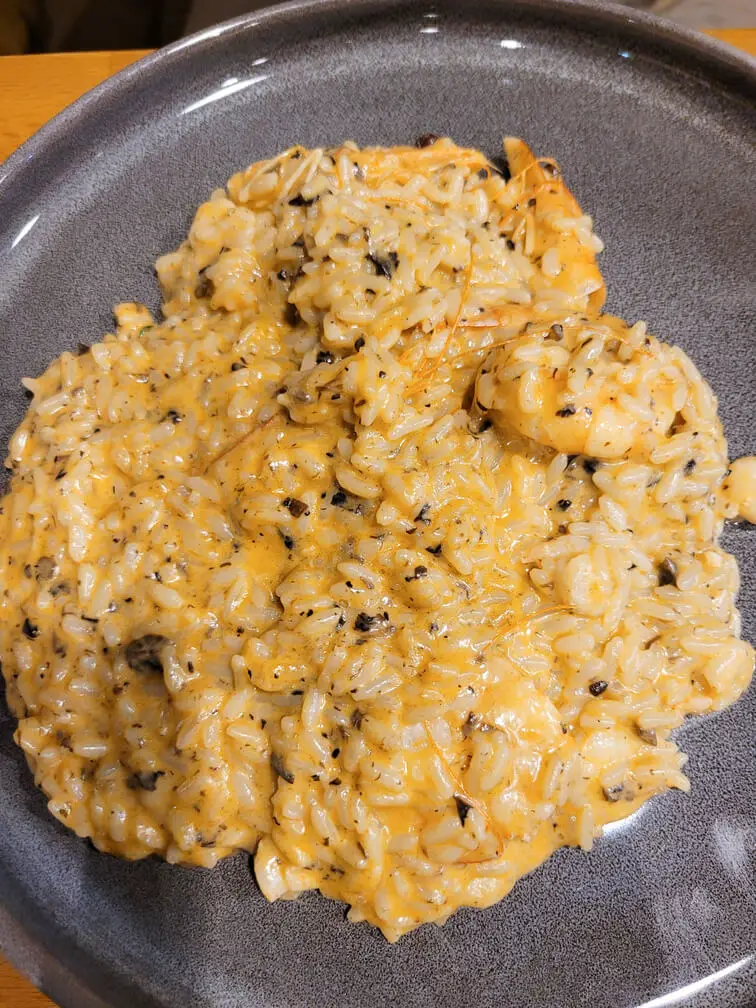
- [Himarë] To Steki Sti Gonia (€): typical Greek restaurant right by the beach and everything was great.
- [Dhërmi] Luciano (€€€): despite being the most expensive meal in Albania and the space being a bit of a party space, the food was quite tasty. We tried the risotto.
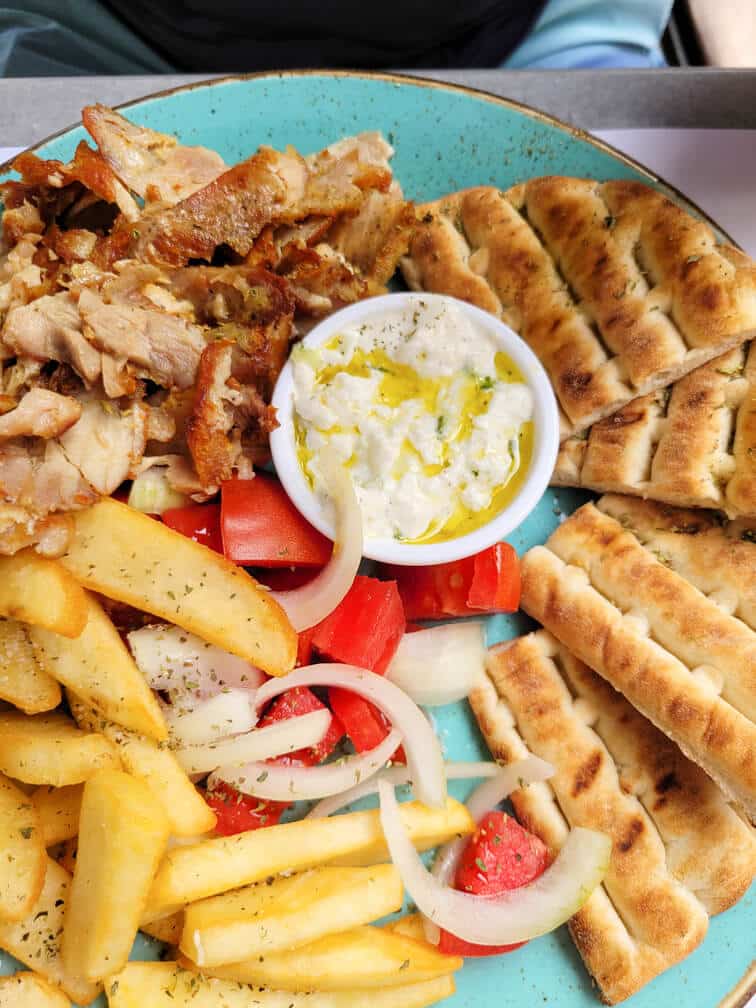
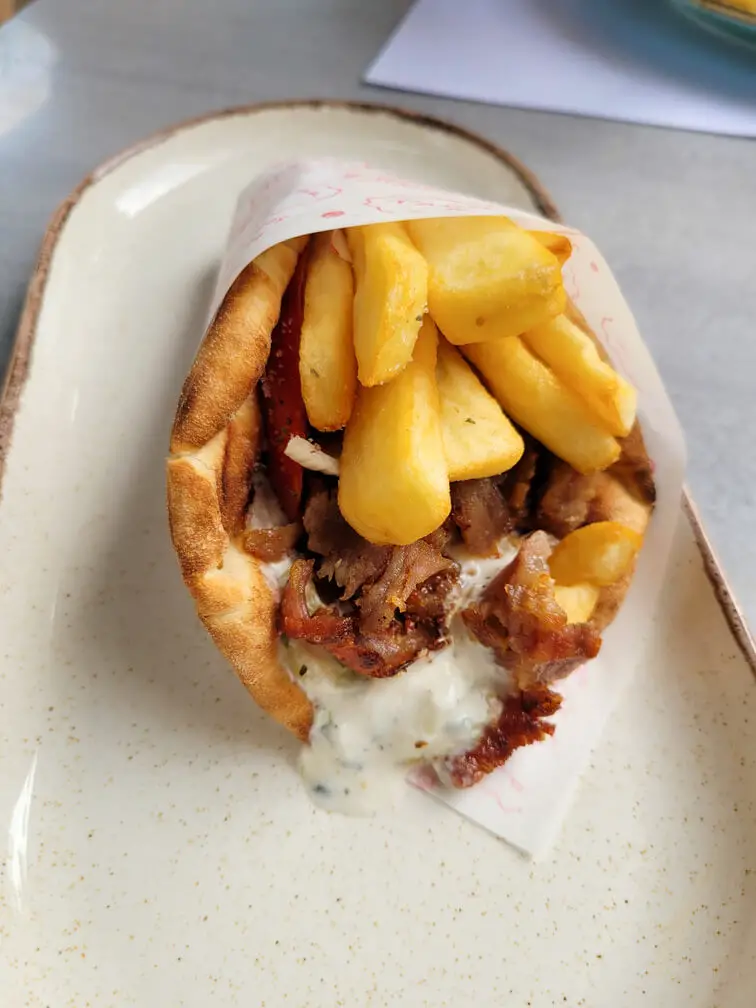
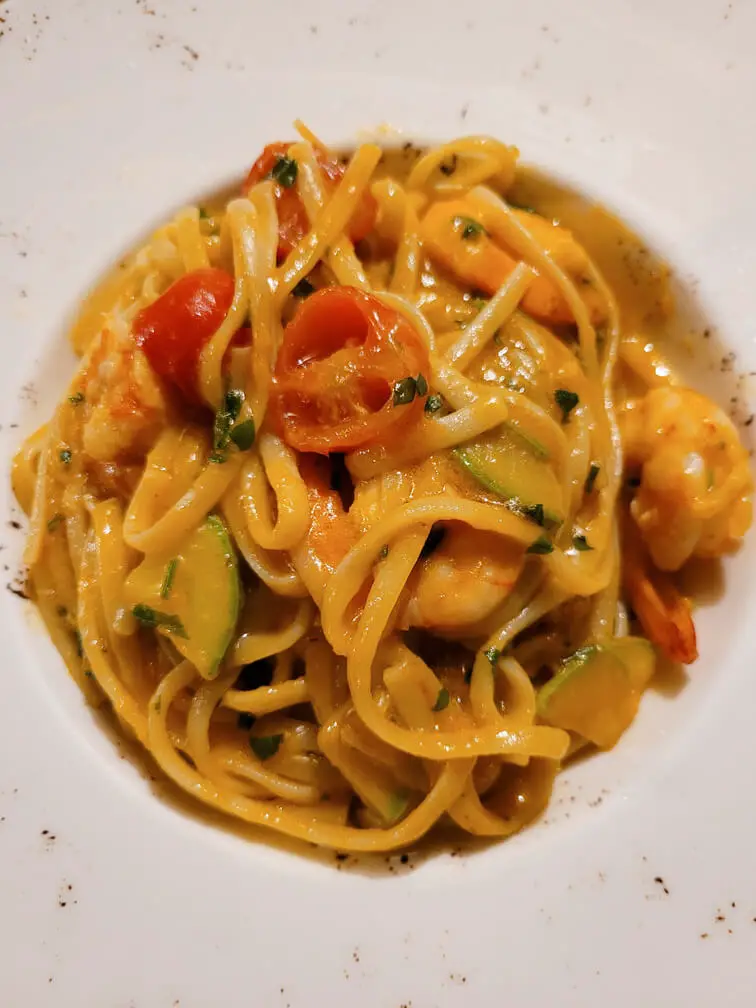
Must-try typical dishes in Albania
I arrived in Albania with high expectations for its gastronomy, having heard and read so much about it. I’m happy to say, it did not disappoint!
Albanian cuisine is truly exceptional, offering rich flavours and unique dishes that reflect the country’s diverse culture and history.
Here are some must-try dishes you should enjoy during your next visit to Albania:
- Byrek – a kind of puff pastry that can have various fillings (the most common being spinach and ricotta).
- Qofte – a kind of meatball, but with a slight mint flavour.
- Imam Bajaldi – Aubergine stuffed with vegetables, although it can be stuffed with other ingredients. Very good 😉
- Sarme – cabbage stuffed with meat and rice. One of my favourite Albanian dishes!
- Qifqi – traditional of Gjirokastër and consists of small balls made of rice.
- Tave Mishi – a plate of various grilled meats.
- Tava e Kosit – a dish that goes in the oven with lamb, eggs and yoghurt.
- Petulla – a kind of “pancake”. Served often at breakfast.
- Baklava – a Turkish dessert, but also very popular in Albania. It is quite sweet.
- Raki – alcoholic drink typical of Albania.
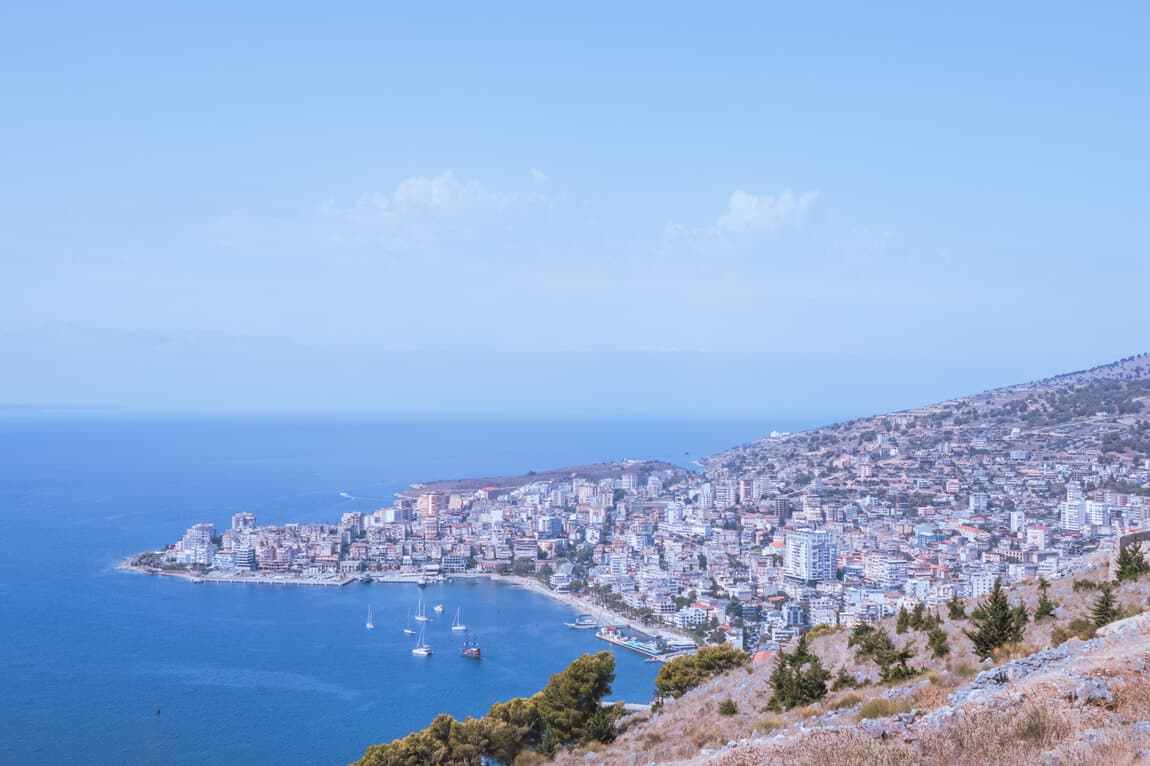
Final Thoughts on Albania
Albania truly exceeded my expectations, offering a perfect mix of rich history, stunning landscapes, and delicious food.
Whether you’re exploring the ancient ruins, wandering through picturesque villages, or enjoying the serene beauty of the Albanian Riviera, there’s no shortage of things to do in Albania.
From the bustling streets of Tirana to the tranquil waters of Lake Komani, each day of your Albania itinerary offers something unique and memorable.
An Albania road trip is the best way to experience it all, allowing you to take in the breathtaking views at your own pace. The country’s diverse regions—from the lush mountains to the sparkling beaches—are waiting to be explored.
Have you been to Albania or are you planning a trip soon? I’d love to hear your thoughts and experiences! Drop a comment below and let’s chat about your favourite spots in Albania or your dream itinerary!
Disclaimer: this post may contain some affiliate links, which means I get a small commission if you buy something through my links. This doesn’t represent any additional cost to you and you’ll be supporting my work here on the blog😊

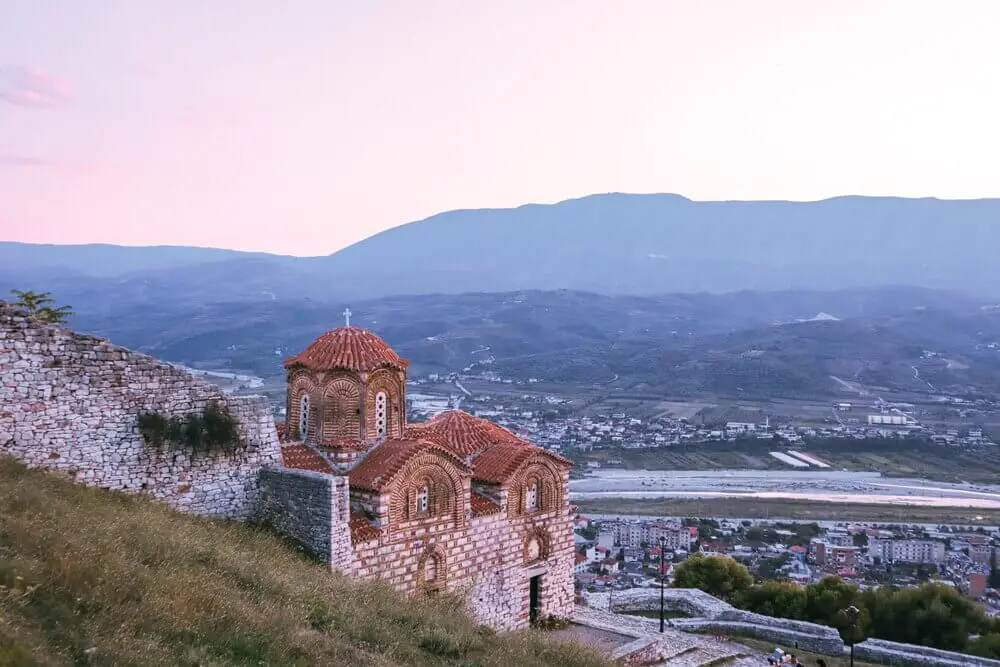



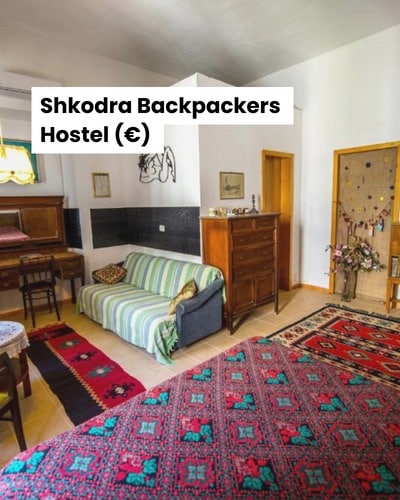

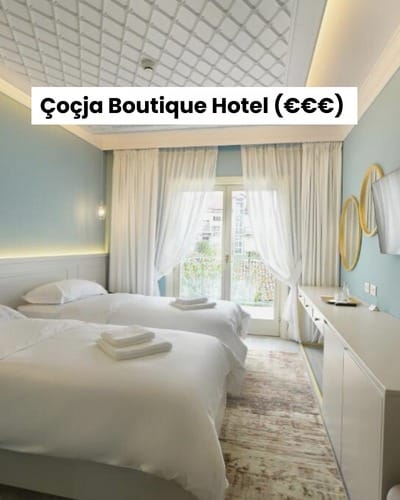
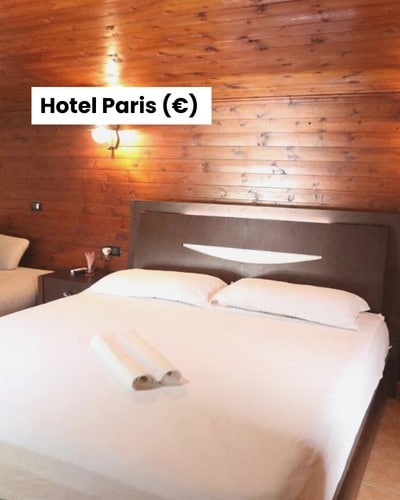
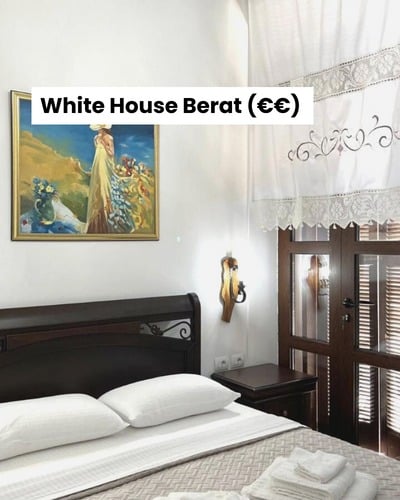
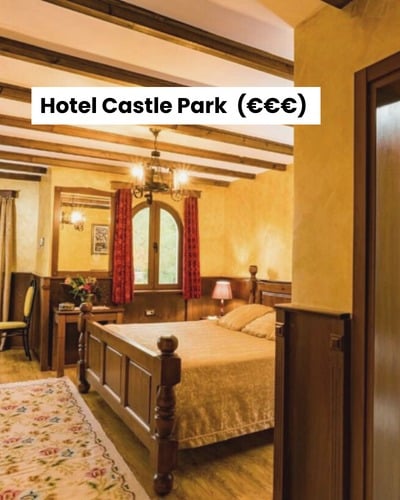








Hello Mariana! Thank you for making such a wonderful travel blog. I really appreciate this on point detailed guide. I wanna share the website https://www.holidayhare.com/country/albania I use to check info about countries, cities, weather, visa req. etc before I travel hope this helps 🙂
Thank you for your comment! I am glad you enjoyed the detailed guide 🙂 Mariana